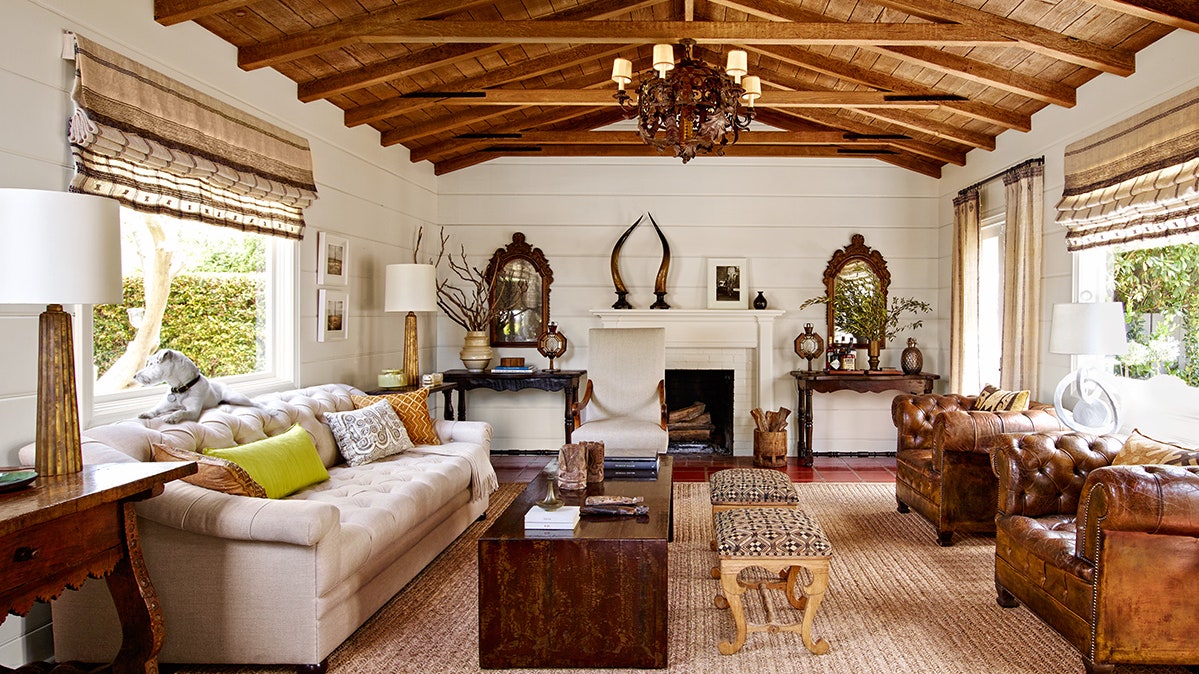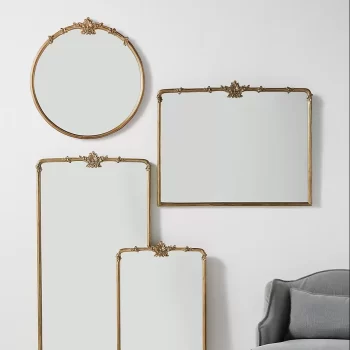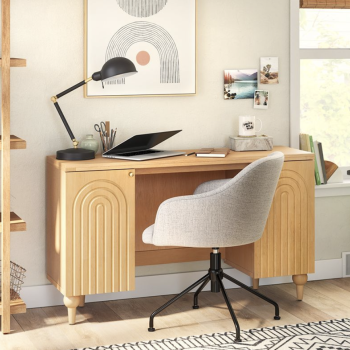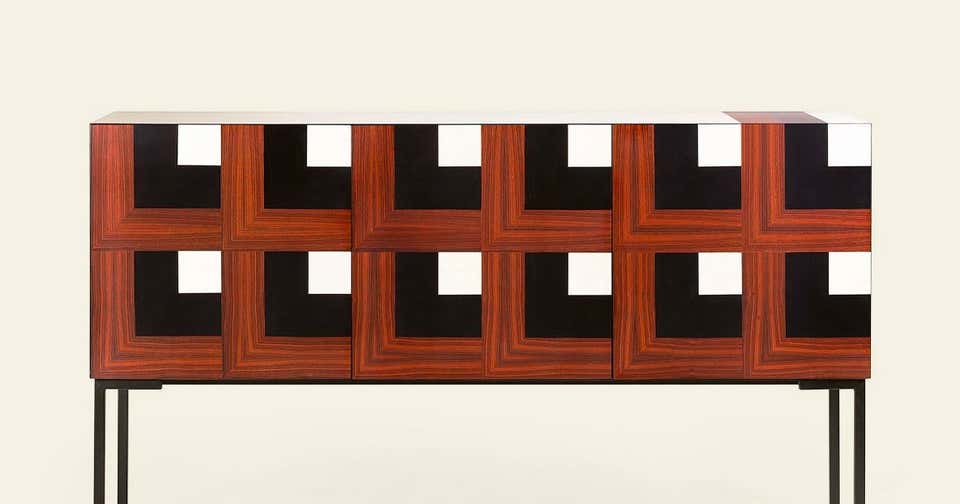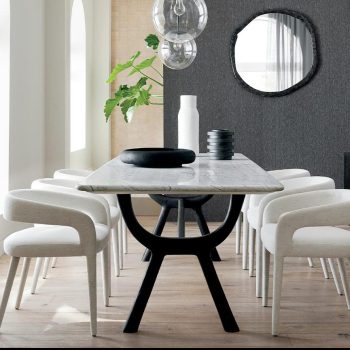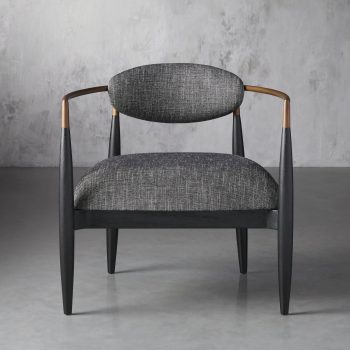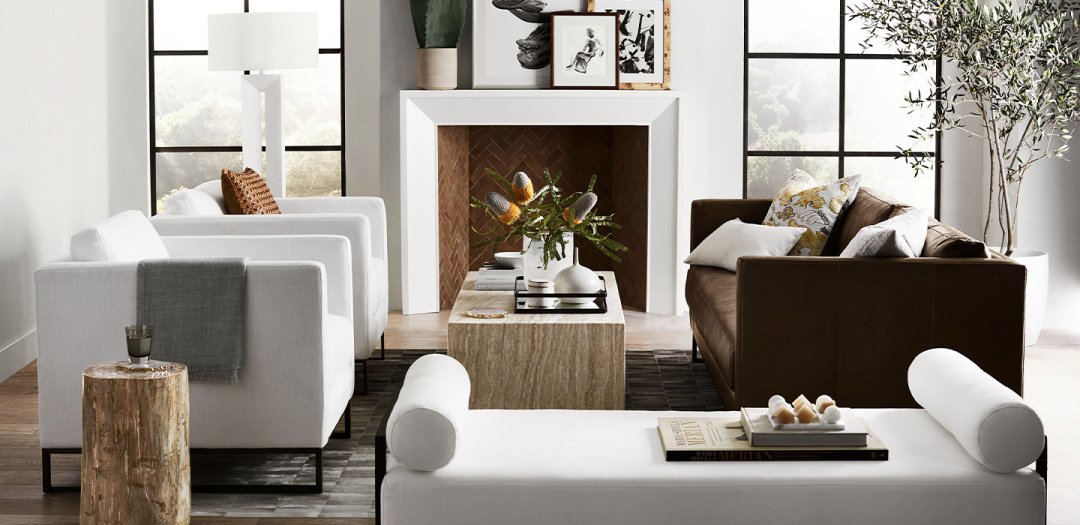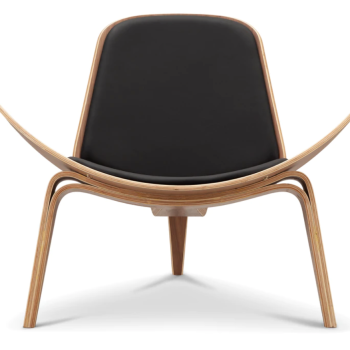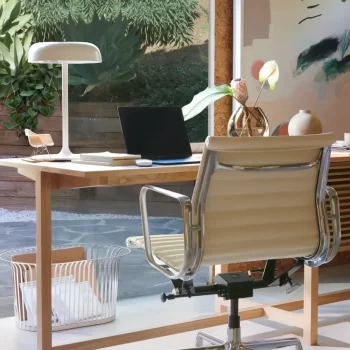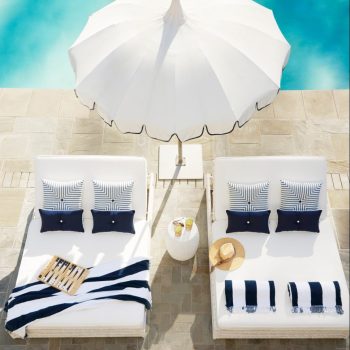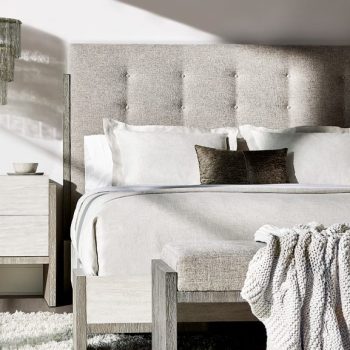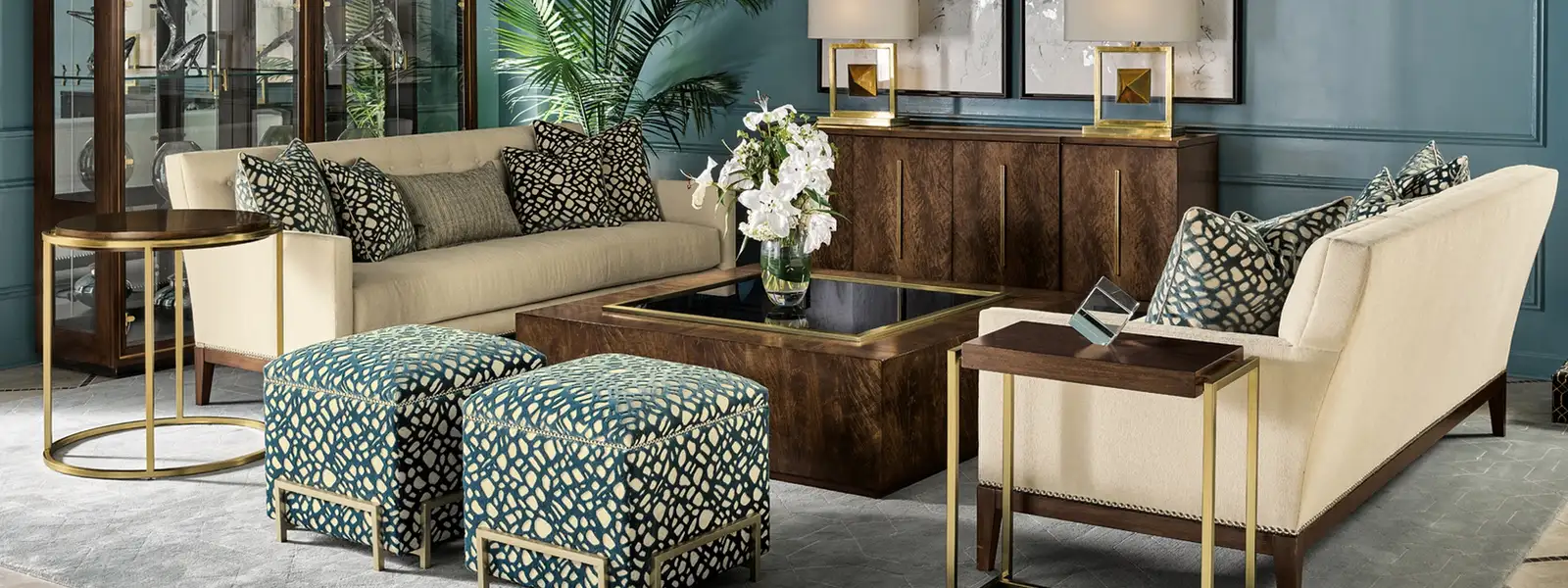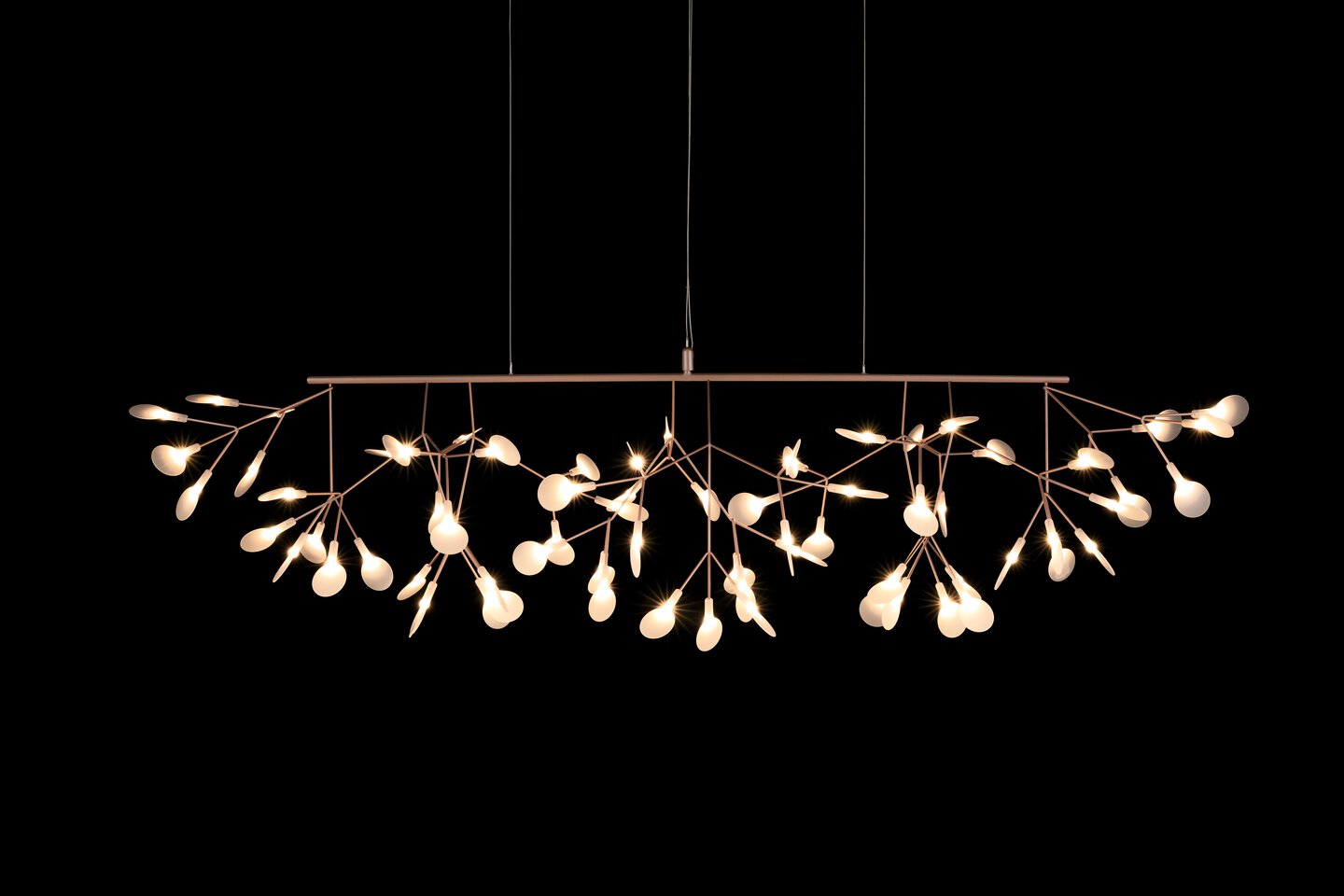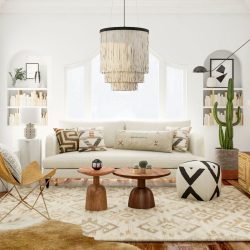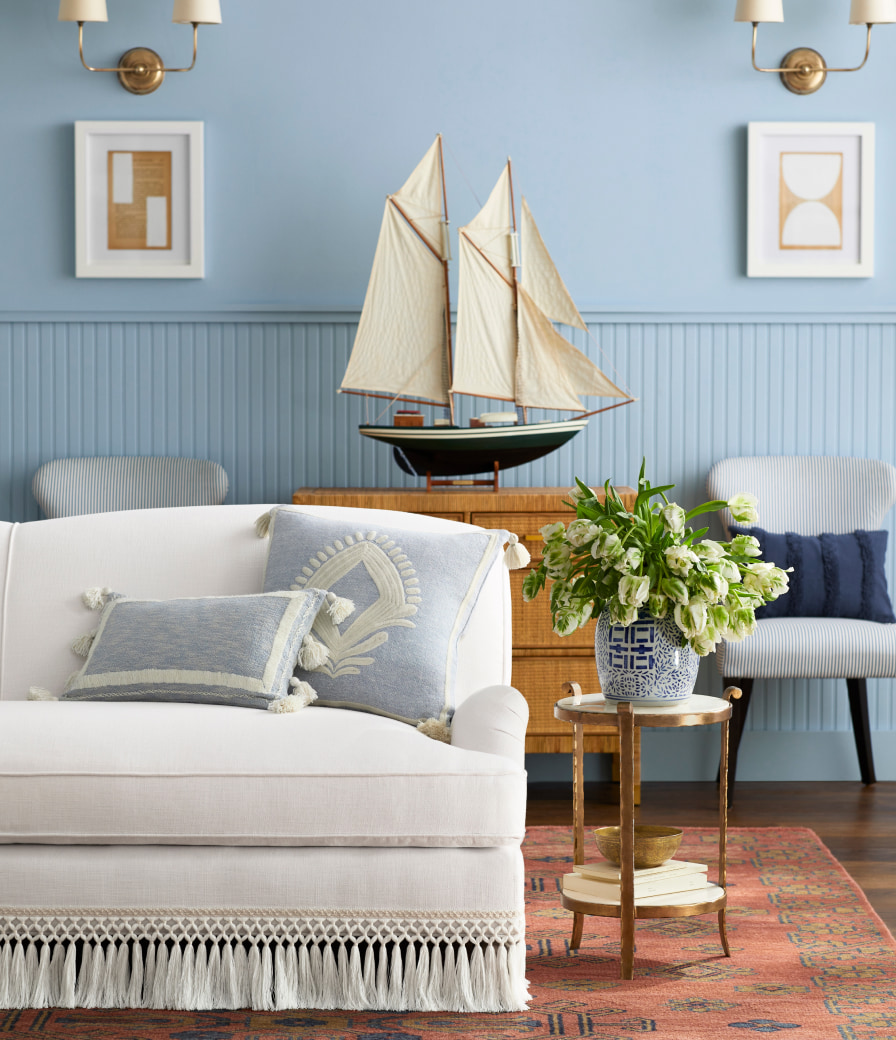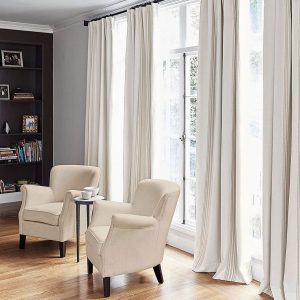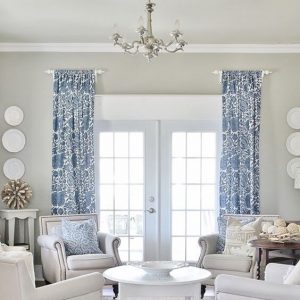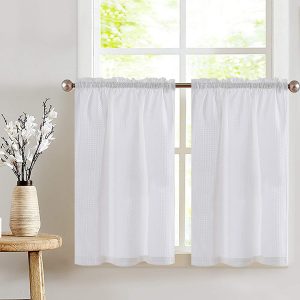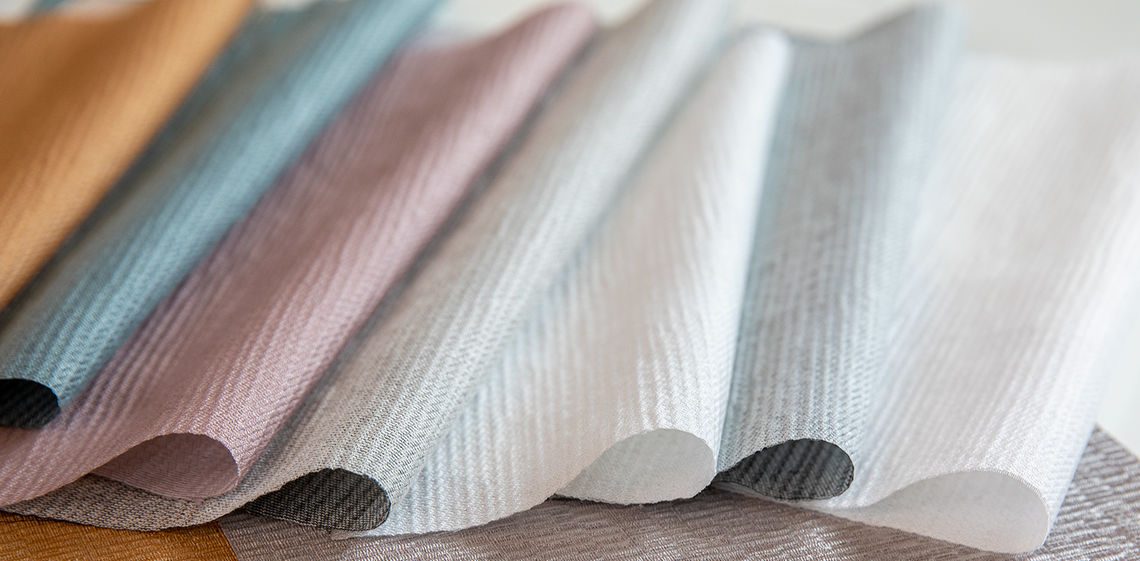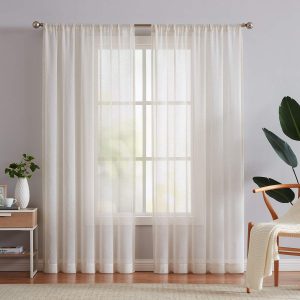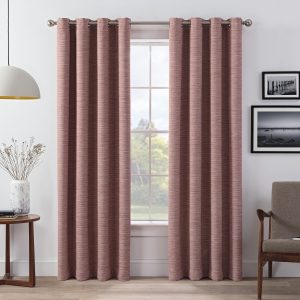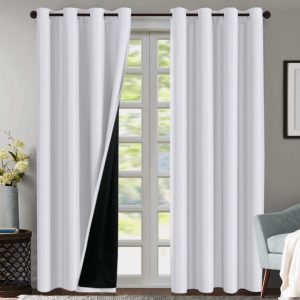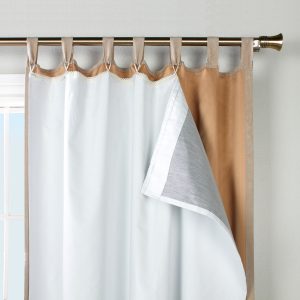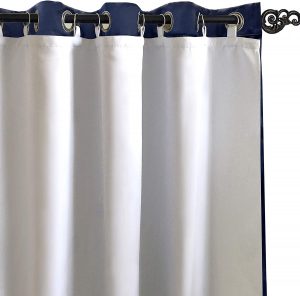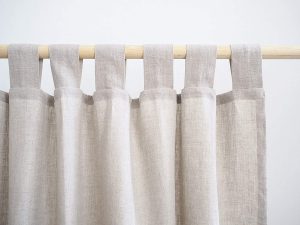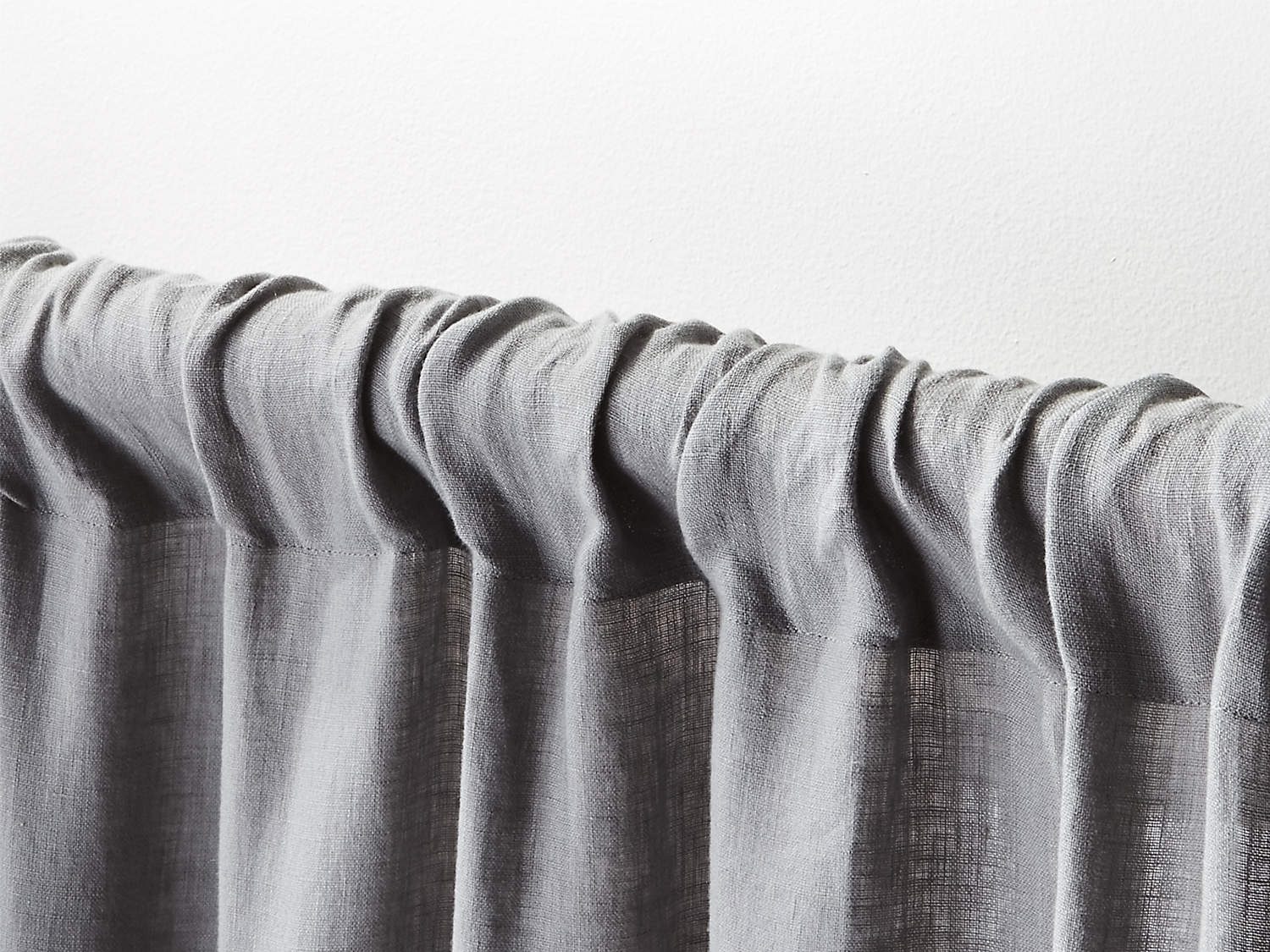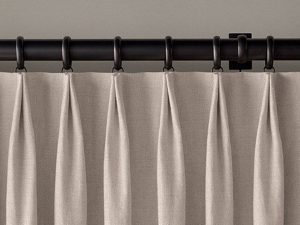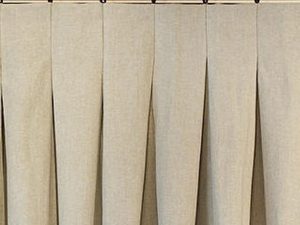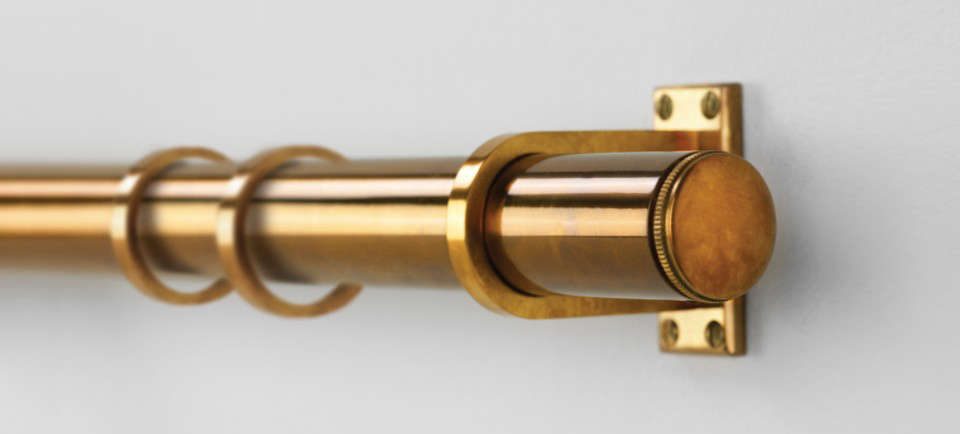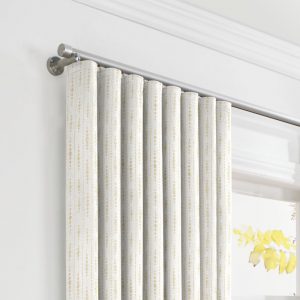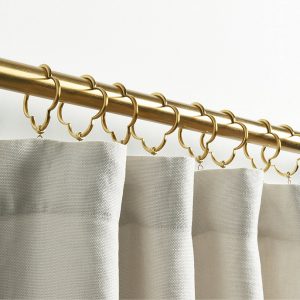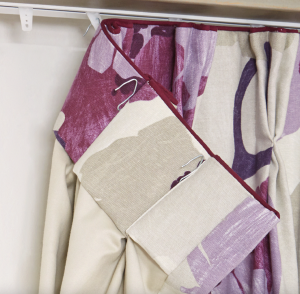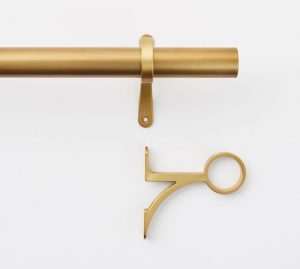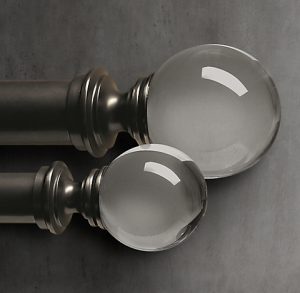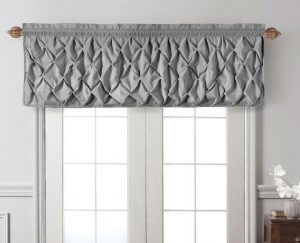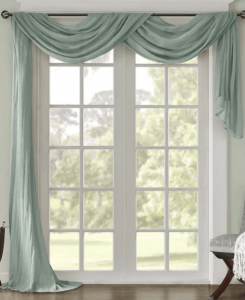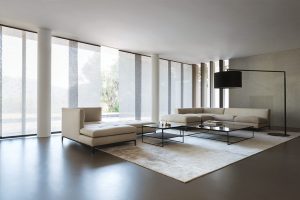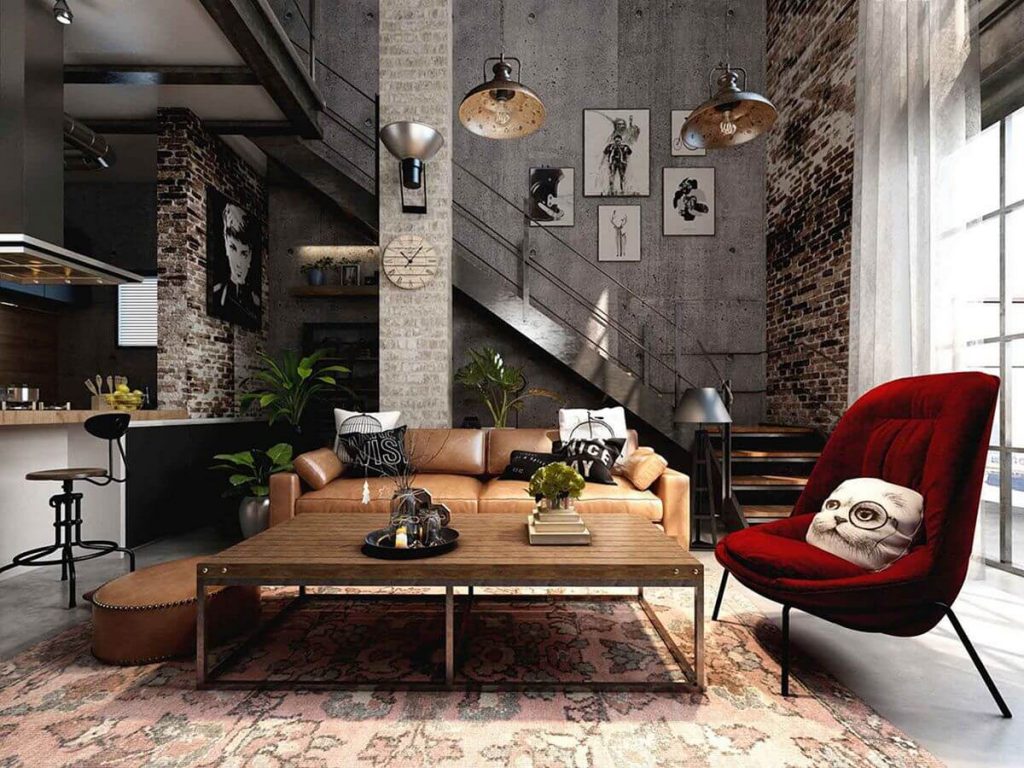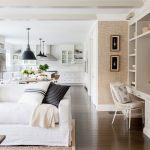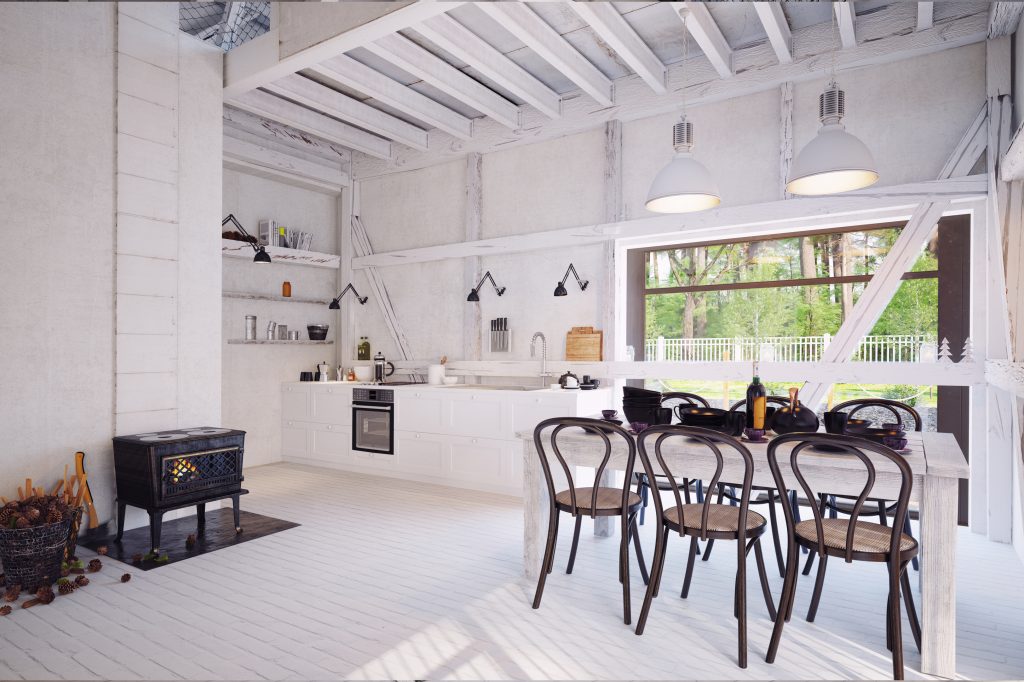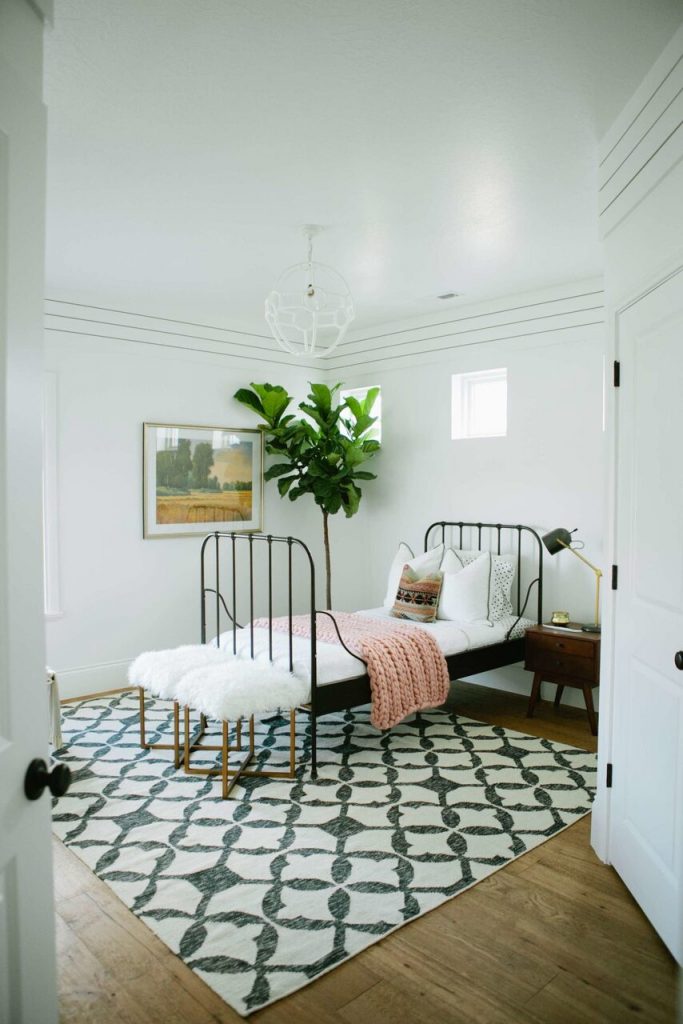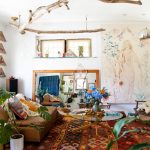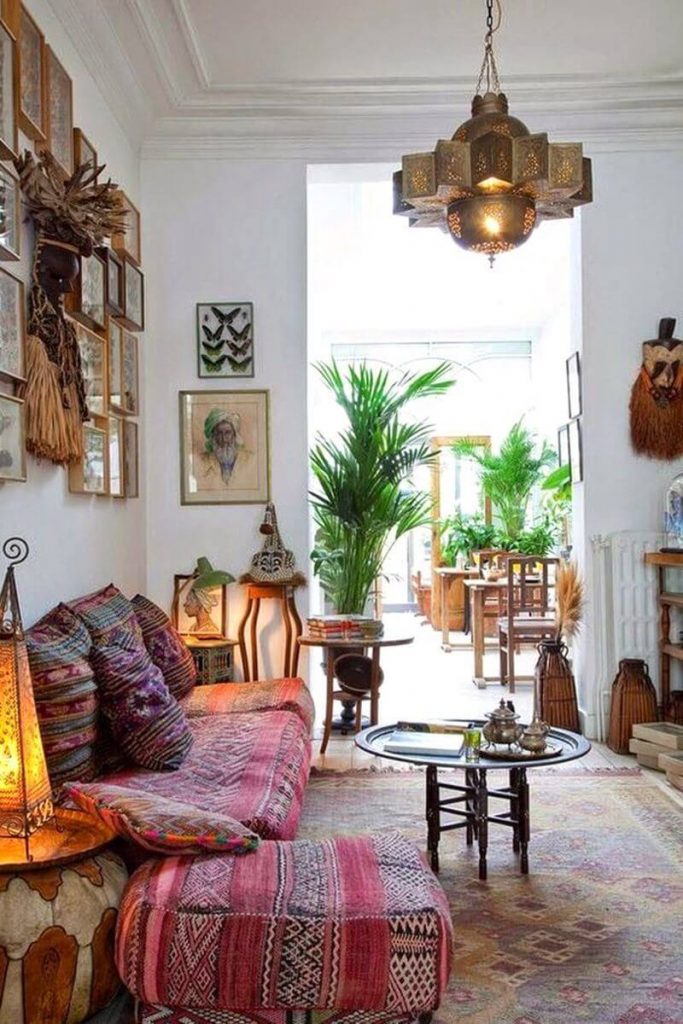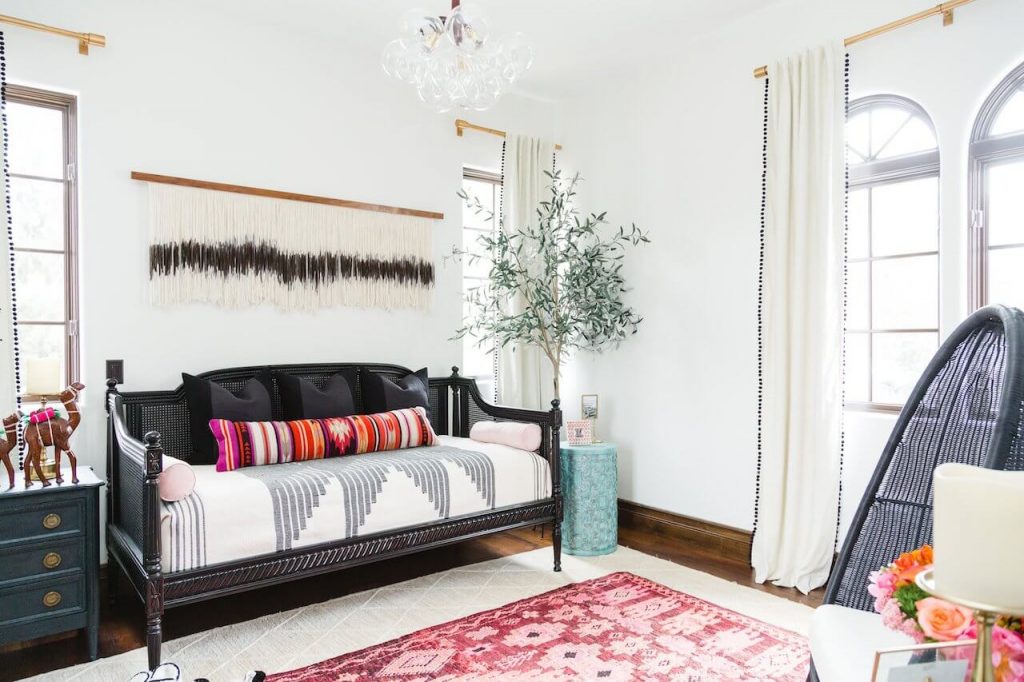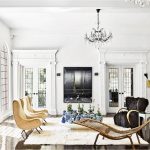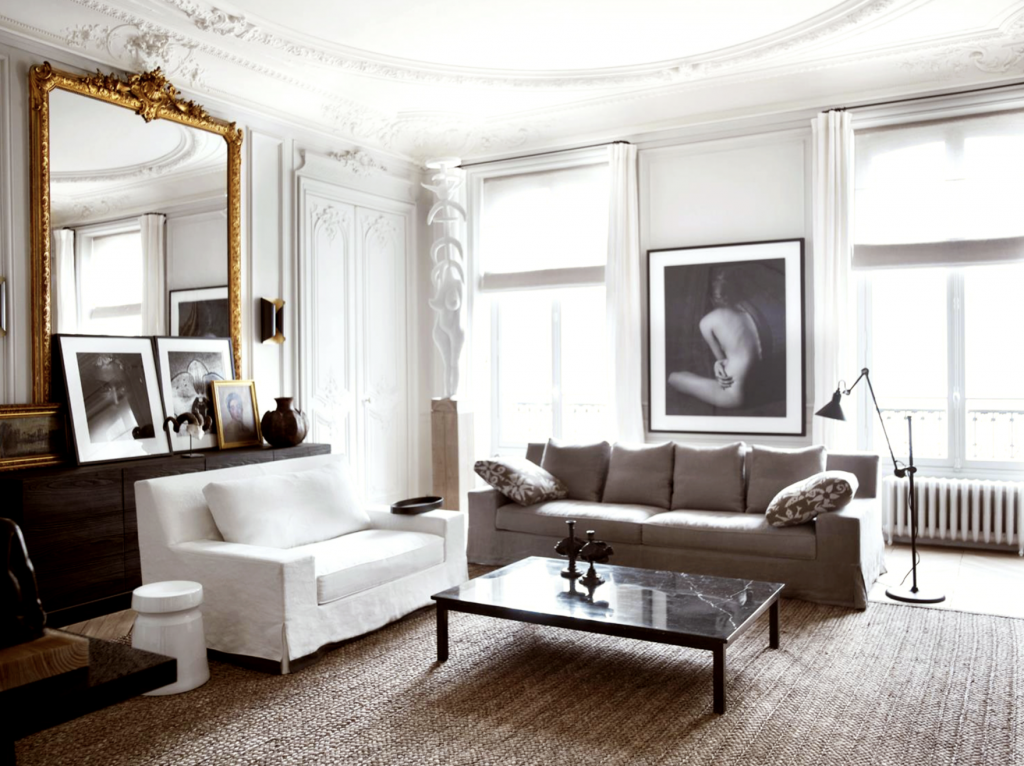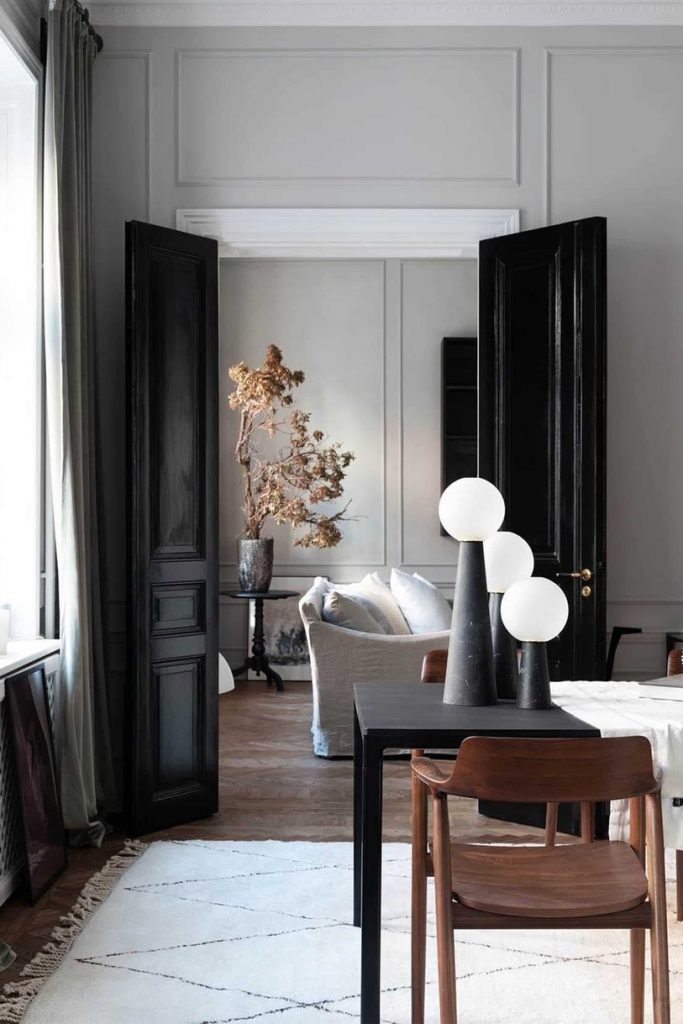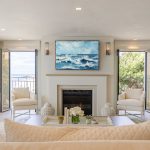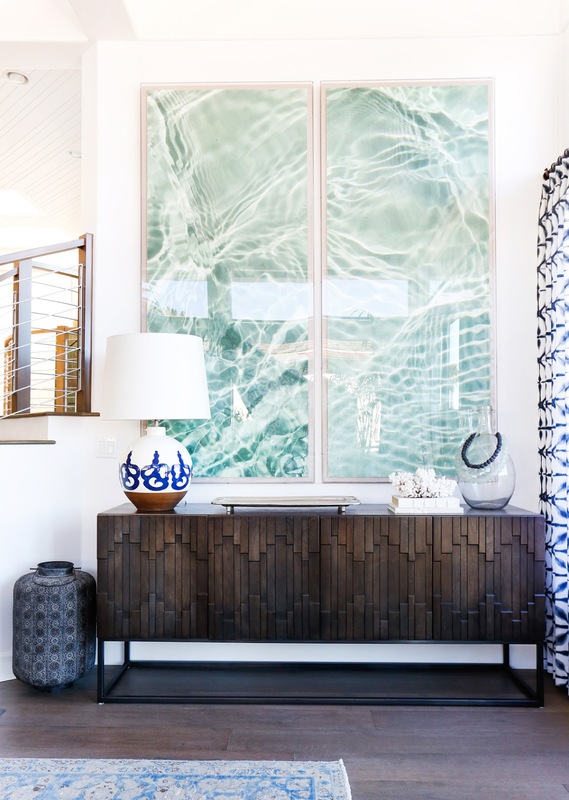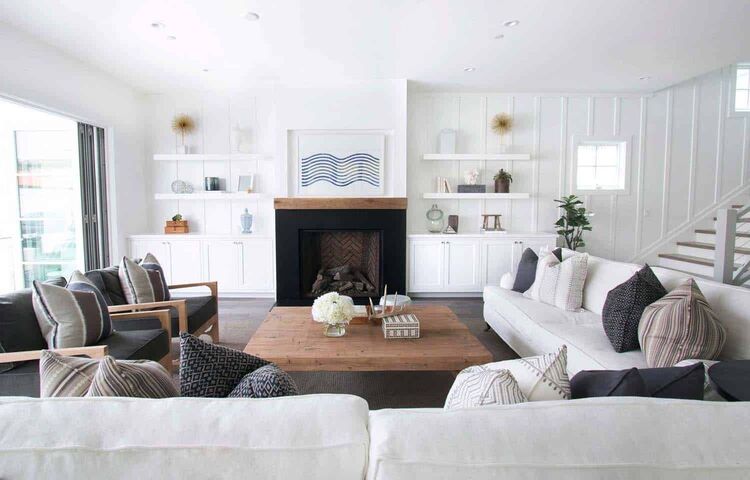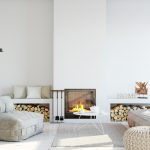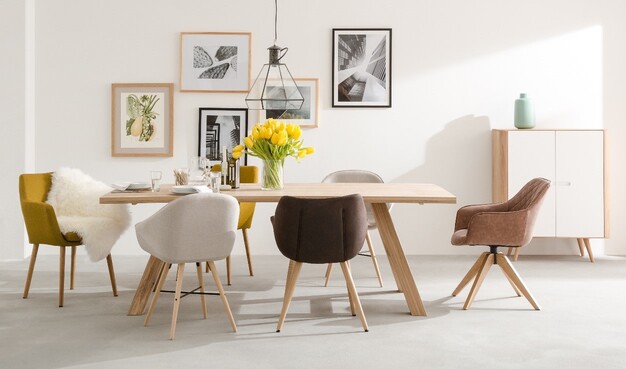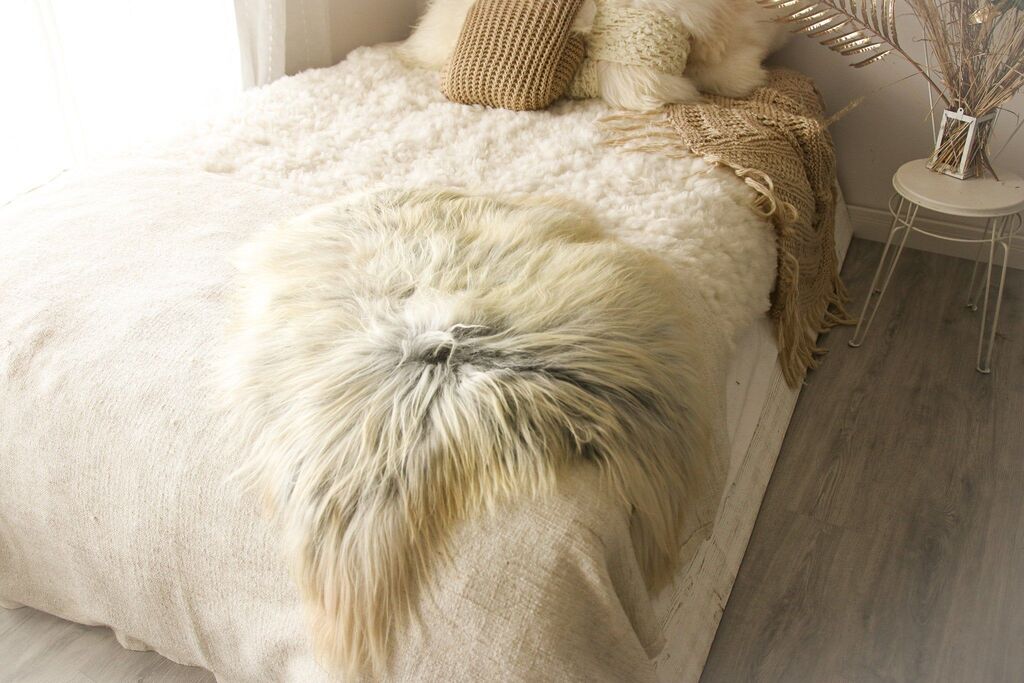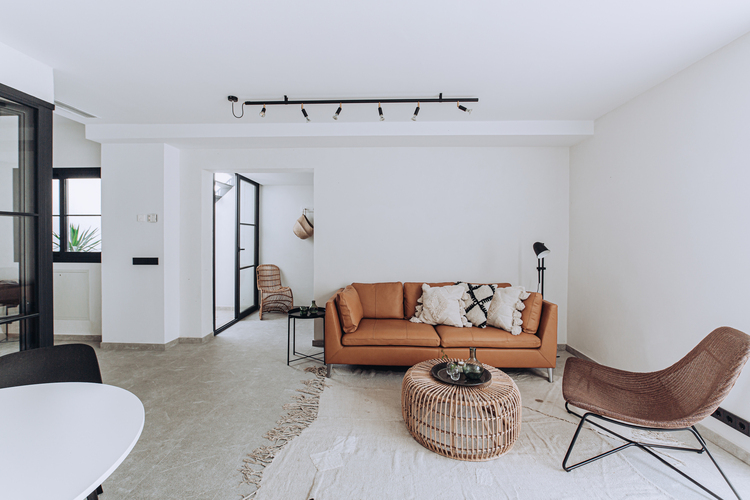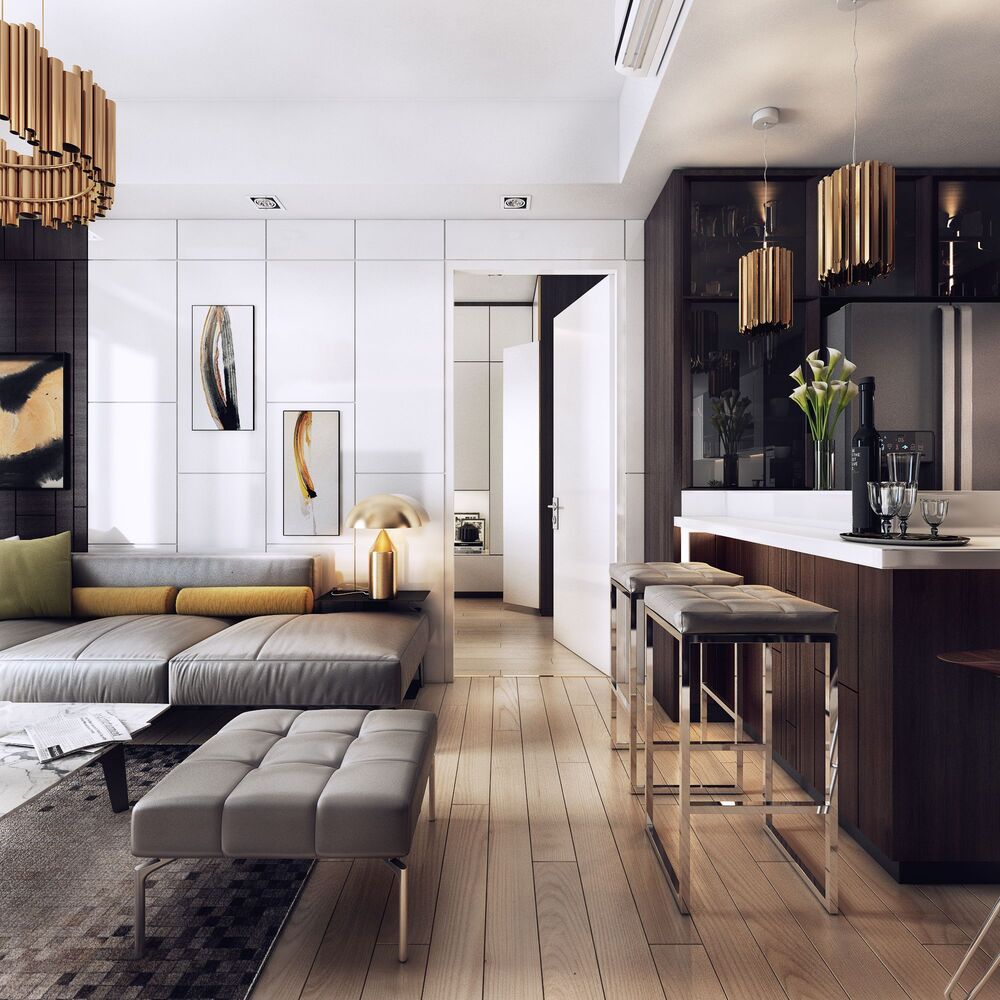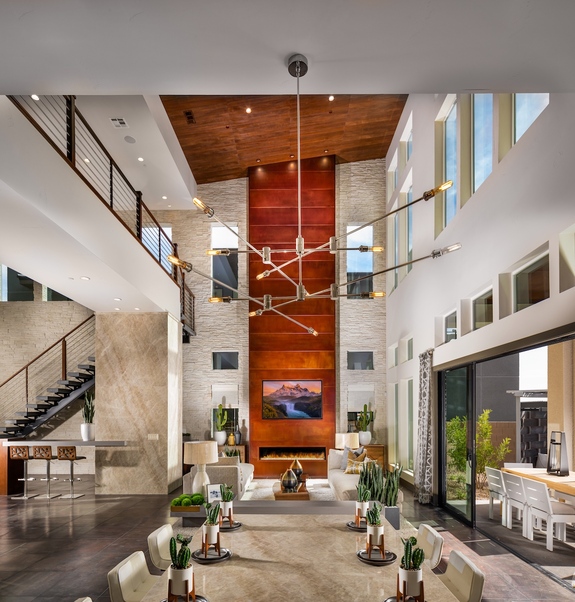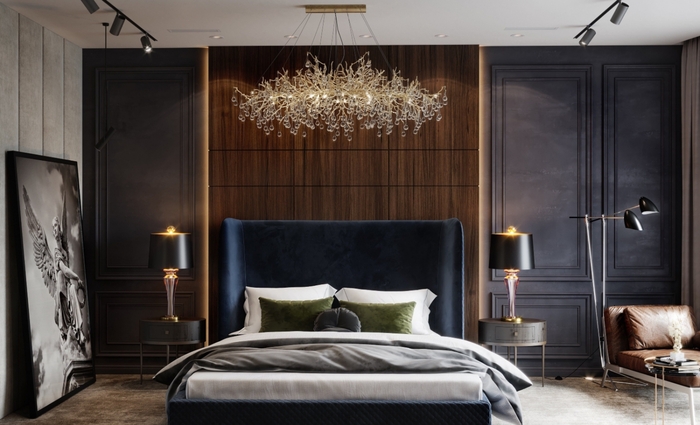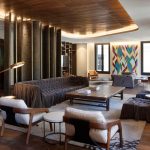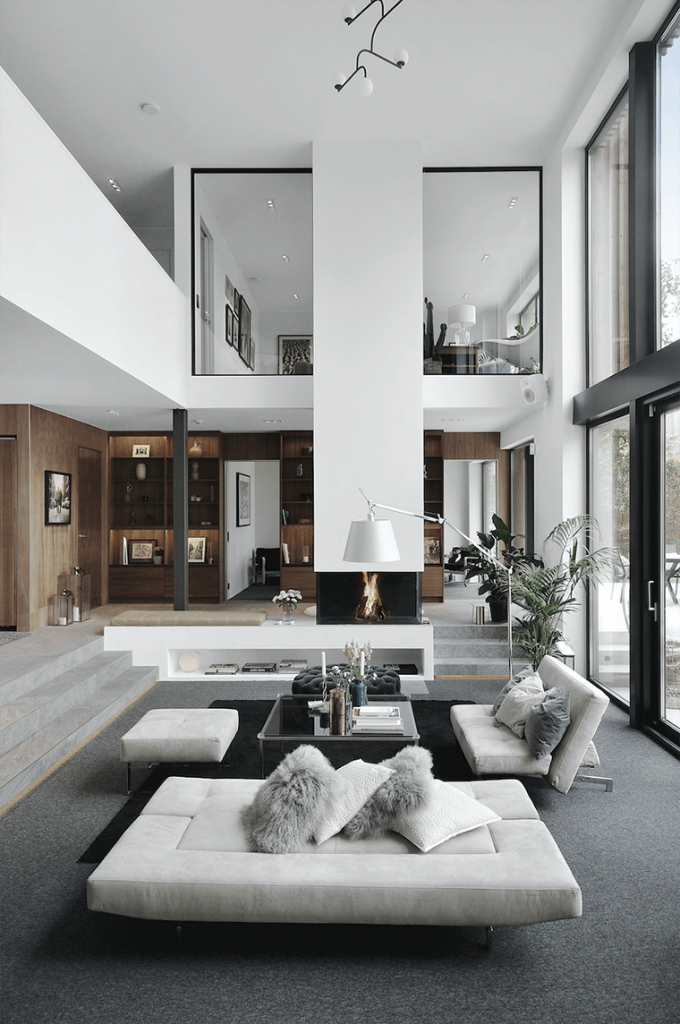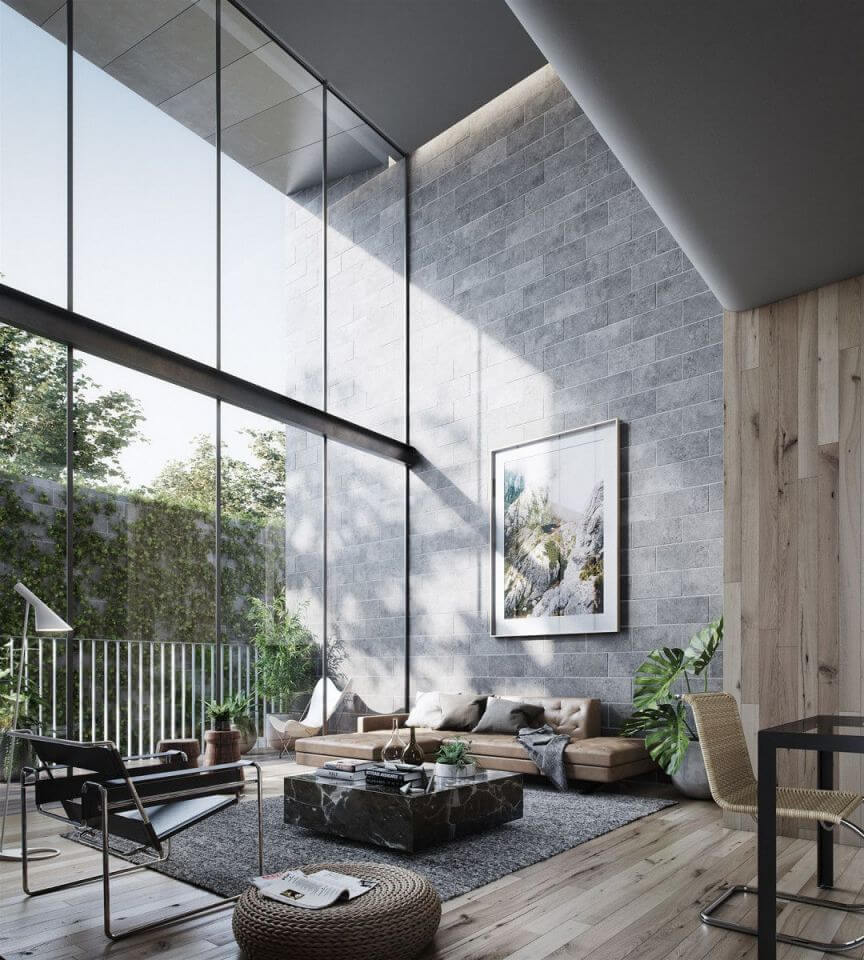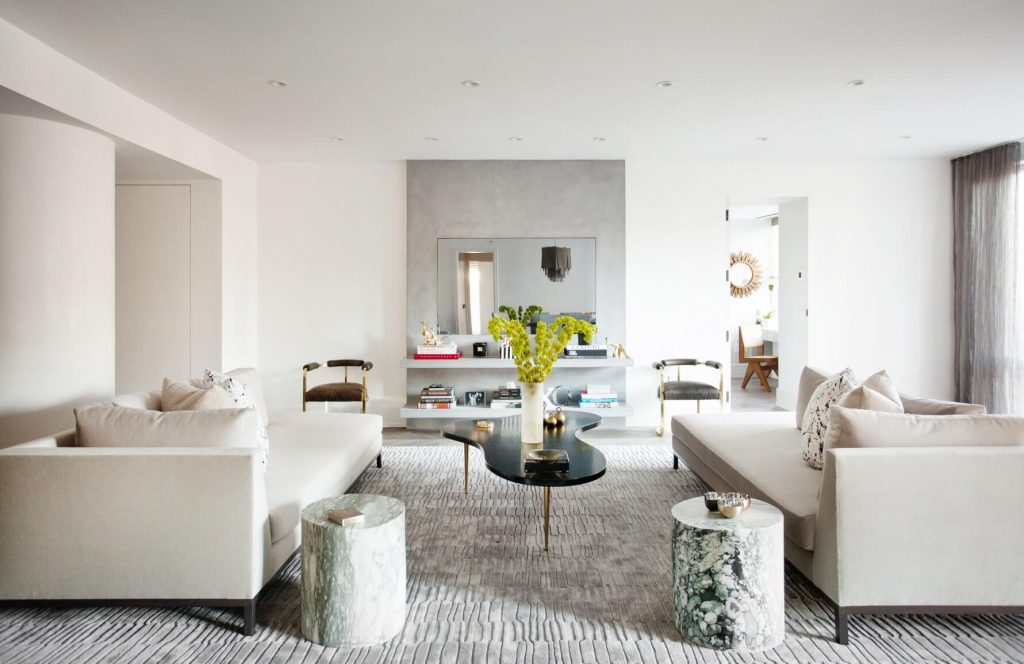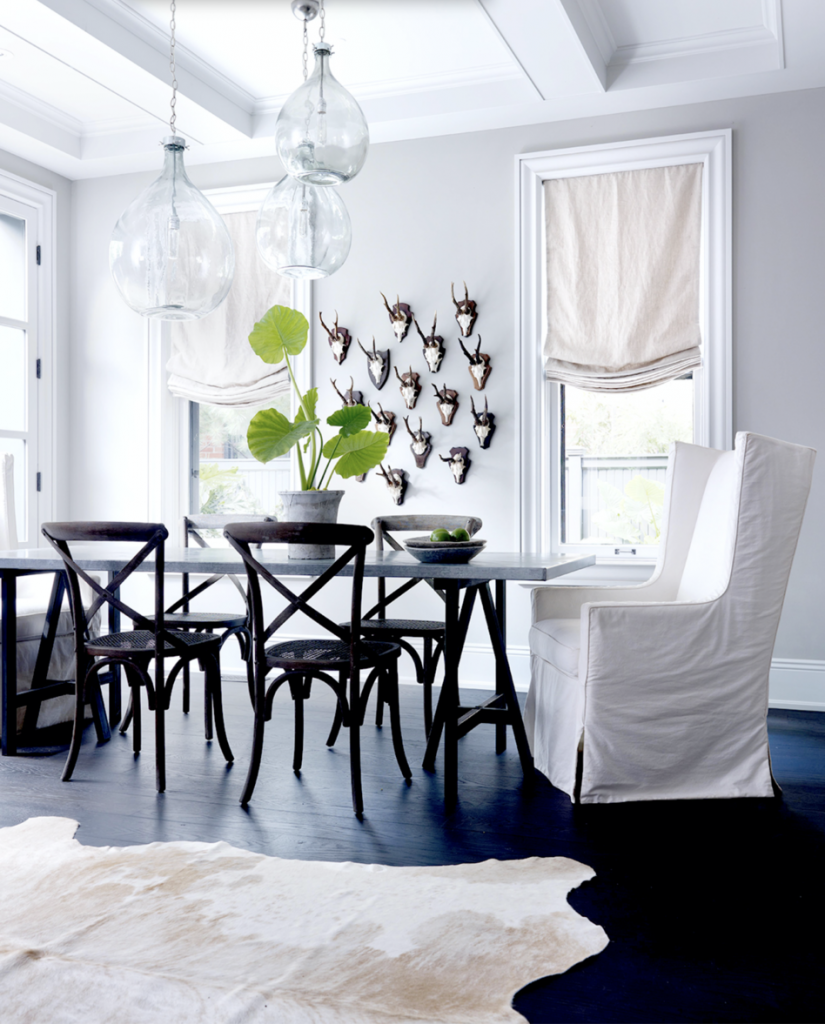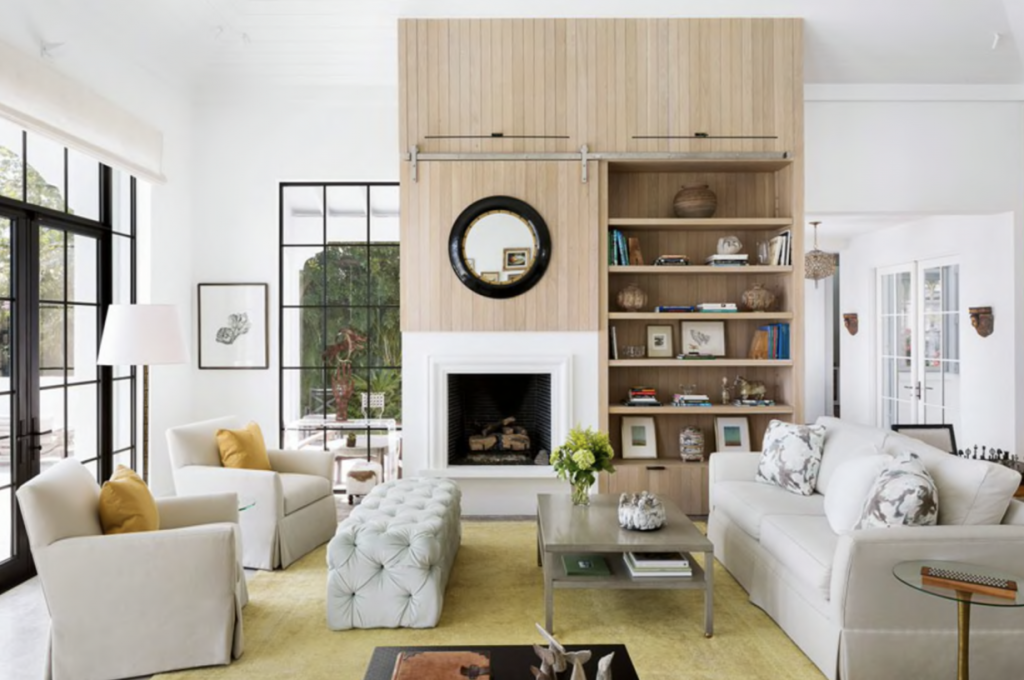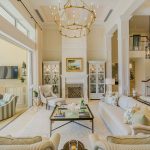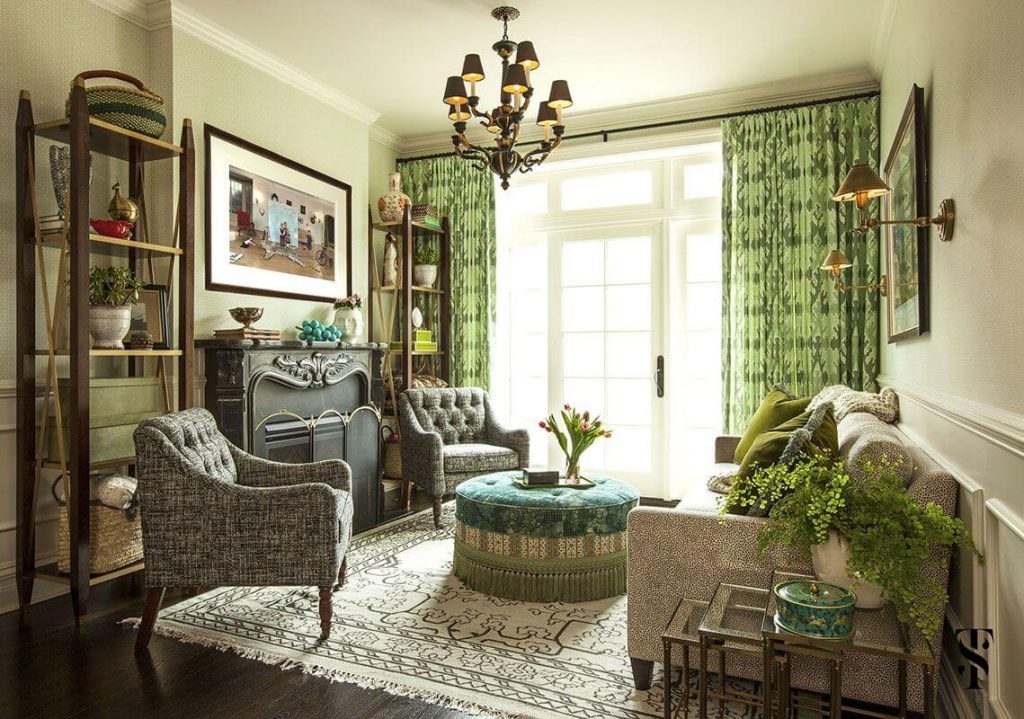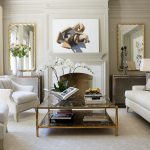Tag: Design Styles
Design Style Spotlight: Spanish Colonial / Contemporary
Friday, May 20, 2022 at 3:54pm

Style Vibe: Transitional, Exotic, Raw, Either Minimalist or Maximalist
It’s a classically traditional style dating from the historical period when Spain acquired colonies. Depending upon the locale of the colony, it took on specific characteristics that spoke to both the royal houses in Madrid and the locale itself.
Want to know which design style matches the vibe you’re going for in your space? Take our quiz to find out!
What are the Hallmarks of Spanish Colonial / Contemporary Design?
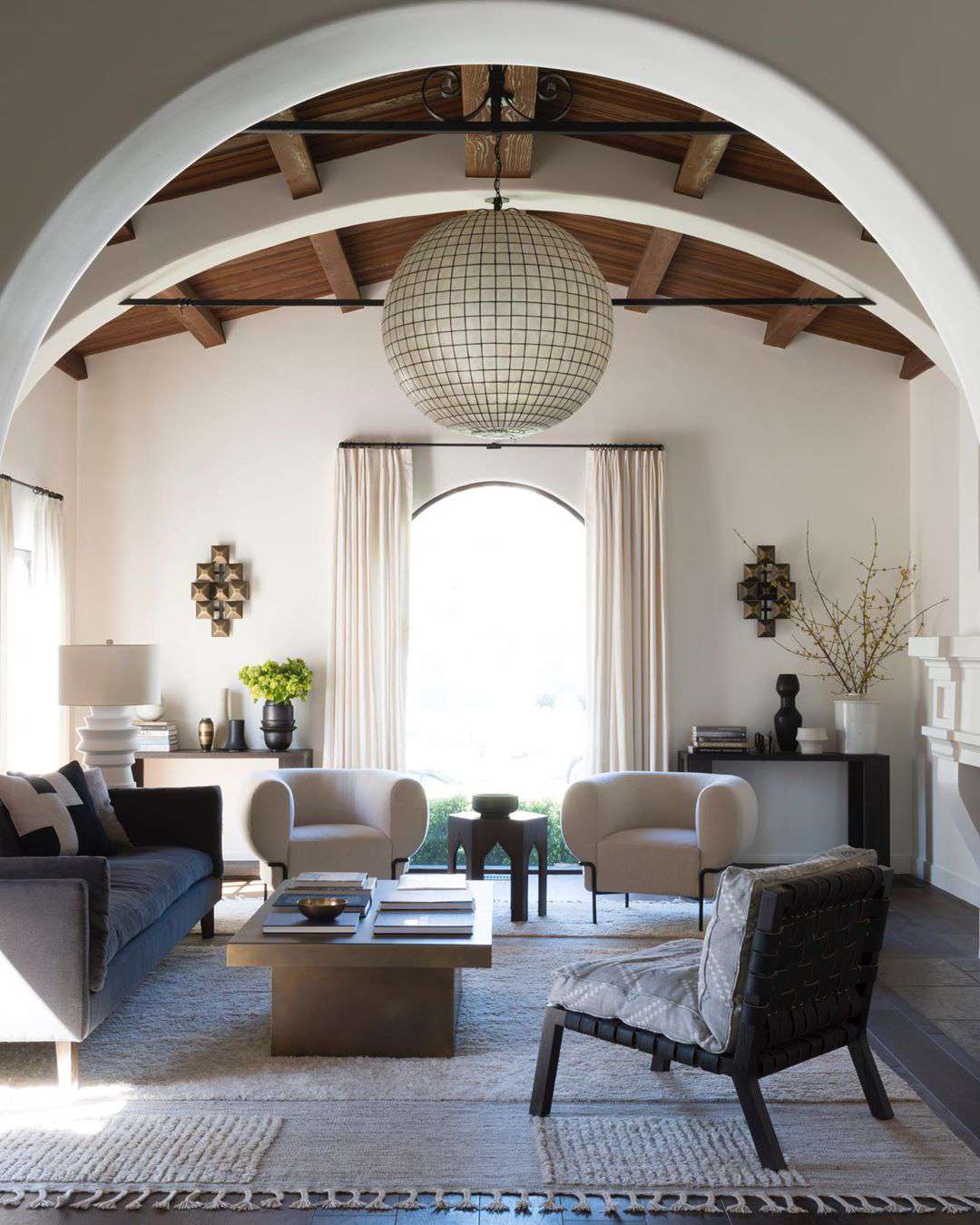
The Spanish Colonial / Contemporary design style is easily recognized by patterned and unpatterned clay tiles, wrought iron, white-washed walls, arched iron windows and doors, heavy masculine forged hardware, leather, gold leaf, tile roofs, and rough plastered walls. Classic Spanish Colonial will feature maximalist stylings, rich colors, and filigree. On the other hand, Spanish Contemporary has a much more monastic, missionary feel with minimalist seating, plain white walls, and perhaps a few iconic art pieces.
Is Spanish Colonial / Contemporary Style For You?
It’s a great Transitional style that feels most appropriate in hot and sunny regions of the world.
What Does a Spanish Colonial / Contemporary Home Look Like?
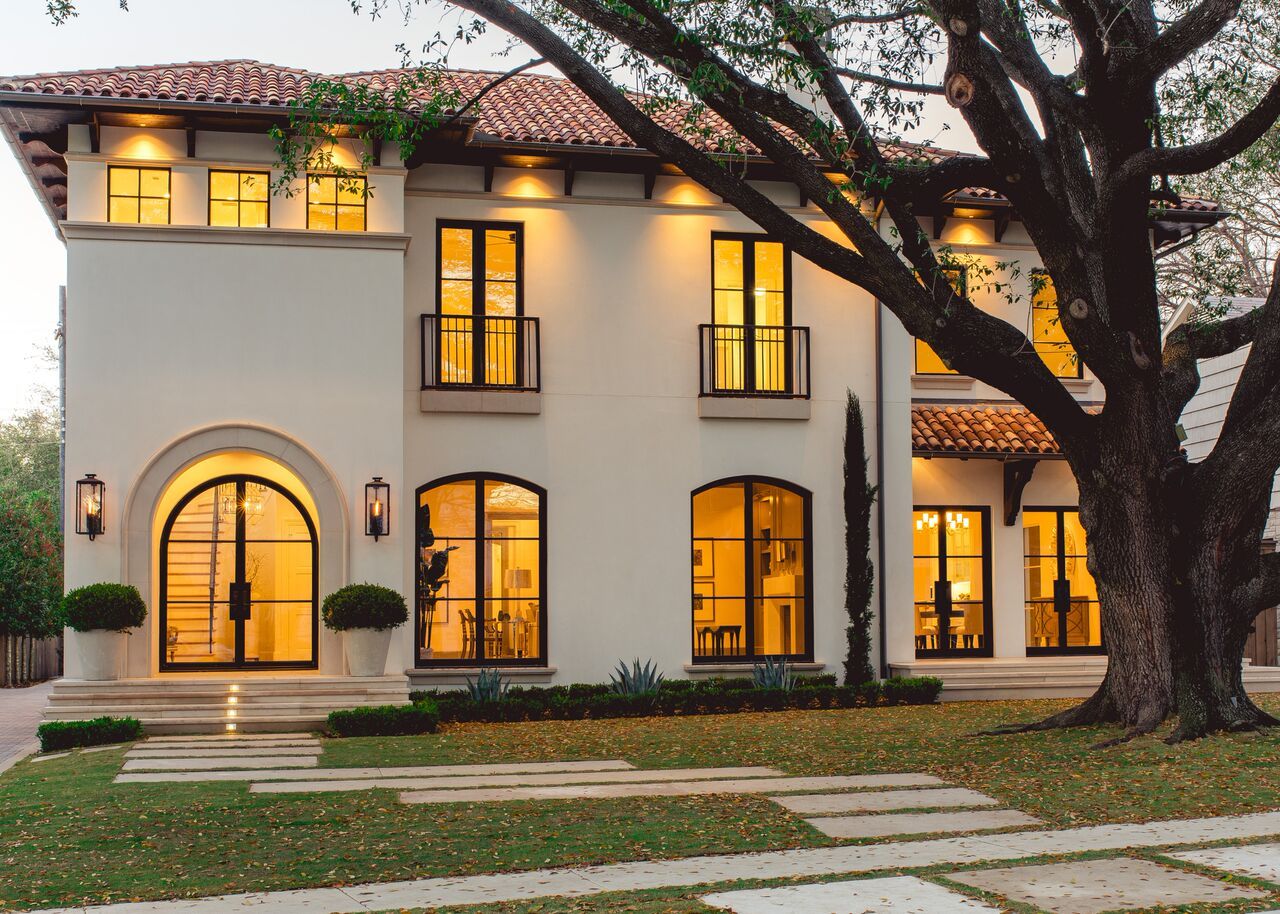
It will almost always have a Spanish tile roof and white stucco. Other architectural details include arches, wood-beamed ceilings, black windows, and natural wood doors.
How to Design Your Space in the Spanish Colonial / Contemporary Style:

Color Palette
The color palette varies; for the minimalist contemporary version, it’s soft neutrals with an accent of natural leather. The classic Spanish Colonial style will have rich blues and terra cotta tones mixed with dark woods and blacks.
Furniture
The classic Spanish Colonial will follow the traditional rules for furnishings, like formal layouts, whereas the Spanish Colonial Contemporary will follow the contemporary rules, like more informal, abstract spacing.
In a traditional setting, you will see heavily carved wood tables alongside pairs and trios of furnishings. These were literally pieces that would travel from Spain via ship, so they needed to be heavy and able to withstand the journey.
Flooring
Flooring will almost always feature clay tiles or wood.
For even more details on flooring, check out this handy dandy resource in The Library: Flooring Fundamentals 🙂
Decor
If you’re doing straight-up classic Spanish Colonial, look for heavy Spanish antiques from the 17th century. It also includes lots of gold, sunburst mirrors, and damask patterns with leather everywhere.
For the Contemporary vibe, you’ll see a lot of Christian religious iconography, black and white landscape photography, raw found objects like saddles, riding gear, and other more masculine pieces.
Window Treatments
It’s always drapery or nothing. Spanish Colonial doesn’t ever feature things like Roman shades or blinds.
By the way, DezignSpace has your back when it comes to the ins and outs of window treatments; check out Drama-free Drapery: Your Detailed Guide to Understanding Window Treatment Basics
What to AVOID When Styling a Spanish Colonial / Contemporary Space
The wrong traditional period, and anything MCM, Art Deco, or basically anything from 1901 onwards. Skip wallpaper, bright colors, and geometric patterns.
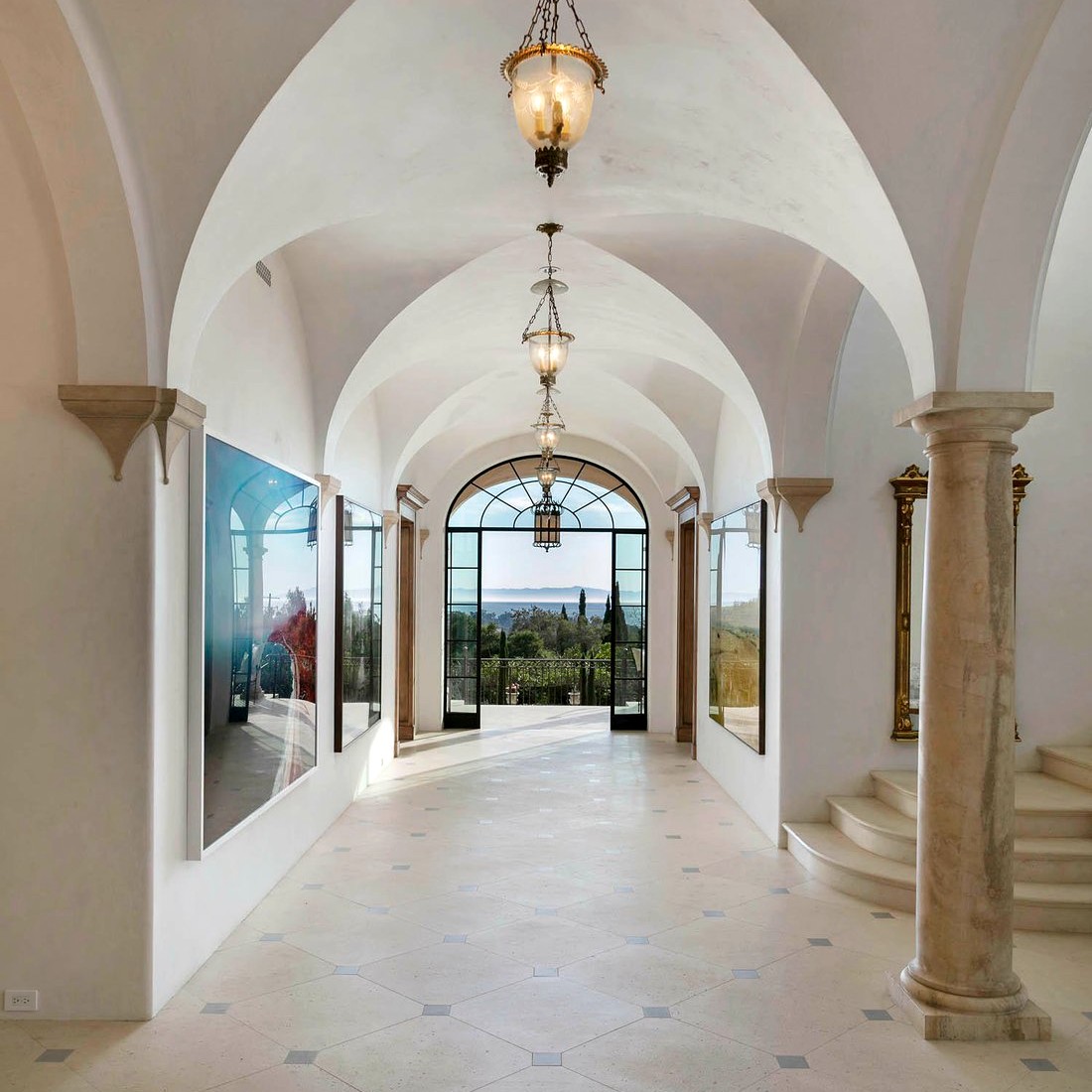
Is the Spanish Colonial / Contemporary design style totally your jam? If so, be sure to hop over to The Store to check out some goodies that we love! If you’re looking for more, check out these retailers:
-
International
Canada:
Europe:
Check out another design style that might light you up! We think you’ll love the Design Style Spotlight: Califonia Coastal.
Get the Look: Relaxed Modern
Friday, June 17, 2022 at 10:48am
 With a focus on livability, the ‘relaxed modern’ dispels any notions of elegant design being formal or fussy. This style has a modern sensibility with sleek lines and low profiles yet is surprisingly versatile and comfortable. If your design style leans modern, but you want your home to give off a chill and relaxed vibe, read on for furniture ideas and room-by-room inspo!
With a focus on livability, the ‘relaxed modern’ dispels any notions of elegant design being formal or fussy. This style has a modern sensibility with sleek lines and low profiles yet is surprisingly versatile and comfortable. If your design style leans modern, but you want your home to give off a chill and relaxed vibe, read on for furniture ideas and room-by-room inspo!
Living Room
The living room pictured above is unfussy but far from unfashionable. A stylish mix of materials like the burl wood coffee table, clear acrylic flokati stool, and black mesh sconce add unexpected texture to a clean, monochromatic modern setting.
Get the Look

Dining Room

Inviting materials and refined accents work together to create an environment that feels both elevated and relaxed.
Get the Look

Bedroom
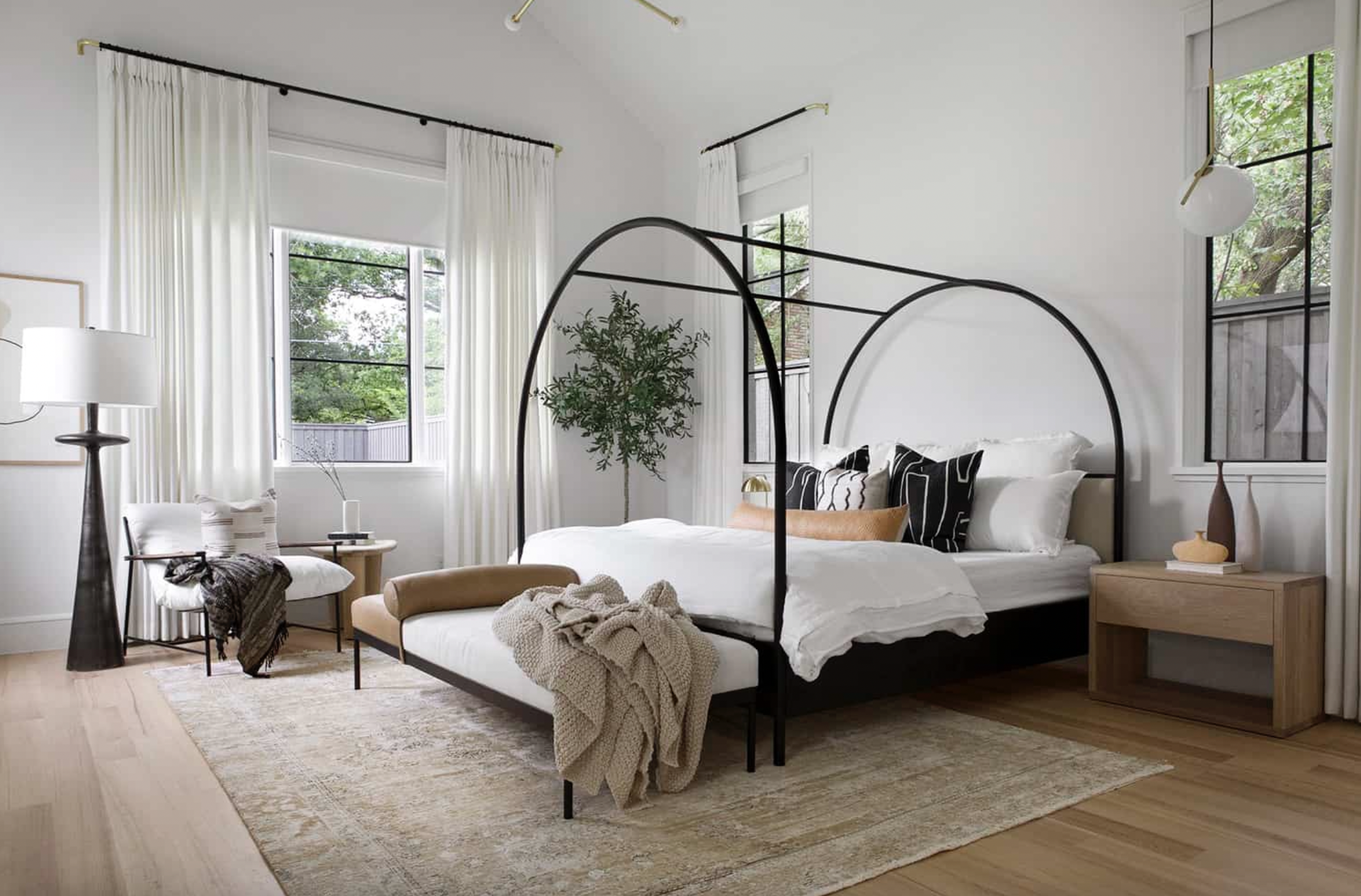
This bedroom is beautifully put together yet still inviting and relaxing. An arched canopy bed amps up the ‘wow’ factor while its simple lines beautifully complement the surrounding accent pieces.
Get the Look

Bathroom

This clean-lined, all-white bathroom is softened with natural woods, warm brass lighting fixtures, and delicate greenery.
Get the Look

Do you love the relaxed modern look as much as we do? Let us know in the comments! The fun doesn’t have to stop here; go and get your shop on in the dezignclub store!
Get the Look: Japandi Scandi
Monday, June 13, 2022 at 5:32am

The Japanese and Scandinavian design aesthetics are practically BFFs, and these spaces prove it. A fusion of zen tranquility from Japanese wabi-sabi with the minimal and neutral elements of Scandinavian hygge creates an intentional, artful, and natural look.
Living Room
The living room pictured above features a muted color palette which is ideal for a minimal, light-filled space. Different textures and materials are mixed to add interest and complexity to the overall look.
Get the Look

Dining Room

This look combines the unique beauty of vintage and one-of-a-kind pieces with the natural warmth and texture of woods, soft textiles, and earthy ceramics.
Get the Look

Bedroom

This look centers around a scaled-back sense of design, while the unexpected details, like the curved upholstered headboard and modern sconce keep it feeling fresh.
Get the Look

Bathroom

This space not only embodies the Japandi design movement, but the simple lines, muted palette, and natural textures are more than a subtle nod to Scandi.
Get the Look

Do you love the Japandi Scandi look as much as we do? Let us know in the comments! The fun doesn’t have to stop here; go and get your shop on in the dezignclub store!
Our Favorite Furniture and Decor Vendors
Wednesday, May 4, 2022 at 2:19pm
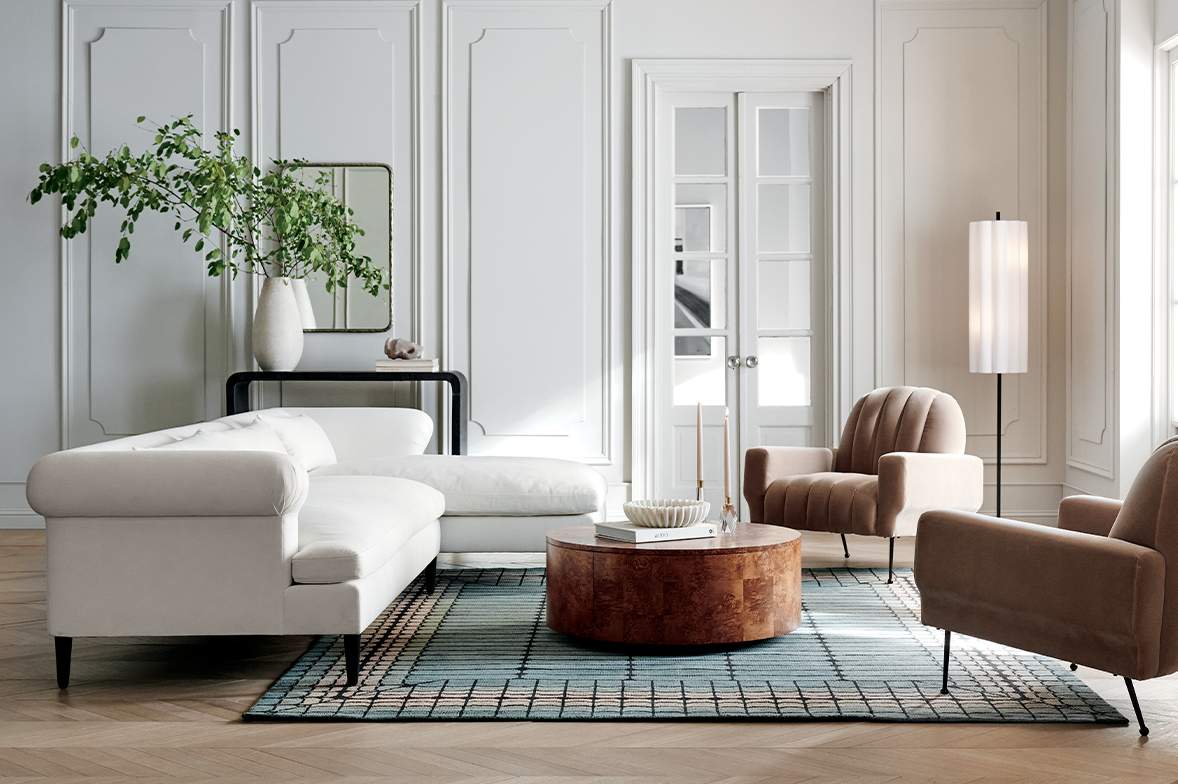
You’ve been asking for it, and we’re delivering! From the best budget-friendly options to the oh-so-luxe designer brands, here is our go-to list of favorite furniture and decor vendors!
Check ’em out:
Budget $
IKEA
From full kitchens to pillows and throws, IKEA is not only kind to your wallet, but it’s widely available to countries all over the world.
Target
If you’re looking for a highly affordable vendor with a huge range of options and styles to choose from, look no further. 🙂
1st Dibs
Thanks to their auctions, 1st Dibs is an amazing resource for snagging a drool-worthy vintage designer piece without the hefty price tag.
Mid-Range $$
Crate & Barrel
High-quality furnishings, timeless style, and a price point that won’t break the bank? Yes, please!
CB2
LOVE LOVE LOVE CB2! Their modern furnishings and contemporary decor are absolutely divine! So fresh!
The Williams-Sonoma Family
The Williams-Sonoma family brands feature a range of design styles, from Traditional/Transitional at Pottery Barn, to ultra Modern and Contemporary at West Elm.
Mitchell Gold + Bob Williams
Not only do they have FAB furnishings, but their wallpaper collection is a must-see!
Chairish
For chic and unique homes, Chairish is an absolute treasure trove of vintage designer finds.
One Kings Lane
With One Kings Lane you can expect exceptional quality, plus, they offer both brand new and antique furnishings.
These mid-range vendors are groovy too…
High-End $$$
Perigold
The world’s leading destination for designer-trusted brands, which Perigold expertly vets for meticulous craftsmanship and original design. Our personal favs include Vanguard, Marge Carson, Century, Four Hands, Caracole, Kingsley Bate, Janus et Cie, and DEDON.
Bonus Category: Lighting
If you’re in the market for lighting fixtures, do yourself a favor and check these out:
International Vendor Recommendations
Here is a helpful list of International vendors that have been recommended by other DezignSpace members:
- Canada:
Europe:
- Australia:
Now that you’re in a shopping mood, why not head over to The Store to see all the yummy pieces we have hand-selected 🙂 And don’t forget to share what you get with us in The Clubhouse! Who doesn’t love a little retail therapy? 😉
Design Style Spotlight: Desert Modern
Wednesday, January 12, 2022 at 3:12pm

Style Vibe: Collected, warm, earthy, relaxed
You may think you know Desert Modern, but you don’t know Desert Modern! It’s back in a major way, but with a huge stylistic and palette shift. She’s no longer wearing those tired peaches and yellows and is sporting a sexy and cool Moroccan Desert chic. She has grown up saying goodbye to patterns and hello to textures! Think casual but earthy, mineral tones, and vast open spaces. She’s playing Scandi while leaning towards the vast open desertness of Morocco. You could even call it a super updated Spanish colonial or a super restrained desert boho. Desert Modern is moving away from obvious modern stylistic statements to a more subtle, blended modern.
Want to know which design style matches the vibe you’re going for in your space? Take our quiz to find out!
What are the Hallmarks of Desert Modern Design?

The Desert Modern design style is easily recognized by its whitewashed walls, mineral tones, natural materials like leather and stone, kilim rugs, and occasional black accents.
Is Desert Modern Style For You?
This style is a perfect match for desert dwellers (obviously!) or those who wished they did.
What Does a Desert Modern Home Look Like?
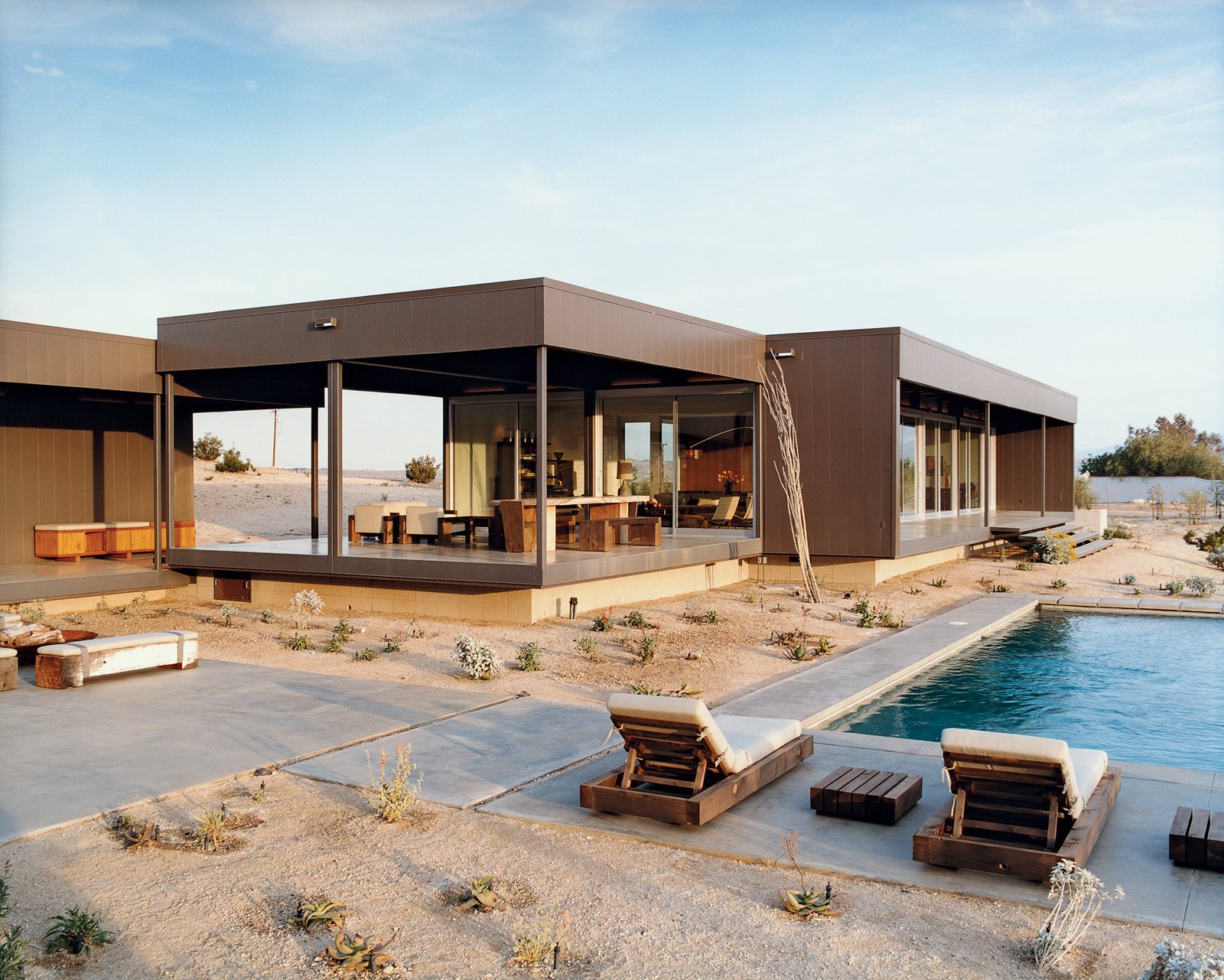
The exteriors of Desert Modern homes mirror the beauty of the surrounding landscape through large windows and open interiors that enhance the airy desert feeling. Natural building materials like wood and stone are used and are often neutrally colored in whites, pale grays, and tans to keep the building’s exterior cool while blending seamlessly with the landscape.
How to Design Your Space in the Desert Modern Style:
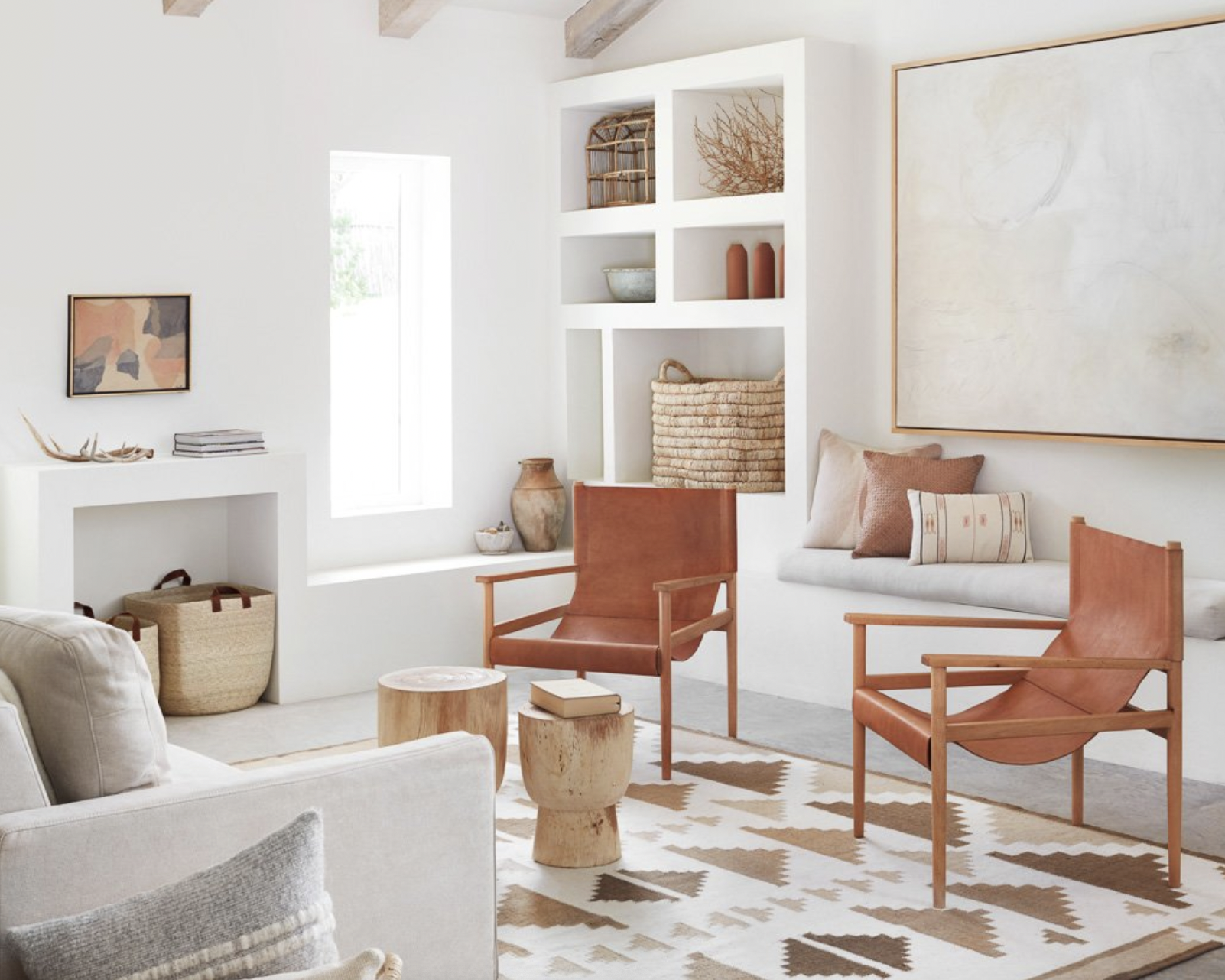
Color Palette
The whole story is a huge palette shift from the peaches, muddy clays, and yellows to crisp linens and soft whites with light woods and mineral tones as accents. The clay tone is still around, but it’s super softened. There’s also a washed-out desert sky blue which references the Moroccan sky.
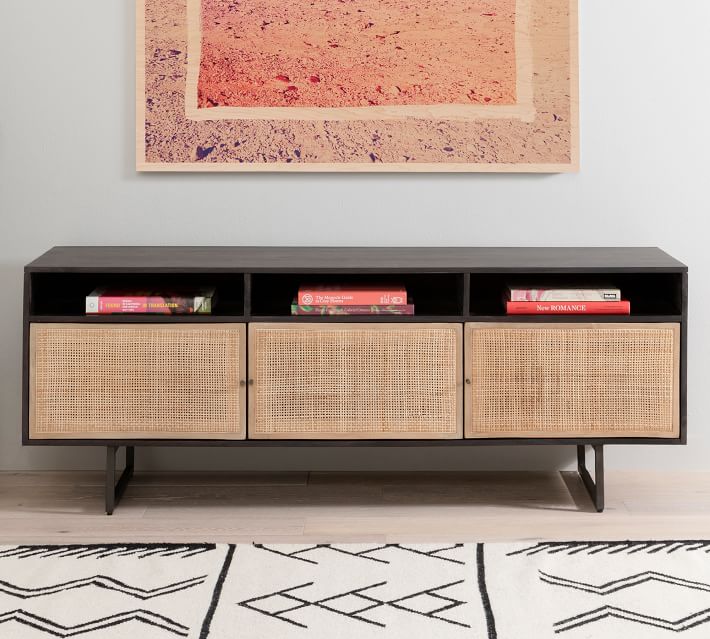 Furniture
Furniture
Desert Modern furnishings have sleek frames and favor natural materials like leather, stone, wood, metal, and rattan.
Flooring
Desert Modern style flooring includes lots of natural woods, whether warm in tone or unfinished. Saltillo tile is also popular. If you’re looking for more info on all things tile, check out Types of Tile and How to Use Them.
For even more details on flooring, check out this handy dandy resource in The Library: Flooring Fundamentals 🙂
Decor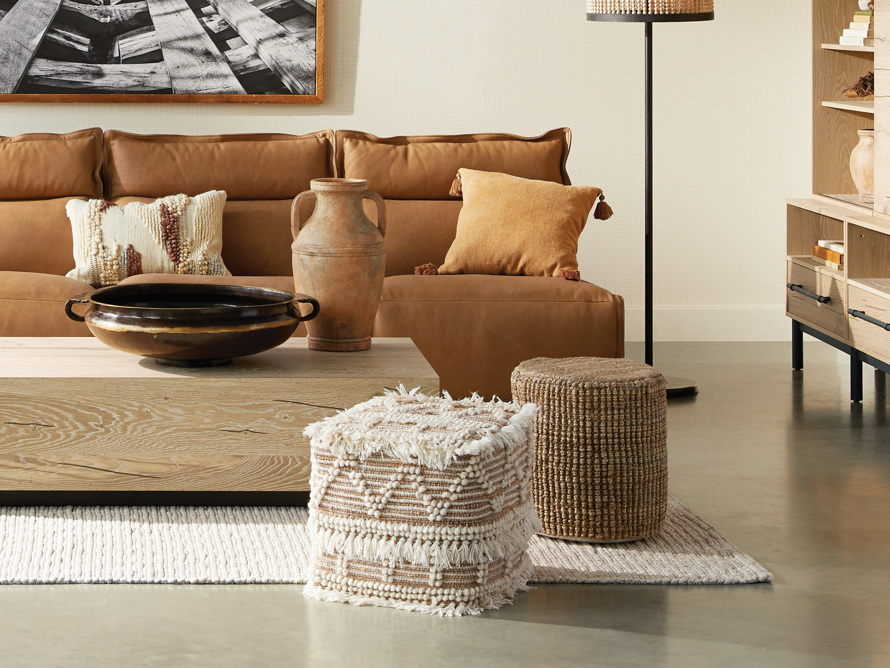
Desert Modern decor embraces artisanal textiles for rugs, wall tapestries, poufs, and throw blankets. Plants (especially succulents and cacti) are staples of this design style.
Window Treatments
Window treatments are kept minimal if anything is used at all. This design style often benefits from being in the desert with large windows, so either forgo window treatments entirely or go very simple and clean, like light linen with a black iron rod and/or solar roller shades.
By the way, DezignSpace has your back when it comes to the ins and outs of window treatments; check out Drama-free Drapery: Your Detailed Guide to Understanding Window Treatment Basics
What to AVOID When Styling a Desert Modern Space
The Desert Modern design style avoids overuse of patterns, highly-saturated colors, clutter, and formality.
Is the Desert Modern design style totally your jam? If so, be sure to hop over to The Store to check out some Desert Modern goodies that we love! If you’re looking for more, check out these retailers:
-
International
Canada:
Europe:
Check out another design style that might light you up! We think you’ll love the Design Style Spotlight: Califonia Coastal.
Design Style Spotlight: Eastern Coastal
Monday, July 26, 2021 at 10:39pm
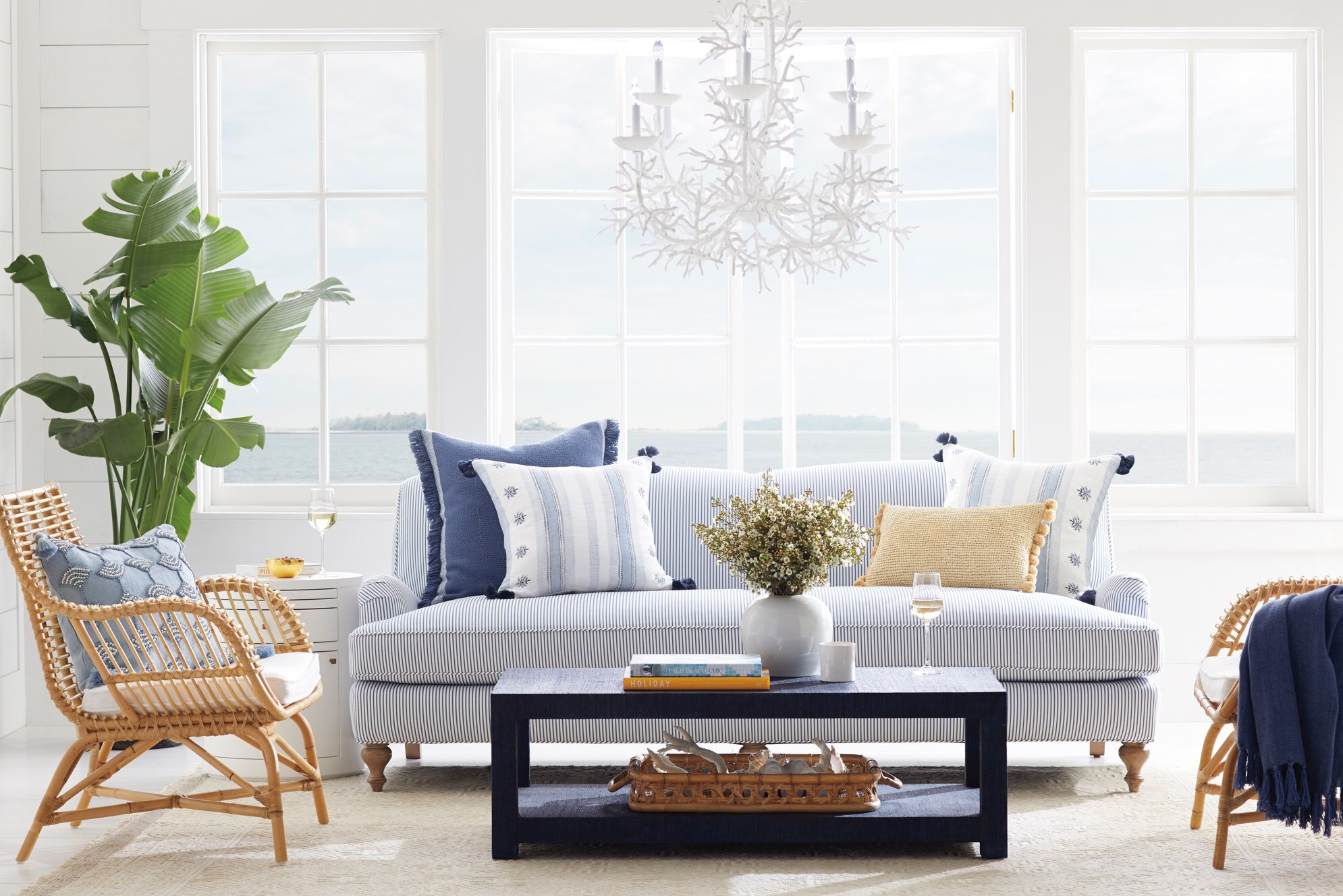
Style Vibe: Formal, nautical, refined, timeless
Because the East coast of the U.S. was settled much earlier (late 17th century) than the West coast, the influences that affect the Eastern Coastal design statement are truly traditional in nature. The decor and layouts are formalized with much more structure than the West coast style. However, for its newer iteration in the 20th century, a contemporary overlay is added, expressed through updated color palettes and the newer furnishings construction technologies, so the Eastern Coastal design style really can’t help but ultimately fall into the Transitional category. Nautical themes like bells, ship wheels, shells, nets, and buoys are a major decor cue- with seashells in particular as a staple. 🐚
Want to know which design style matches the vibe you’re going for in your space? Take our quiz to find out!
What are the Hallmarks of Eastern Coastal Design?
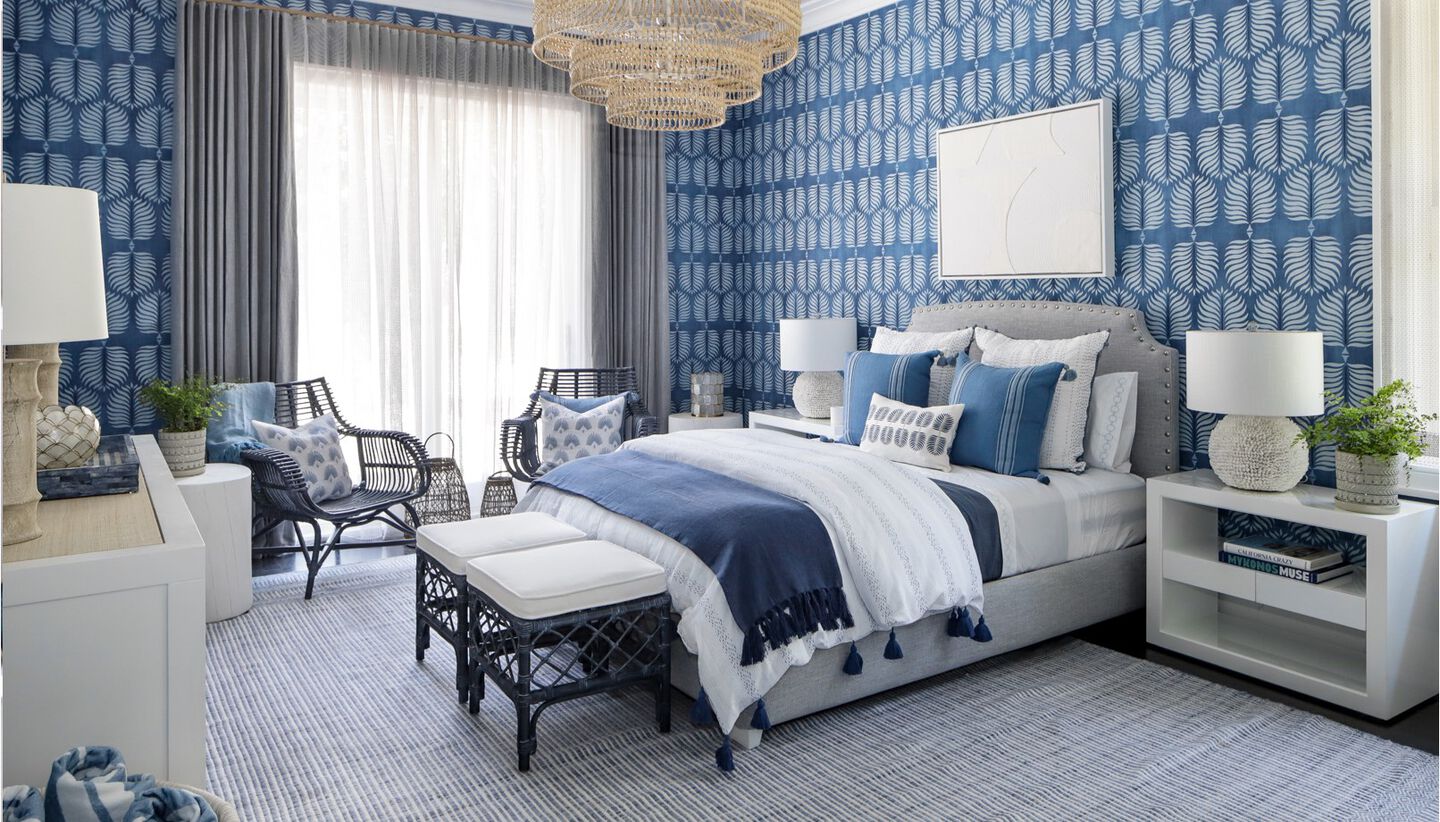
The Eastern Coastal design style is easily recognized by its nautical-themed decor, shells, navy and white stripes, rattan and wicker furnishings, shaker-style cottage architecture, and formal layouts.
Is Eastern Coastal Style For You?
This style is a perfect match for East Coast beach dwellers (obviously!) or those who wished they did. 😉
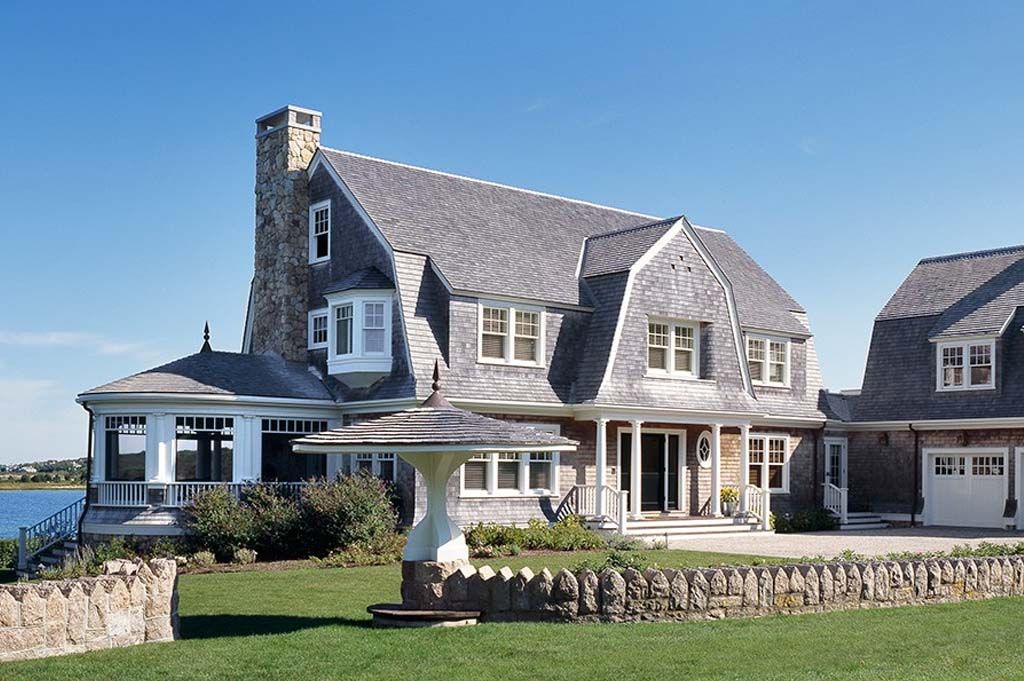 What Does an Eastern Coastal Home Look Like?
What Does an Eastern Coastal Home Look Like?
Eastern Coastal tends to have classic architectural envelopes because the structures were influenced by 17th & 18th-century architectural styles. Shaker-style cottages with peaked shale roofs, bayfront windows and/or smaller pattern-forming windows, and an abundance of glossy white trim and bead boarding are strongly featured in this style.
How to Design Your Space in the Eastern Coastal Style:
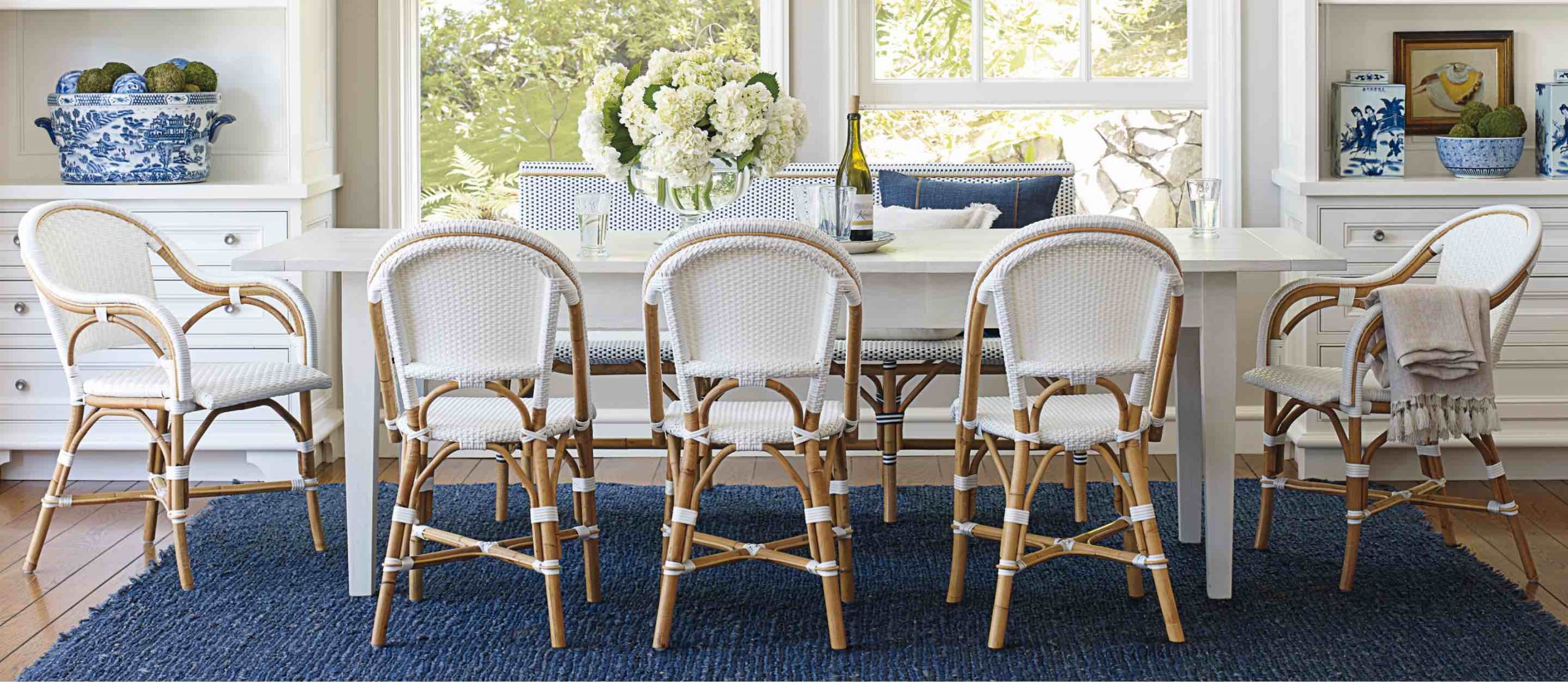
Color Palette
The Eastern Coastal color palette is vastly different from the palettes seen on the West Coast. Even though both styles embrace natural ocean colors, the Atlantic Ocean is much greener than the very blue Pacific. The Eastern Coastal palette also includes a whole range of sand tones, seagrass, salmon, sea glass green, turquoise, and sunny yellows that mimic the rising eastern sun. A very strong nautical palette is also expressed, seen in midnight navy blue and crisp white.
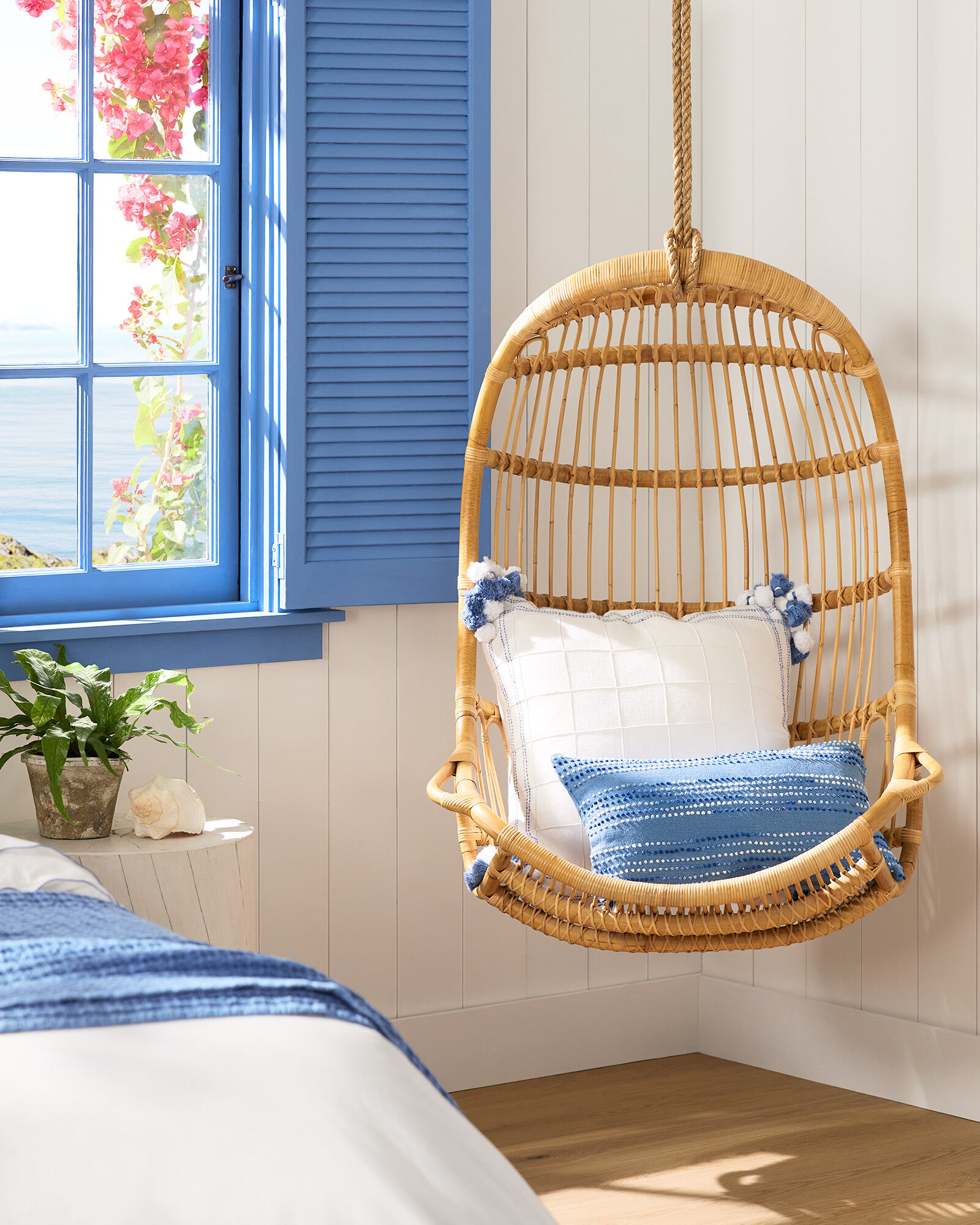 Furniture
Furniture
Eastern Coastal furnishings feature traditional detailing paired with a fresh color palette. Formal, shell-shaped chairs upholstered in white linen with navy blue piping or skirted pieces in a navy or seagrass linen paired alongside an antique mahogany dining table are commonly seen.
Flooring
Eastern Coastal style flooring includes lots of natural wood and stone. The wood can be a lighter color, like a bleached cherry, ash, or pine, but it must look more formalized than rustic. Patterned (especially nautical-themed) ceramic tiles like Portuguese blue delft can be blended into a little bit of a statement as long as it’s used with restraint. Eastern Coastal flooring also features medallions like sundials and accent trim around the perimeter. For even more details on flooring, check the handy dandy resources in The Library!
Decor
In addition to the nautical-themed decor, Eastern Coastal also includes jute and seagrass rugs, formal art like portraits and maps, formal antiques, and Murano glass. Textiles in a coastal palette feature traditional patterns like gingham, checks, stripes, damasks, calico, and chintz.
Window Treatments
Window treatments tend to be traditional, like drapery with Roman shades underneath. You can opt for breezy white linens if you’re going for a true beachfront statement, but typically, they’ll feel more formal.
By the way, DezignSpace has your back when it comes to the ins and outs of window treatments; check out Drama-free Drapery: Your Detailed Guide to Understanding Window Treatment Basics
What to AVOID When Styling an Eastern Coastal Space
The Eastern Coastal design style avoids the informal lack of color or any color outside the beach-inspired palette.
Is the Eastern Coastal design style totally your jam? If so, be sure to hop over to The Store to check out some Eastern Coastal goodies that we love! If you’re looking for more, check out these retailers:
-
International
Canada:
Europe:
Check out another design style that might light you up! We think you’ll love the Design Style Spotlight: Califonia Coastal.
Look(book) Before You Leap: How to Use Pinterest to Get EXACTLY the Design You Want
Thursday, June 3, 2021 at 12:12pm
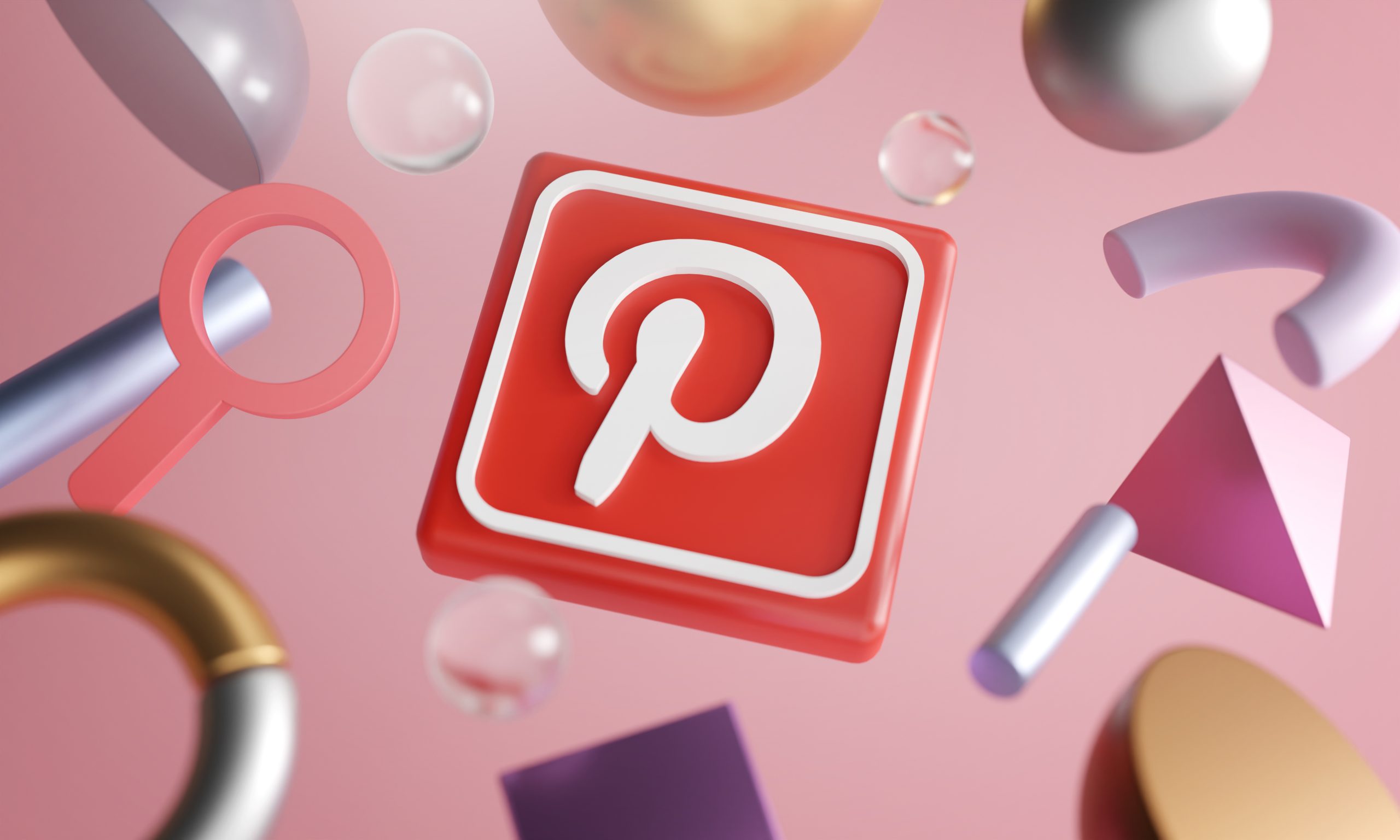
You’ve probably heard of a ‘Lookbook’ before, or at least one of its many iterations. Maybe for you, it’s a binder, a dedicated album on your phone, a Pinterest page, etc. A Lookbook is the standard file where all the design-y things you’ve gathered are collected and compiled. Regardless of the form it takes, we’re willing to bet that it’s been a design dumping ground for a while. Just sitting there, looking pretty. 😉 The question is, have you been able to put any of that juicy design inspo to good use?
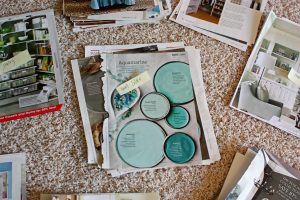 Sure, having inspiration is one thing, but organizing and turning it into an actionable design plan is another. No worries, our fellow design hoarders; you’re in good company. You can use our system to distill down all your design inspo into a solid style story. Are you ready to take that Lookbook from a far-off fairytale to your day-to-day reality? Good.
Sure, having inspiration is one thing, but organizing and turning it into an actionable design plan is another. No worries, our fellow design hoarders; you’re in good company. You can use our system to distill down all your design inspo into a solid style story. Are you ready to take that Lookbook from a far-off fairytale to your day-to-day reality? Good.
Starting from scratch? No problem at all; keep on reading, and you’ll learn how to start with your best foot forward.
Let’s get it into gear:
Style Sighting
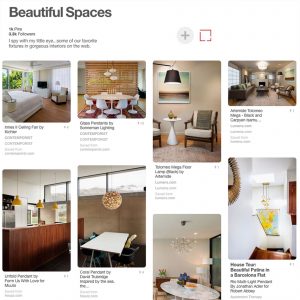 Regardless of budget or the scope of your project, you need to have a strong sense of your design style and how it can best represent you at this point in your life. With this understanding comes the ability to create a design that will accurately and clearly communicate to others information about you, your lifestyle, and what you love.
Regardless of budget or the scope of your project, you need to have a strong sense of your design style and how it can best represent you at this point in your life. With this understanding comes the ability to create a design that will accurately and clearly communicate to others information about you, your lifestyle, and what you love.
However, without a clear vision, it will be as if you’re walking in the dark without a flashlight. 🔦 Sure, you’ll end up somewhere, but it may not be where you wanted. With this step-by-step system, not only will you have a flashlight to illuminate the path, but you’ll also have a compass that guides you to your desired design destination. Say that three times fast lol. 😁
You cannot make solid design decisions without first understanding your style preference and knowing what’s included in that palette. The best way to start is by gathering images of spaces, furniture, art, colors, or anything that moves you.
Time to get your inspo on…
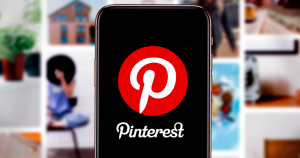 Possibility Pinned Down
Possibility Pinned Down
In case you haven’t already, do yourself a solid and get set up with a Pinterest account. Seriously, like right now. Here’s how to do it:
Creating a Pinterest Account
- Go to www.pinterest.com
- Click on sign up, give them an email and password, or you can sign up with Google or Facebook (we suggest using a code name for privacy)
- Boom! You have a Pinterest page where you can begin to upload any imagery to separate boards, any or all of which can be kept private if needed.
The sheer volume of design-related content on Pinterest is bananas, so there certainly won’t be an issue of being unable to find things you LOVE. In fact, for most people, the problem is loving ALL.THE.THINGS. But don’t worry, we want you pinning with reckless abandon! The brilliant aspect of the Pinterest algorithm is that as you pin images, it begins to show you more photos in a similar vein, helping you flesh out your design style in greater detail. It’s like this amazingly yummy trail of design breadcrumbs. Enjoy! 😋
PRO TIP: Remember to include images of the exterior of your home in your Lookbook. Factoring in the architecture of your home is essential when forming a style statement. Not feeling the design direction your home’s exterior is pulling you in? That’s OK! You can incorporate a style that will blend with the exterior statement in a way that still feels like you and expresses your design style. It’s all about pulling it together, and you’ll be a master of the mix in no time.
Design Distilled
Once you have your Lookbook filled to the brim, you’ll be able to begin the process of discovering the design style “cohesive thread.”
Let’s start unraveling…
1. Create Categories
Our first step is to sort the images into categories. It can be any kind of category, such as by space (bedroom, kitchen, patio), furniture pieces you’d love to have, colors that move you, the bedding you want, etc.
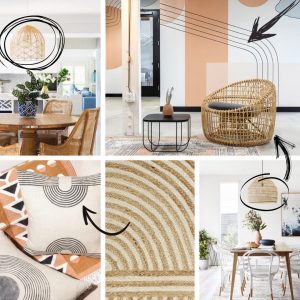 2. Repetition Review
2. Repetition Review
Once you’ve broken out your inspo into the various categories, begin reviewing all the images and make a list of the things you see that are repeating elements.
Let us help you out with a few examples:
- All white spaces
- Mid Century Modern furniture
- Natural textures
- Ornate crown molding
- Bold graphic art
- Specific types of patterns
- Mixed metal finishes
- Amount of items (minimal vs. heavily decorated)
Once you have your list, see if there are repeating elements that appear together in the same image, like:
- All white spaces and Ornate crown molding
- Bold graphic art and Minimal decor
- Mixed metal finishes and Natural textures
Now, categorize these images by room/space; “living room,” “kitchen,” “primary bath,” “backyard,” etc. Create separate Pinterest boards for each space and organize your images accordingly.
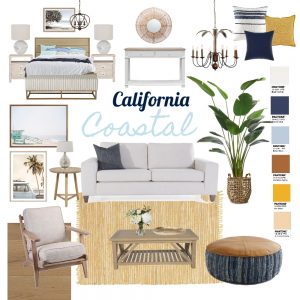 3. Design Direction
3. Design Direction
From here, you’ll want to refer to the Design Style Spotlights to begin to categorize the various style directions (yes, there’s likely to be more than one) that you see on your boards. Add the style names to the titles for each board, for example:
Living room / French Contemporary
Powder room / Traditional
Guest bedroom / California Coastal
Primary bedroom / Scandinavian
Once you’ve put a name to the style face, you can use this search term on Pinterest to find additional images that are even clearer representations of your style statement and gain a better understanding of how the space could come together for you.
Got it? Good. Let’s keep that momentum going…
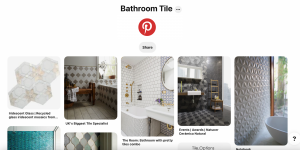 4. Details Defined
4. Details Defined
You can now build “final boards” for each space you plan to work on. To do so, isolate all the elements that will be on your list to renovate or change, things like:
- Kitchen cabinetry
- New window treatments
- Bathroom tile
- Updated bedding
- New dining room furniture
Create a new board with the space label, adding “final” afterward. (e.g. Living room / Final)
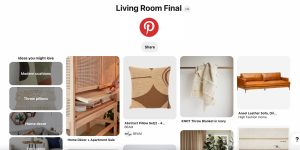 Let’s use a living room refresh as an example scenario:
Let’s use a living room refresh as an example scenario:
- First, you’ll bring down a few favorite images from your living room board by saving them to the new “final” board.
- Pick one with some element that you’d like to have in your new living room, and click the edit symbol (the pencil). This will bring down a dropdown option indicating the board name and section.
- Create a section labeled with the important element in the image, i.e., sectional, fireplace stone, coffee table, etc., and then save the picture to this newly created section.
You can repeat this process for every element of each space you’re planning on designing, giving you a specific road map to the items you’ll need to create your new space! To take your design from the digital dream world to everyday reality.
Oh, just wait, it gets even better…
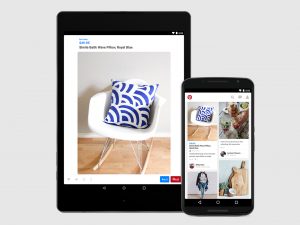 One of the grooviest things about Pinterest is the thousands of vendors/retailers that include shortcut links to their products from the pinned images.
One of the grooviest things about Pinterest is the thousands of vendors/retailers that include shortcut links to their products from the pinned images.
For instance, let’s say you’ve got your heart set on a specific sofa you found during your inspo hunt.
The pin will often include all of the product info and a link straight to the product page of that particular vendor’s website. This will help streamline your product selection budget formation and enable you to solidify your final choices.
No matter the project, from foundation to finishing touches, you now have a system for taking your inspiration from Pin to plan! By the way, if you’re wondering what design style matches the vibe you want for your space, then be sure to check out our Style Vibe Quiz!
May all your design dreams come true! 🪄
Drama-free Drapery: Your Detailed Guide for Understanding Window Design Basics
Wednesday, June 2, 2021 at 9:53pm

Window treatments can be very complicated, but we are going to simplify them for you! In this article, you’ll learn about drapery styles, fabrics, hardware, and more; plus, we will walk you through which ones to use and when. Let’s get started!
First, it’s essential to consider window treatments as “installed decorative elements” that should be highly functional while communicating your design style. In particular, drapery can be incredibly overwhelming with all of the available options and details to consider, but never fear, DezignSpace is here! 😉
Let’s go through them one at a time:
Types of Drapery
Moving Panels
Somewhat self-explanatory, these are fabric panels that hang above a window or door on either side and can be moved across for coverage.
Fixed/Side Panels
These are quite simply non-moving fabric panels and are typically used as trim or in conjunction with another treatment.
Cafe Panels
Café panels are short-tier curtains that cover only the bottom half of a window or can be used on French doors.
Fabric
Let’s talk fabrics for a moment. Your selection here should be based on a few key considerations: desired light level, privacy, and style.
Fabric Weight/Opacity:
Sheer
Simply put, the lighter the weave, the brighter the room. Sheers create a light and airy feel while offering a bit of privacy. They look lovely on their own or when paired with heavier drapes on a double curtain rod.
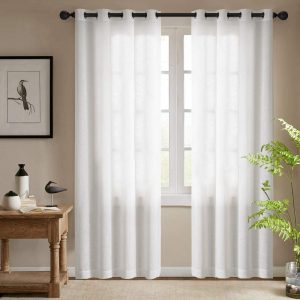 Semi Sheer
Semi Sheer
Semi-sheer curtains are slightly more opaque than regular sheers. Choose these if you want to let a fair amount of light in but prefer a bit more privacy.
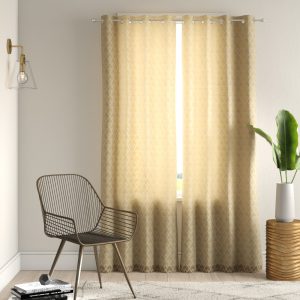 Semi-Opaque
Semi-Opaque
The next step up from semi-sheer, semi-opaque is a heavier weave that offers greater privacy while still letting in a fair amount of light.
Solid
An opaque or solid fabric that allows for slight light diffusion, for example, velvet or canvas.
Light Blocking
As the name implies, light-blocking curtains offer the highest level of darkness by blocking incoming light—a perfect choice for media rooms, bedrooms, and nurseries.
Let’s not forget about your fabric lining options, like Blackout and Thermal:
Blackout Liner
You can add a blackout liner to any curtain to transform them into a light-blocking style. Perfect for media rooms, bedrooms, and nurseries.
Thermal Liner
Windows are often a significant source of heat loss, so to help keep those energy bills in check, you should consider thermal curtain liners. Thermal liners can be used both in hot and cold climates. They act as an insulator, and as a bonus, they create a sound barrier – perfect if you live in the city or next to a busy street.
Top Styles
Tabs
Curtain tabs are loops of fabric along the top of a panel that allows easy installation over a rod. The back tab or hidden tab style is perfect for creating a polished look while concealing the curtain rod.
Rod Pocket
Incredibly versatile, this type works well across most design styles, although it’s usually seen in traditional spaces. It comes in various styling options; you can slip the curtain rod through the pocket for a simple, clean look or use clips to create pleats. The rod pocket pairs better with lightweight fabrics like sheers than it does with heavier-weight fabrics.
Grommet
Crisp, with well-defined folds and a simple design, this window treatment lends well to the contemporary style. Easy to install, the rings (grommets) are embedded within the curtain top and glide over the rod. Grommet rings are available in many finishes, although it’s usually best to match the rod’s finish. Keep in mind that this style allows the curtain rod to be visible, so make sure to choose an attractive option.
Pleats
Pleats are folds in the drapery fabric that give it structure and fullness. Pleats come in several different styles, like the French pleat (AKA Pinch pleat) and the Inverted box pleat (detailed below). They are typically seen in traditional and transitional designs and can be single, double, or triple, with the fullness increasing along with the number of pleats.
Inverted Box Pleat
Elegant in style but not too stuffy, this design creates more casual-looking folds than the other pleat versions. Don’t let its informal look fool you–this style is not meant for a lot of opening and closing—sort of a look-but-don’t-touch situation.
Hardware
Of course, if you’ve selected drapery as a window treatment, you are going to need something to hang them up with, and you know what that means…you guessed it! MORE choices to make!
When it comes to window treatment hardware, there’s no shortage of options here either:
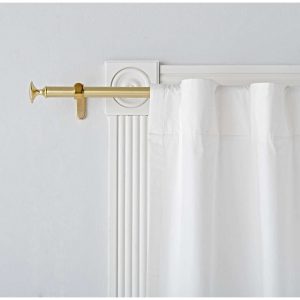 Single Rods
Single Rods
As you might imagine, a single rod is a single bar with which you thread grommets, rings, and pocket curtains (more on those later.) They can be straight while resting on wall brackets or curved and mounted directly into the wall at either end (called French rods.) Straight rods use finials, which are decorative caps placed at either end and come in a wide variety of styles.
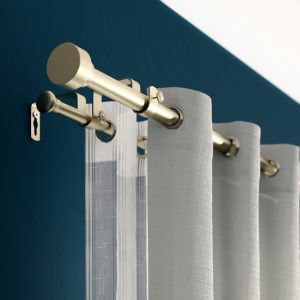 Double Rods
Double Rods
Double rods function similarly to single rods, the main difference being that there are two rods instead of one. They enable you to layer your window treatments for greater light versatility. (i.e., sheers paired with heavier-weight curtains. )
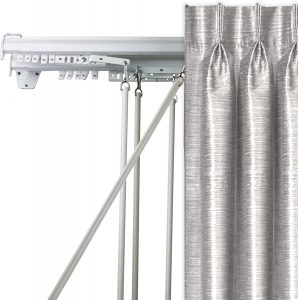 Traverse Rod
Traverse Rod
A window more than 36″ wide typically requires the use of additional support brackets in the middle of the rod, which in turn, prevents the curtains from moving all the way across. In situations where this isn’t ideal, you should use a traverse rod. A traverse rod allows curtains to easily glide the window’s full width via a pull cord, giving you full coverage while preserving the fabric. You can even customize the direction you want the curtains to open- from the left, right, or center.
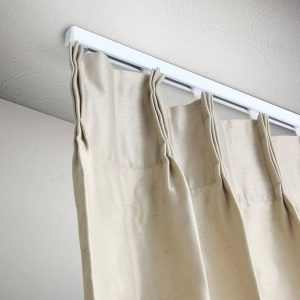 Ceiling-Mounted Track
Ceiling-Mounted Track
Ceiling-mounted tracks provide a clean, minimalist look while adding a sense of height and drama. They are incredibly versatile and help solve a variety of design dilemmas. For example, if you have circular-shaped ceilings or curved walls, there are flexible ceiling tracks that will bend to your space’s shape. You can also use ceiling-mounted tracks to hang draperies in front of patio doors, as there typically isn’t any wall space for the other mounting methods. Ceiling-mounted tracks can be installed in a drapery pocket or reveal.
Ripplefold
Are you a bit OCD about getting your curtains perfectly spaced and lying juuuust right? Enter the Ripplefold! Installation takes patience- a system of snaps and carriers creates each fold while securing the panel to the track. The result? Lush, full-looking curtains with precisely uniform folds.
Rings
Clip rings use clips to attach a drapery panel to rings that slide along a curtain rod. If you’re looking to add a little more length to your drapery, rings are a great way to do this, as they add 1-2 inches in length.
PRO TIP: Before you go all-in for ring clips, make sure you factor in the weight of your curtain fabric. For example, this hardware will not support heavier fabrics like velvet.
Hooks
Also called drapery pins or pleater hooks, these hooks are used to hang pinch-pleats from a traverse rod or tabbed rings on a round rod.
Brackets
The unsung heroes of drapery design, brackets play a critical role in window treatment installation. Simply put, brackets are mounted into the wall and support the curtain rod and panels. Which brackets you choose will largely depend upon your drapery style; for example, if you love the layered look that a double rod provides, you’ll need to select double brackets vs. single brackets.
For further details on brackets and mounting hardware, be sure to check out How to Install Window Treatments in The Library!
Are you still with us? I’m glad you stuck around because it’s time to accessorize! ✨
Accessories
 Pull Baton
Pull Baton
A pull baton or curtain wand enables you to pull your curtain panel easily across the window without having to touch the fabric. The type of drapery, rods, and hardware will determine which style of wand you need. Pull batons are usually used on heavier drapery vs. sheers.
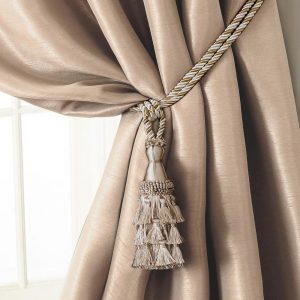 Tiebacks
Tiebacks
Tiebacks are both decorative and functional in that they coordinate with your curtains while tying them back to let in additional light. They can be made of fabric, cord, or really anything that suits your décor scheme. Any tieback hardware you select should stylistically tell the same design story.
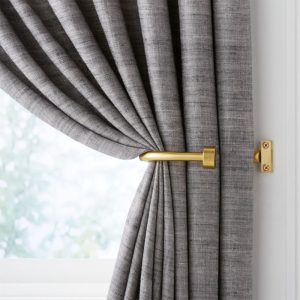 Holdbacks
Holdbacks
Holdbacks differ from tiebacks in that they are metal and mounted to the wall next to the curtain, generally one-third of the way up from the bottom. Just like tiebacks, any holdback hardware you select should be cohesive stylistically.
Finials
Finials not only look pretty capping the end of a curtain rod, but they serve the vital purpose of preventing your drapes from slipping off and falling to the floor. They come in endless styles and finishes; some opt for a seamless look with the curtain rod, whereas others choose a more elaborate design.
Valances
Either used alone or layered atop other panels, a valance is a section of fabric that conceals the window treatment hardware. They can be simple in structure or pleated to add formality.
Swags
A swag is a layer of fabric draped or wrapped around a curtain rod that creates a romantic and glamorous effect. Swags can be used as a standalone window treatment or in combination with other panels. When used alone, sheers are a popular choice as the light material lays softly and beautifully.
You made it! Now that you know about all these fantastic options, it’s time to make design decisions. To help you get started, ask yourself the following three questions:
How much light/privacy do I want?
What is the size of the window?
What is my design style?*
Your answers will help narrow down your choices and get you started on the road to window treatment success!
*So, you know what you like but don’t know what it’s called? To get headed in the right direction, take this quiz: What Window Treatment Style Are You? Here are a few design styles just for fun:
 TRADITIONAL
TRADITIONAL
Tends to be more detailed and elaborate, with intricate pleating/top details, with trims, patterns, accent fabrics, detailed valances, and plenty of decorative hardware.
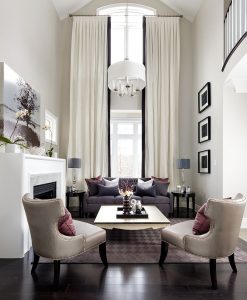 TRANSITIONAL
TRANSITIONAL
It is similar to traditional but with a more subdued palette, less detail, solids vs. patterned fabrics, and less intricate hardware.
CONTEMPORARY
Minimal details, no pleats, solid, lighter-weight fabrics in architectural colors, sleek hardware, ceiling mounted.
For a deep dive into these design style “super categories,” check out the Design Style Spotlights: Traditional, Transitional, and Contemporary
Videos
It doesn’t have to end here! Are you up for even more details about window treatments? You animal! We love it!
Here are two super useful videos that will turn you into a window whiz in no time!
What You’re Doing Wrong with Windows and How to Fix it
Think you’ve got what it takes to pass our Curtain Call quiz? Let’s find out!
How-to Guides
How to Measure Window Treatments
Shop
Need shopping help? Check out our recommended vendor list:
-
International
Canada:
Design Style Spotlight: Industrial
Wednesday, June 2, 2021 at 4:40pm
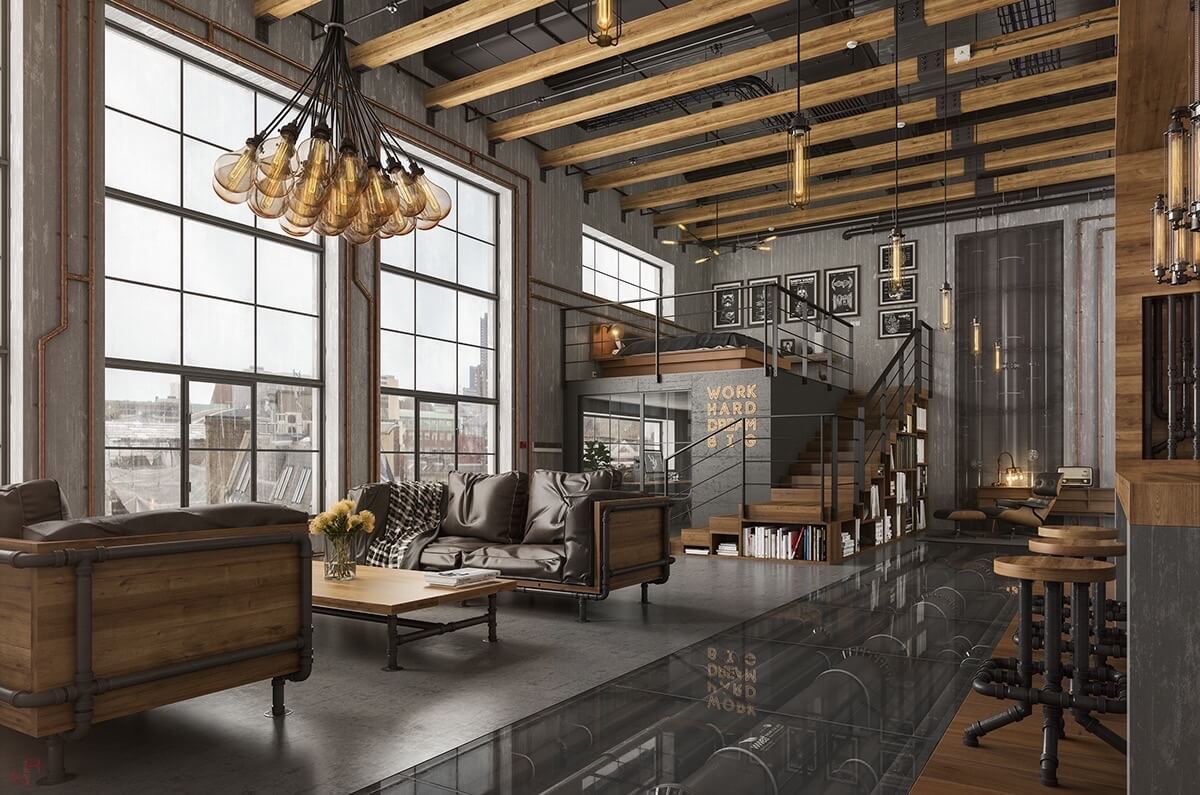
Style Vibe: Masculine, urban, raw, effortless, utilitarian.
With its steampunk elements and unfinished materials, the Industrial interior design style evokes a raw, urban factory feel. It merges sleek Modern style with an old-world feel to create an organic, lived-in aesthetic. The key to its authentic charm is highlighting the original building materials used in a home. Think unfinished woods and metals, exposed brick, pipes, and machinery-inspired objects. This style truly celebrates the industrial environment. ⚙️
Want to know which design style matches the vibe you’re going for in your space? Take our quiz to find out!
What are the Hallmarks of Industrial Design?
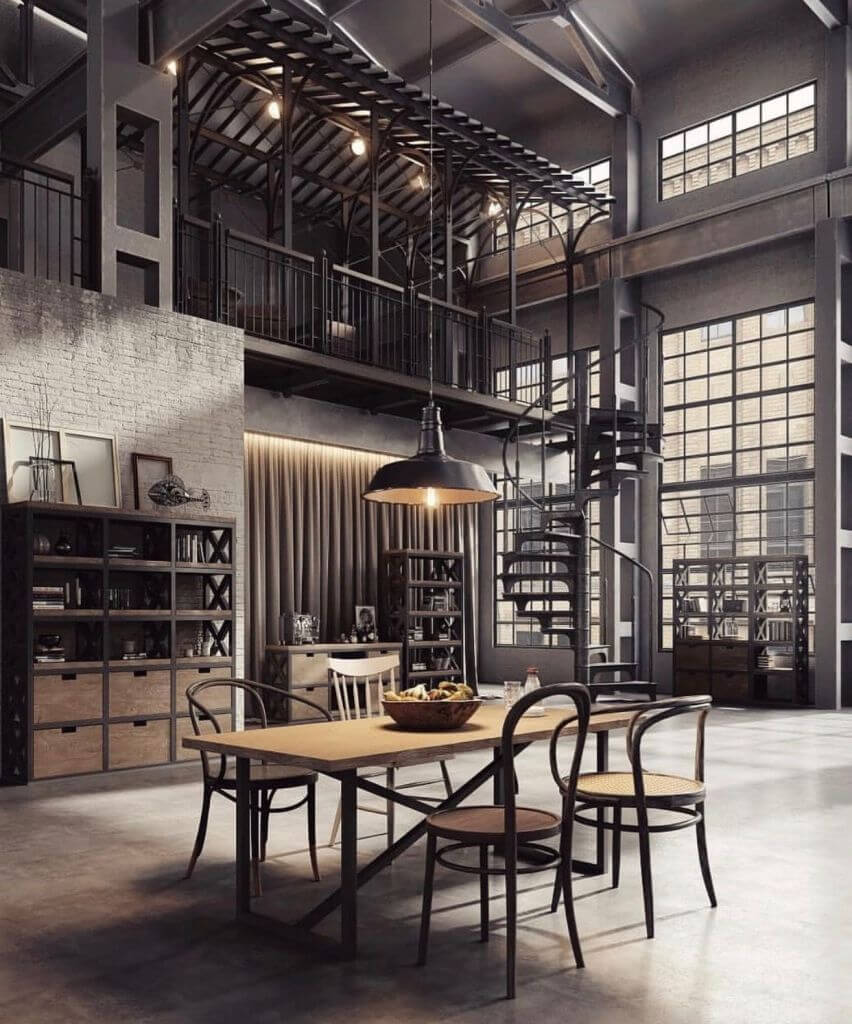
The Industrial design style’s most common features include unfinished materials, reclaimed machinery, exposed bricks and pipes, and Edison bulbs.
Is Modern Farmhouse Style For You?
This style is a perfect match for eco-friendly and budget-conscious individuals who live in large open spaces like lofts.
What Does an Industrial Home Look Like?
Architecture in the Industrial style is easily recognized by its large open floor plan, bare brick walls and pipes, and exposed wood or steel beams. Floor-to-ceiling Crittall-style and steel windows are also iconic to this design style.
How to Design Your Space in the Industrial Style:
Color Palette
An Industrial color palette is primarily composed of gray, black, and white.
Furniture
The Industrial design style typically has simple furnishings with squared lines and metal accents. Upholstery in a solid neutral color or distressed leather works well with the Industrial style, as does reclaimed woods, large metal lamps, and unfinished pendants.
Flooring
Flooring is kept simple in the Industrial design style; materials such as wood, tile, laminate, or concrete are often used. For even more details on flooring, check the handy dandy resources in The Library!
Decor
The industrial-style decor features machinery-inspired items like gears and wheels, and walls are commonly styled with black and white photography, large abstract art, and mirrors.
Window Treatments
Ideally, the Industrial design style goes without window treatments; however, long-flowing linen drapes can be used. By the way, DezignSpace has your back when it comes to the ins and outs of window treatments; check out Drama-free Drapery: Your Detailed Guide to Understanding Window Treatment Basics
What to AVOID When Styling an Industrial Space
The Industrial design style avoids looking “styled” and does not typically include painted walls or wallpaper, bright colors, heavy patterns, and figurines.
Is the Industrial design style totally your jam? If so, be sure to hop over to The Store to check out some Industrial goodies that we love! If you’re looking for more, check out these retailers:
-
International
Canada:
Europe:
Check out another design style that might light you up! We think you’ll love the Design Style Spotlight: Modern Farmhouse.
Design Style Spotlight: Modern Farmhouse
Wednesday, June 2, 2021 at 12:09am
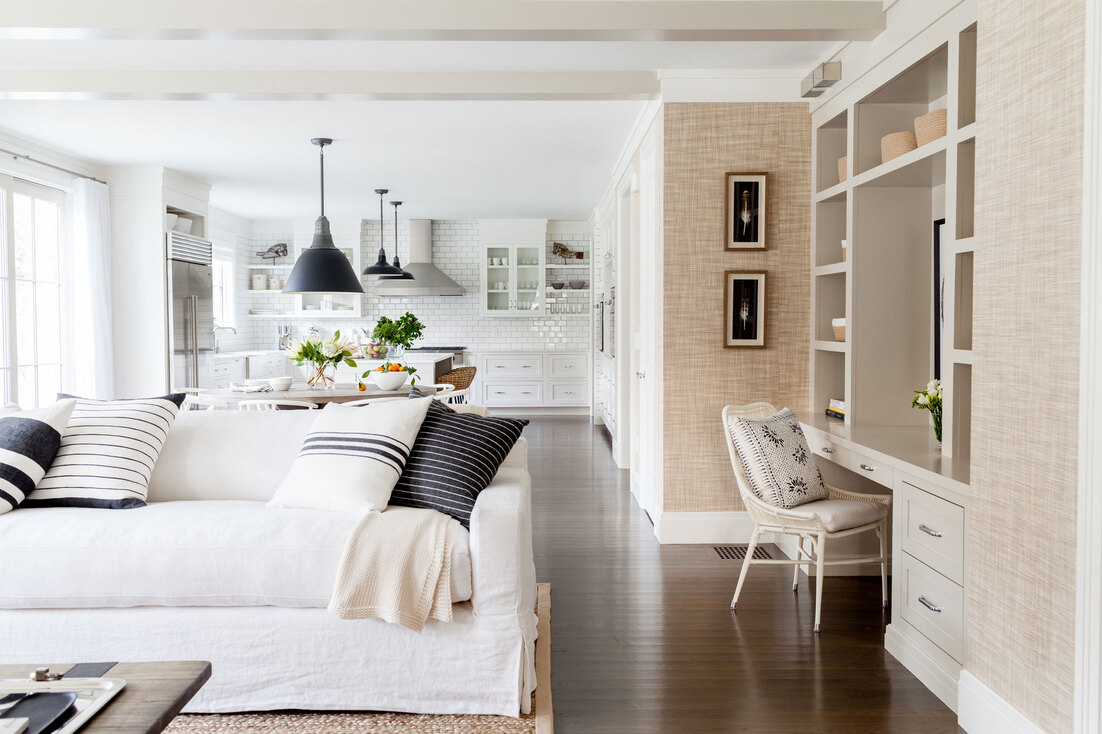
Style Vibe: Inviting, kid-friendly, rustic, practical.
Warm, comfortable, and pulled together, the Modern Farmhouse design style features elevated but practical interiors. Taking cues from the provincial, it’s a beautiful mix of high and low decor that works perfectly for a growing family. An updated blend of Rustic, Industrial, and Scandinavian styles creates an authentic feel that harmonizes with a low-key lifestyle.
Want to know which design style matches the vibe you’re going for in your space? Take our quiz to find out!
What are the Hallmarks of Modern Farmhouse Design?
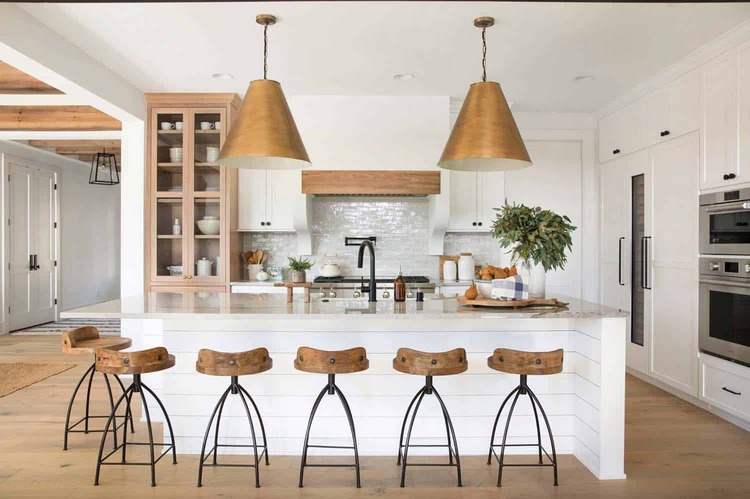
The Modern Farmhouse design style emphasizes high contrast and natural textures, with other staple features including barn doors, industrial lighting fixtures, shiplap, and a farmhouse sink.
Is Modern Farmhouse Style For You?
This style is a perfect match for individuals with a relaxed approach to interior design and families with young children.👶
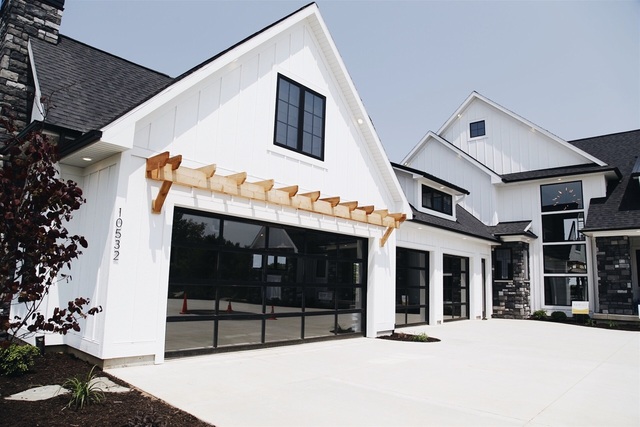 What Does a Modern Farmhouse Home Look Like?
What Does a Modern Farmhouse Home Look Like?
Architecture in the Modern Farmhouse style commonly features metal gable roofs and covered porches, exposed ceiling beams, white shiplap walls, built-ins, large windows, shaker cabinets, barn doors, and finishes in matte black or copper.
How to Design Your Space in the Modern Farmhouse Style:
Color Palette
A Modern Farmhouse color palette includes neutrals, black, white, and natural tones.
Furniture
The Modern Farmhouse design style features furnishings from mixed eras, with barn or industrial-style lighting, gooseneck lamps, and oversized pendants. Farm-style dining tables with rustic benches and Tolix chairs are iconic to this style, as are industrial stools, wire shelving, wrought iron beds, and classic hardware.
Flooring
Whitewashed wood and stained wide plank hardwoods are foundational to the Modern Farmhouse style. For even more details on flooring, check the handy dandy resources in The Library!
Decor
Modern Farmhouse decor is all about high contrast, natural fiber accents, and reclaimed objects. Handmade quilts, burlap textiles, and tasseled pillows and throws are familiar sights throughout a Modern Farmhouse home, as are wire baskets, calico, white ceramic canisters, and antique signs.
Window Treatments
Woven shades, light to mid-toned cotton or linen drapes beautifully complement the Modern Farmhouse style. By the way, DezignSpace has your back when it comes to the ins and outs of window treatments; check out Drama-free Drapery: Your Detailed Guide to Understanding Window Treatment Basics
What to AVOID When Styling a Modern Farmhouse Space
The Modern Farmhouse design style is not in any way pretentious; it avoids clutter, synthetic materials like plastic, as well as bold colors or patterns.
Is the Modern Farmhouse design style totally your jam? If so, be sure to hop over to The Store to check out some Modern Farmhouse goodies that we love! If you’re looking for more, check out these retailers:
-
International
Canada:
Europe:
Check out another design style that might light you up! We think you’ll love the Design Style Spotlight: Bohemian.
Design Style Spotlight: Bohemian
Tuesday, June 1, 2021 at 11:50pm
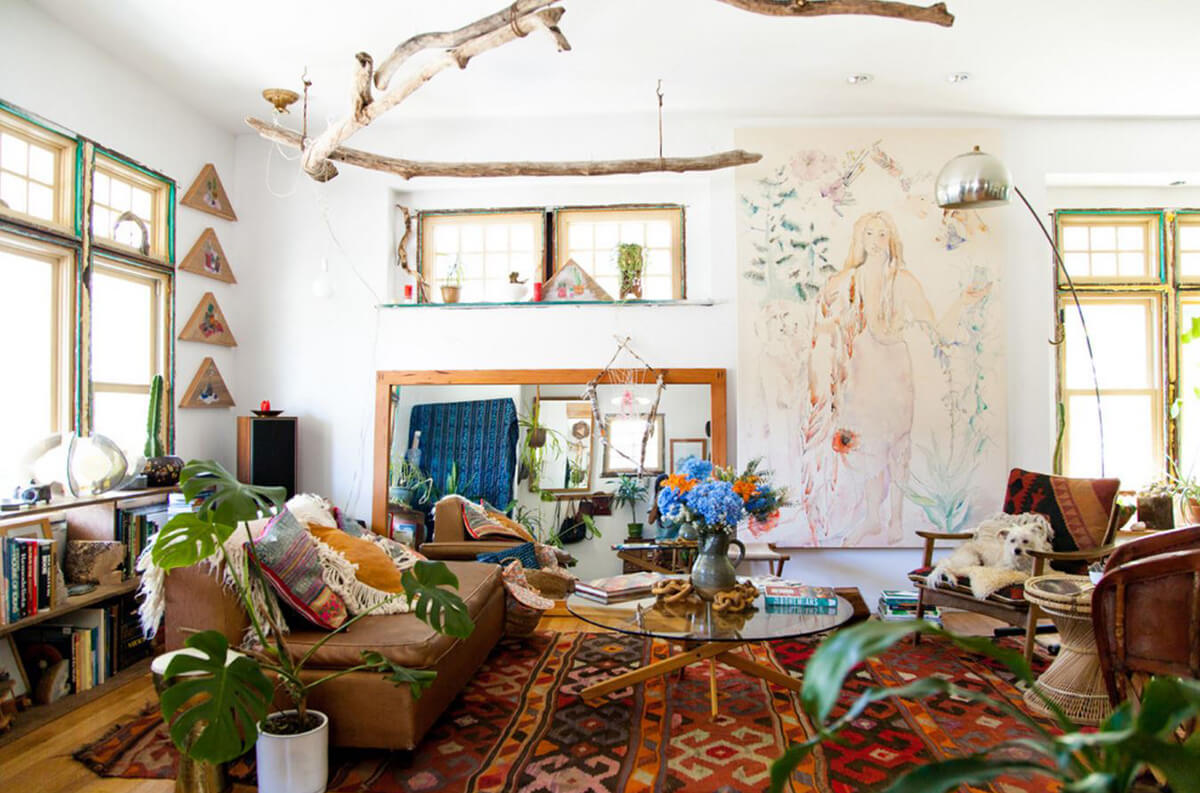
Style Vibe: Care-free, exotic, personal, fun, unconventional.
With its global blend of styles and free-spirited appeal, the Bohemian interior design style is as timeless as it is on-trend. Inspired by nomadic artists, Bohemian interior design emphasizes handmade creations that speak to originality. There are no fixed rules to this design style, except for a commitment to the unconventional and authentic. The key to styling a boho interior is that every item in your space should have a story to tell. ✌️
Want to know which design style matches the vibe you’re going for in your space? Take our quiz to find out!
What are the Hallmarks of Bohemian Design?
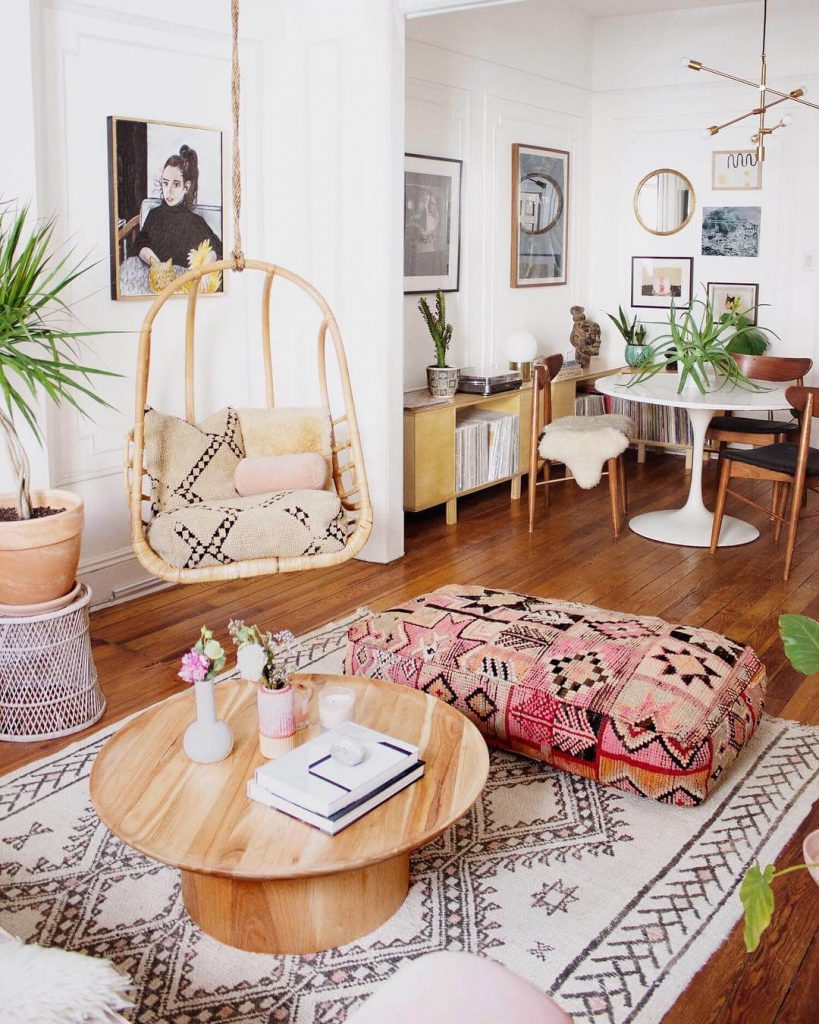
The Bohemian design style is easily recognized by its multicultural vintage pieces, natural textures, multiple layers, bold colors, and prints.
Is Bohemian Style For You?
This style is a perfect match for laidback world travelers, artists, flea market enthusiasts, and yogis. 🧘🏽
What Does a Bohemian Home Look Like?
Because of its broad-sweeping blend of styles, Bohemian design fits most homes, though it works best in non-linear and informal homes.
How to Design Your Space in the Bohemian Style:
Color Palette
Bohemian interiors display natural colors mixed with bright and bold jewel tones.
Furniture
The Bohemian design style features a blend of old and new furnishings, distressed finishes, and a hodgepodge of textures and natural materials like wicker and rattan. Low-lying seating like leather poufs and floor cushions are popular in this style, as are hanging chairs, daybeds, carved headboards, and the iconic peacock chair.
Flooring
Hand-scraped hardwoods, natural fiber carpeting, ceramic or porcelain tile in global prints, and painted floors are typical of the Bohemian style. For even more details on flooring, check the handy dandy resources in The Library!
Decor
Bohemian decor is all about layers of globally-inspired pieces in various textures, like kilim pillows, layered Moroccan and Persian rugs, African baskets, ikat, and Shibori patterned textiles and accents with bead and tassel embellishments. Walls in a Bohemian home are adorned with botanical printed wallpaper, paintings and prints in mixed-finish frames, and large tapestries. This design style wouldn’t be complete without a large variety of plants, geodes, macrame, and travel trinkets.
Window Treatments
Create Bohemian-style windows by layering global or paisley-printed drapes in neutrals or saturated colors, burlap or macrame curtains, and bamboo shades. By the way, DezignSpace has your back when it comes to the ins and outs of window treatments; check out Drama-free Drapery: Your Detailed Guide to Understanding Window Treatment Basics
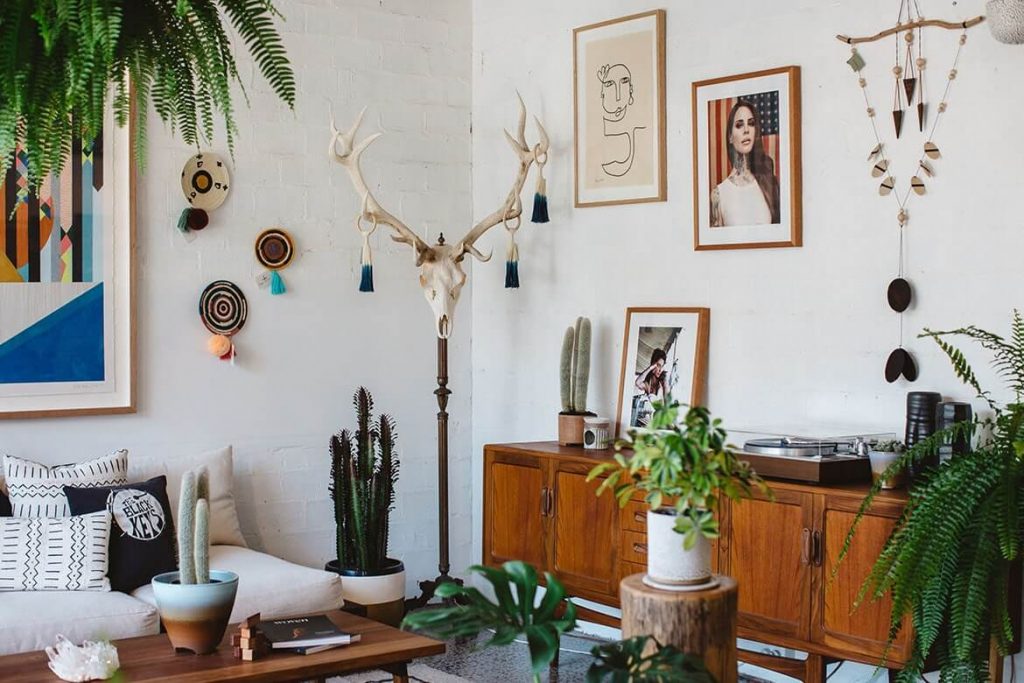 What to AVOID When Styling a Bohemian Space
What to AVOID When Styling a Bohemian Space
The Bohemian design style is not minimalistic with either order or structure and does not typically feature matching furniture sets, a lack of color or pattern, or anything that looks brand new.
Is the Bohemian design style totally your jam? If so, be sure to hop over to The Store to check out some Bohemian goodies that we love! If you’re looking for more, check out these retailers:
If so, then you are going to LOVE these retailers:
-
International
Canada:
Europe:
Check out another design style that might light you up! We think you’ll love the Design Style Spotlight: California Coastal.
Design Style Spotlight: French Contemporary
Tuesday, June 1, 2021 at 11:32pm
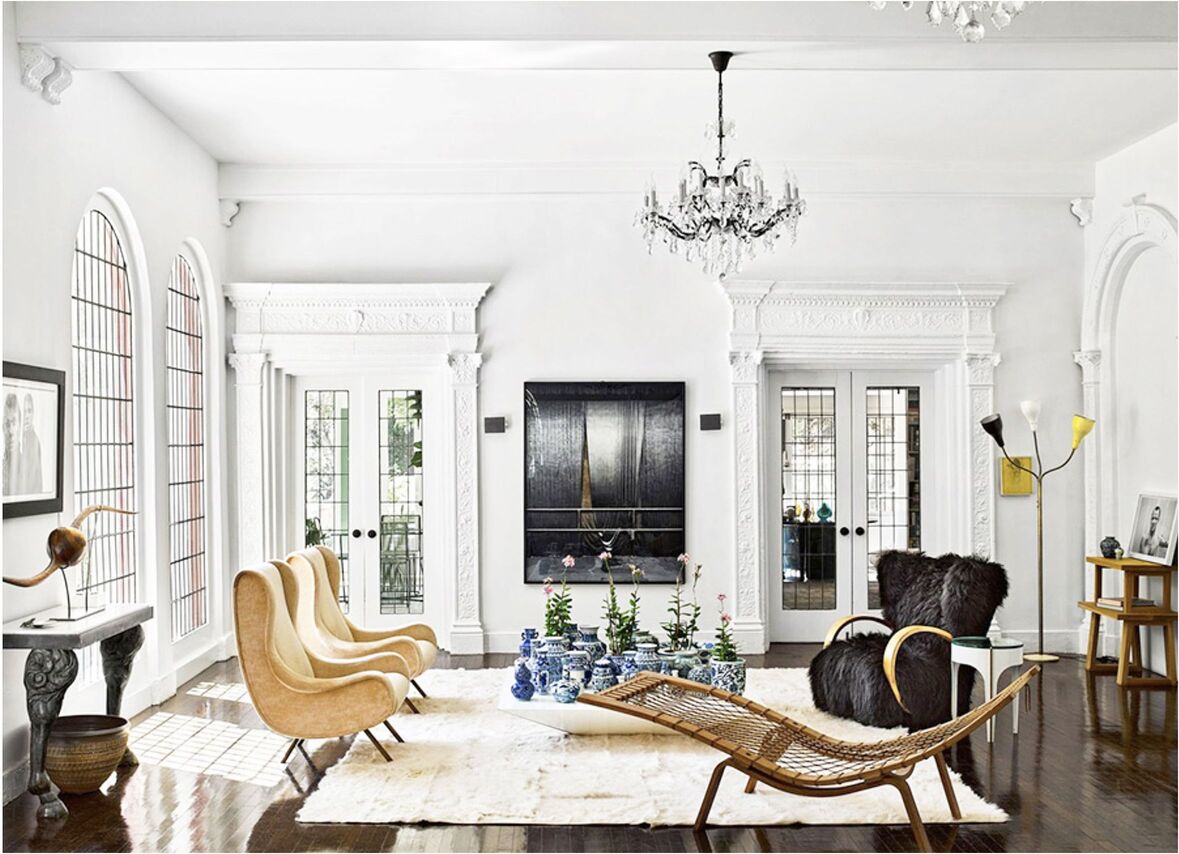
Style Vibe: Effortlessly chic, elegant, sophisticated, avant-garde.
The French Contemporary interior design style is an intoxicating blend of sophistication, elegance, and personality. French Contemporary interiors shy away from the “here today, gone tomorrow” trends of the moment and instead follow tried-and-true design principles. The result is a seamless blend of traditional design with bold new styles that creates an undeniably chic and elevated space. Think of it as the French Navy blue blazer of interior design. A classic. 🙂
Want to know which design style matches the vibe you’re going for in your space? Take our quiz to find out!
What are the Hallmarks of French Contemporary Design?
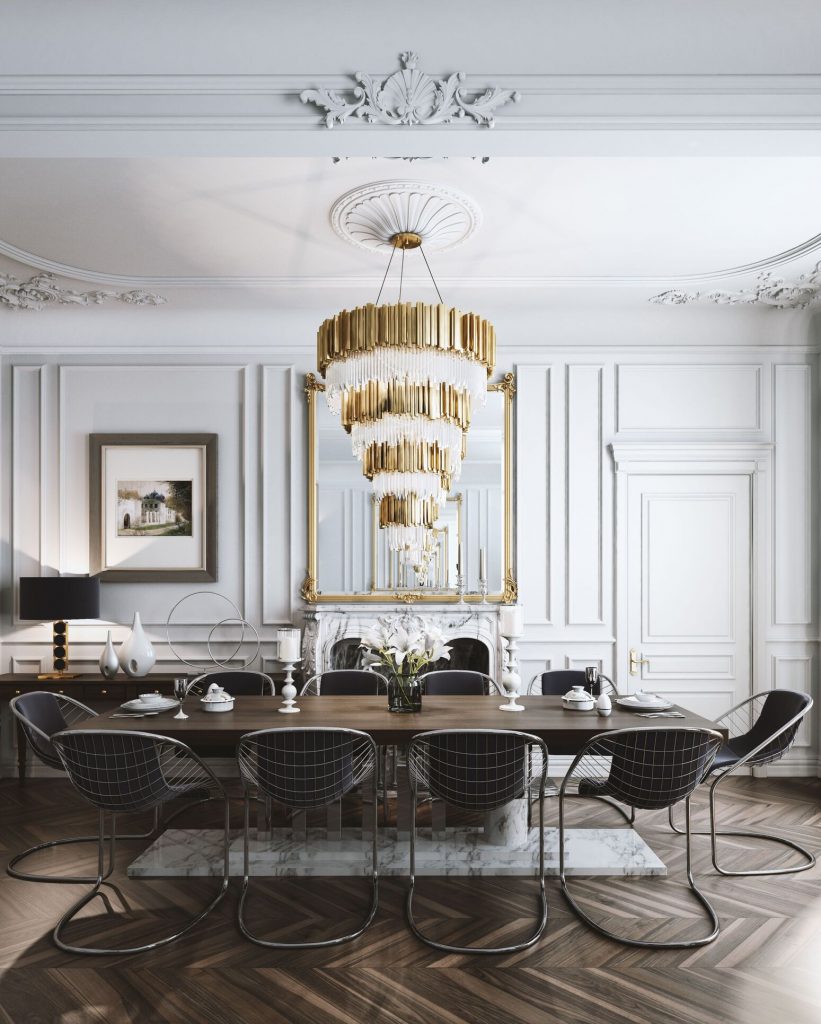
The French Contemporary design style is a beautiful blend of both the Traditional and Modern design styles. White walls, high contrast, and an appreciation for negative space are central to French Contemporary design.
Is French Contemporary Style For You?
This style is a perfect match for design savants who know how to edit well. 🧑🎨
What Does a French Contemporary Home Look Like?
French Contemporary architectural features often include elaborate stucco moldings, floor-to-ceiling windows, built-in shelving, and ornate doors.
How to Design Your Space in the French Contemporary Style:
Color Palette
French Contemporary palettes include neutrals, black and white, glints of gold, and the occasional dose of bold colors.
Furniture
French Contemporary furnishings include Baroque and Rococo mixed with contemporary silhouettes, international styles, and designs from the 1940s. Staples include Louis XV chairs, sculptural statement chandeliers, crystal sconces, and opulent upholstery like velvet and silk.
Flooring
Herringbone or parquet hardwoods and light-toned natural stone are typical in the French Contemporary style. For even more details on flooring, check the handy dandy resources in The Library!
Decor
French Contemporary decor is never overdone but doesn’t shy away from making a statement. Dramatic art pieces, classic and abstract paintings, and sizable ornate gold mirrors are commonly displayed. Accents include porcelain accessories, curiosities, vintage vases, unique coffee table books, and plenty of candles. 🕯️
Window Treatments
Floor-to-ceiling curtains in natural fabrics like linen and cotton are staples in French Contemporary design. By the way, DezignSpace has your back when it comes to the ins and outs of window treatments; check out Drama-free Drapery: Your Detailed Guide to Understanding Window Treatment Basics
What to AVOID When Styling a French Contemporary Space
The French Contemporary design style avoids looking overdone and does not typically feature matching furniture sets, cramped layouts, clutter, or trendy pieces.
Is the French Contemporary design style totally your jam? If so, be sure to hop over to The Store to check out some French Contemporary goodies that we love! If you’re looking for more, check out these retailers:
If so, then you are going to LOVE these retailers:
-
International
Canada:
Europe:
Check out another design style that might light you up! We think you’ll love the Design Style Spotlight: Contemporary.
Design Style Spotlight: California Coastal
Tuesday, June 1, 2021 at 12:36am
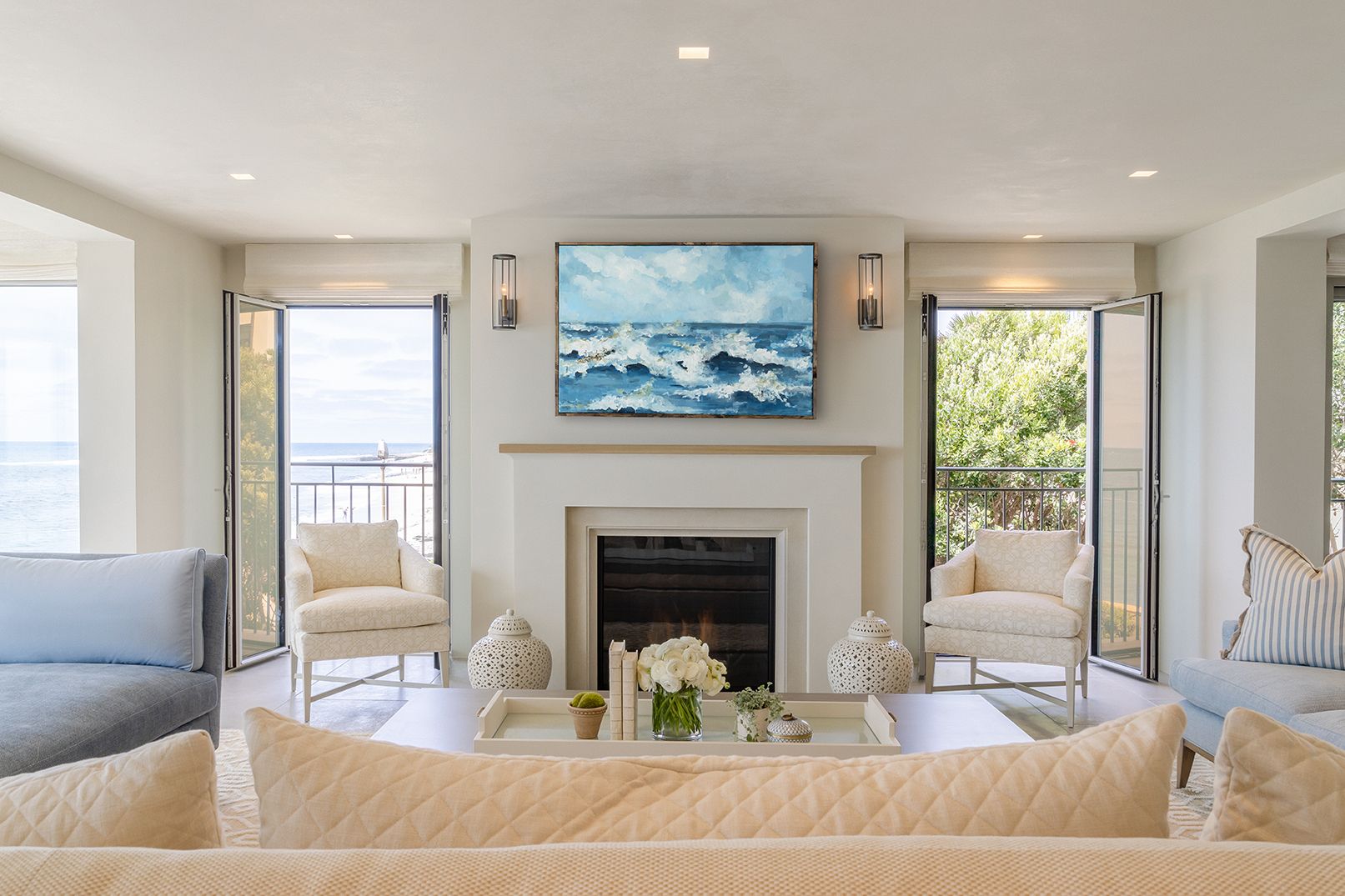
Style Vibe: Relaxed, approachable, fresh, chic, urban beach.
Eclectic with a Contemporary and Mid-century modern twist, this comfortably chic style embodies the chill vibes of the California coast. With a creative and carefree approach to décor, these spaces are brought to life with a mix of natural textures, geometric patterns, and subtle pops of color. Comfort is paramount with this design style, and a “nothing is too precious” attitude creates a livable environment that’s as stylish as it is laidback.
Want to know which design style matches the vibe you’re going for in your space? Take our quiz to find out!
What are the Hallmarks of California Coastal Design?
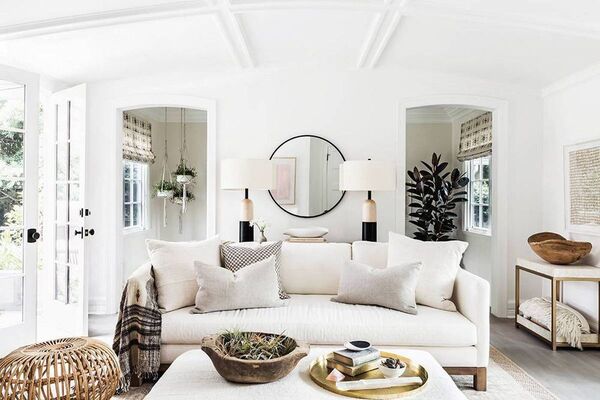
The California Coastal design style is, first and foremost, informal, with a heavy emphasis on natural textures, organic motifs, and bold patterns.
Is California Coastal Style For You?
This style is a perfect match if you’re a fan of the Bohemian style but would like a bit more polish.
What Does a California Coastal Home Look Like?
A typical California Coastal home will feature an open floor plan with large windows facing the water. Wood ceiling beams, white stucco walls, exposed concrete, and stacked stone fireplaces are also commonly seen.
How to Design Your Space in the California Coastal Style:
Color Palette
California Coastal interiors feature beach-inspired colors and a neutral foundation mixed with tints and shades as accents.
Furniture
Mid-century modern pieces in asymmetrical arrangements lend to the California Coastal design style’s casual yet chic vibe. Live edge tables, hanging rattan chairs, and woven pendants are staples, along with sculptural lighting fixtures, Morrocan poufs, and reclaimed wood furnishings.
Flooring
Light to mid-tone hardwoods, cement, and large format tile are most common in the California Coastal style. For even more details on flooring, check the handy dandy resources in The Library!
Decor
California Coastal design includes a lot of texture and pattern, such as tassel accents, woven baskets, and global prints on textiles like Shibori pillows and vintage Kilim rugs. Geometric patterns in upholstery and wallpaper play a big part in the design story, as do plants and brass decorative objects. Walls are typically decorated with beach-themed photography and abstract paintings in pastel tones.
Window Treatments
Breezy white linen drapes or sheers layered with bamboo blinds are true to the California Coastal style. By the way, DezignSpace has your back when it comes to the ins and outs of window treatments; check out Drama-free Drapery: Your Detailed Guide to Understanding Window Treatment Basics
What to AVOID When Styling a California Coastal Space
The California Coastal design style does not typically feature dark walls, matching furniture sets, or anything overly formal or grand.
Is the California Coastal design style totally your jam? If so, then you are going to LOVE these retailers:
-
International
Canada:
Europe:
There’s plenty more where that came from; why not take a peek at another design style spotlight? We think you’ll love the Design Style Spotlight: Eastern Coastal.
Design Style Spotlight: Scandinavian
Monday, May 31, 2021 at 11:29pm
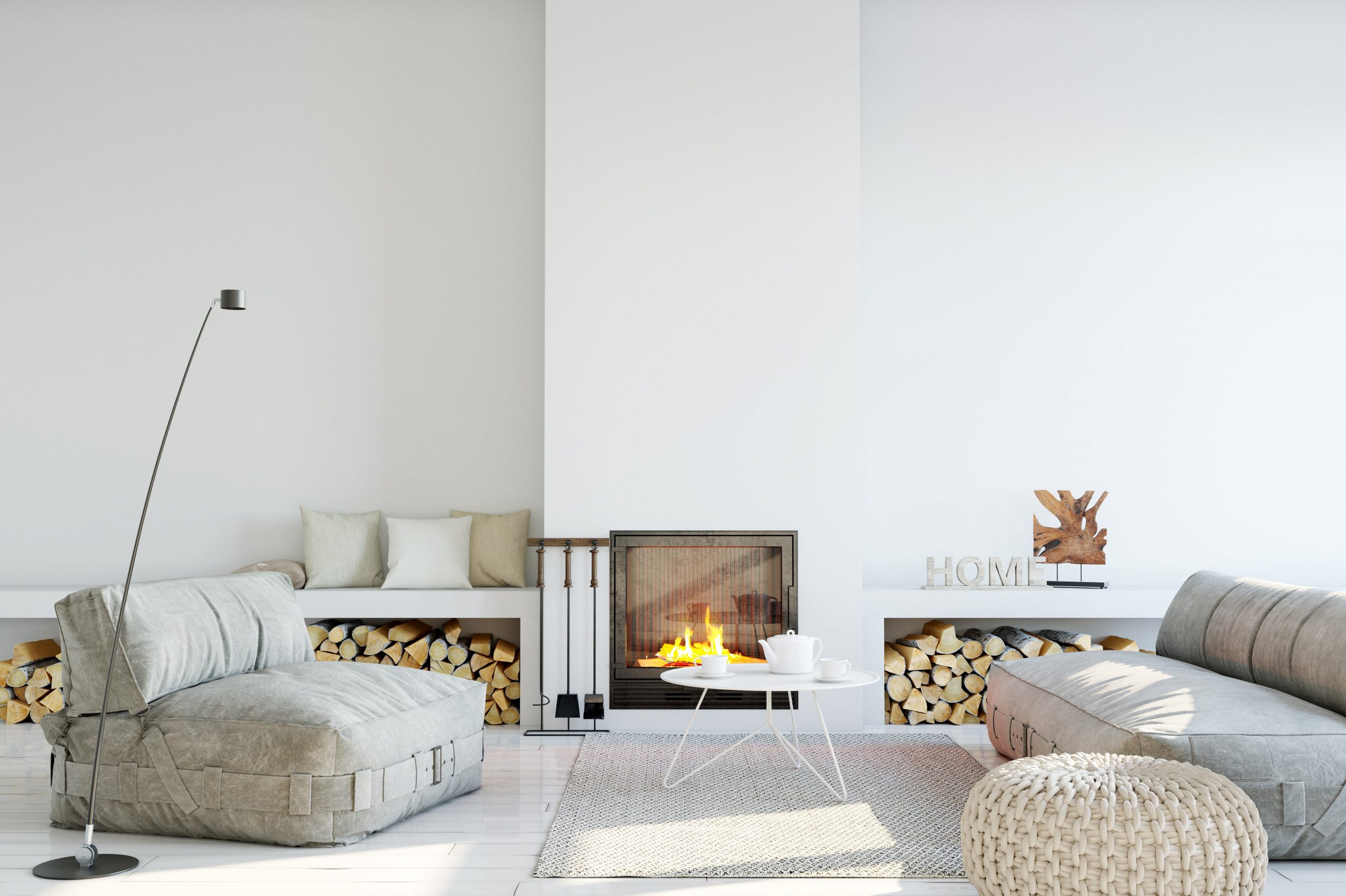
Style Vibe: Minimal, cozy, inviting, serene, airy.
With its minimalistic simplicity and a blend of textures, and soft color palette, Scandinavian interior design makes sleek, modern spaces feel cozy and inviting. It is often mistaken for Mid-century Modern as both styles emphasize clean lines, a connection to nature, and simple furnishings that are functional, stylish, and comfortable. Although Scandinavian interiors lean on the modern side, this design style often features a blend of eras to make a space feel layered and timeless. A balanced space with a thoughtfully edited mix of elements is key.
Want to know which design style matches the vibe you’re going for in your space? Take our quiz to find out!
What are the Hallmarks of Scandinavian Design?
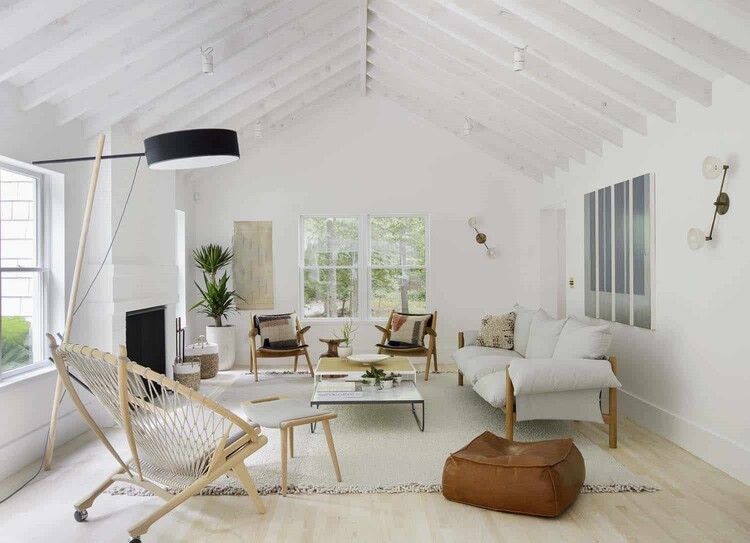
The Scandinavian design style’s most recognizable features are blonde woods, soft hues, white walls, an emphasis on clean lines, high contrast, organic shapes, and light-filled spaces.
Is Scandinavian Style For You?
This style is a perfect match for individuals who like to stay organized and love Modern design but want a warm and inviting space.
What Does a Scandinavian Home Look Like?
A home built in the Scandinavian style will include everything from traditional, ornate architectural details to Contemporary spaces with clean lines. Corner fireplaces and floor-to-ceiling windows are also common.
How to Design Your Space in the Scandinavian Style:
Color Palette
A typical Scandinavian color palette includes muted tones, off-whites, blacks, grays, and taupe, along with the occasional pop of color like sage green, soft pink, and lemon yellow.
Furniture
Furniture pieces with smooth, rounded edges are fundamental to this style. Tulip tables and swan chairs are easily recognizable as classic Scandinavian designs, as are furnishings made of wood or other natural materials. Staples also include cognac leather and a mix of matte black and warm metallic lighting finishes.
Flooring
Blonde or warm-toned hardwoods are most common in the Scandinavian style. For even more details on flooring, check the handy dandy resources in The Library!
Decor
Scandinavian design includes a lot of natural texture; for example, sheepskin throws and mohair pillows should be used throughout your space. Look for textiles with simple geometric prints, and accessorize with olive branches, fresh flowers, and objects made of brass and wood. Black and white or sepia-tone photography looks fantastic when combined with white walls and blonde wood, as does a vintage kilim rug.
Window Treatments
Natural light is paramount to this design, so windows are best left unobstructed or use white sheers. By the way, DezignSpace has your back when it comes to the ins and outs of window treatments; check out Drama-free Drapery: Your Detailed Guide to Understanding Window Treatment Basics
What to AVOID When Styling a Scandinavian Space
The Scandinavian design style does not typically feature wall-to-wall carpeting, clutter, saturated colors, or overly bold patterns.
Is the Scandinavian design style totally your jam? If so, then you are going to LOVE these retailers:
-
International
Canada:
Europe:
There’s plenty more where that came from; why not take a peek at another design style spotlight? We think you’ll love the Design Style Spotlight: California Coastal.
Design Style Spotlight: Modern
Monday, May 31, 2021 at 9:13pm

Style Vibe: Clean, functional, balanced, simple.
Modern design focuses on simplicity, contrast, and uniqueness and can incorporate many different styles into one. Created at the Bauhaus School of Design in Germany in 1919, Modern interior design refers to the depiction of modern art movements in a space. Often confused with Contemporary design, the Modern interior design style is warmer and less stark, with furnishings that embrace natural materials and earthy colors. One of the critical ideas of the Modern design movement is “form follows function.” In other words, a furnishing or detail that doesn’t have a practical purpose needs to be removed.
Want to know which design style matches the vibe you’re going for in your space? Take our quiz to find out!
What are the Hallmarks of Modern Design?
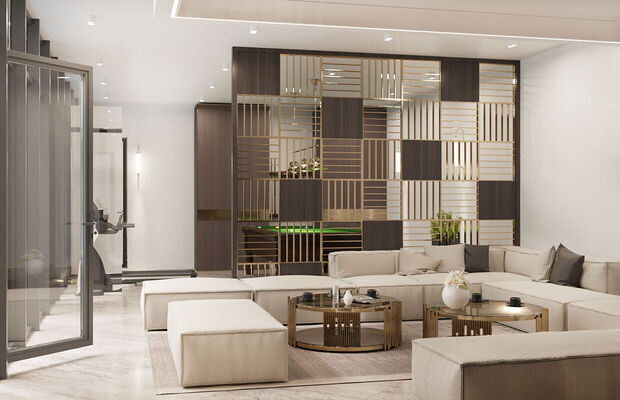
The Modern design style showcases clean lines and minimal ornamentation while emphasizing a strategic use of space. High contrast and natural materials are also featured.
Is Modern Style For You?
This style is a perfect match for budget-conscious small space dwellers who prefer an uncluttered and fuss-free environment.
What Does a Modern Home Look Like?
Modern architectural features include asymmetry, horizontal and vertical lines vs. curves, and open spaces with plenty of large windows. Minimal ornamentation is seen in the trim and molding, and building materials are often left bare to provide their own accents.
How to Design Your Space in the Modern Style:
Color Palette
The Modern design style color palette includes neutrals, white, black, and occasional vivid pops of color.
Furniture
Sleek and minimalistic, Modern furnishings feature solid colors without prints or patterns, straight lines, and exposed legs. Reflective surfaces like chrome and glass will be seen throughout a modern space, as well as finishes in natural materials like stone, wood, and leather.
Flooring
Modern style flooring is typically lighter in color, such as a white or gray tile/laminate, but can also include natural wood floors and terrazzo. For even more details on flooring, check the handy dandy resources in The Library!
Decor
Carefully curated unique art pieces and chrome or polished steel accents are decor staples in Modern design. Also included are geometric or solid color rugs and throws and a single large centerpiece used as a focal point.
Window Treatments
Natural light is celebrated in Modern design, so windows typically are unadorned or have simple shades. By the way, DezignSpace has your back when it comes to the ins and outs of window treatments; check out Drama-free Drapery: Your Detailed Guide to Understanding Window Treatment Basics
What to AVOID When Styling a Modern Space
The Modern design style avoids clutter, knick-knacks, busy prints, ornate designs, and curves.
Is the Modern design style totally your jam? If so, then you are going to LOVE these retailers:
-
International
Canada:
Europe:
There’s plenty more where that came from; why not take a peek at another design style spotlight? We think you’ll love the Design Style Spotlight: Scandinavian.
Design Style Spotlight: Contemporary
Monday, May 31, 2021 at 8:54pm
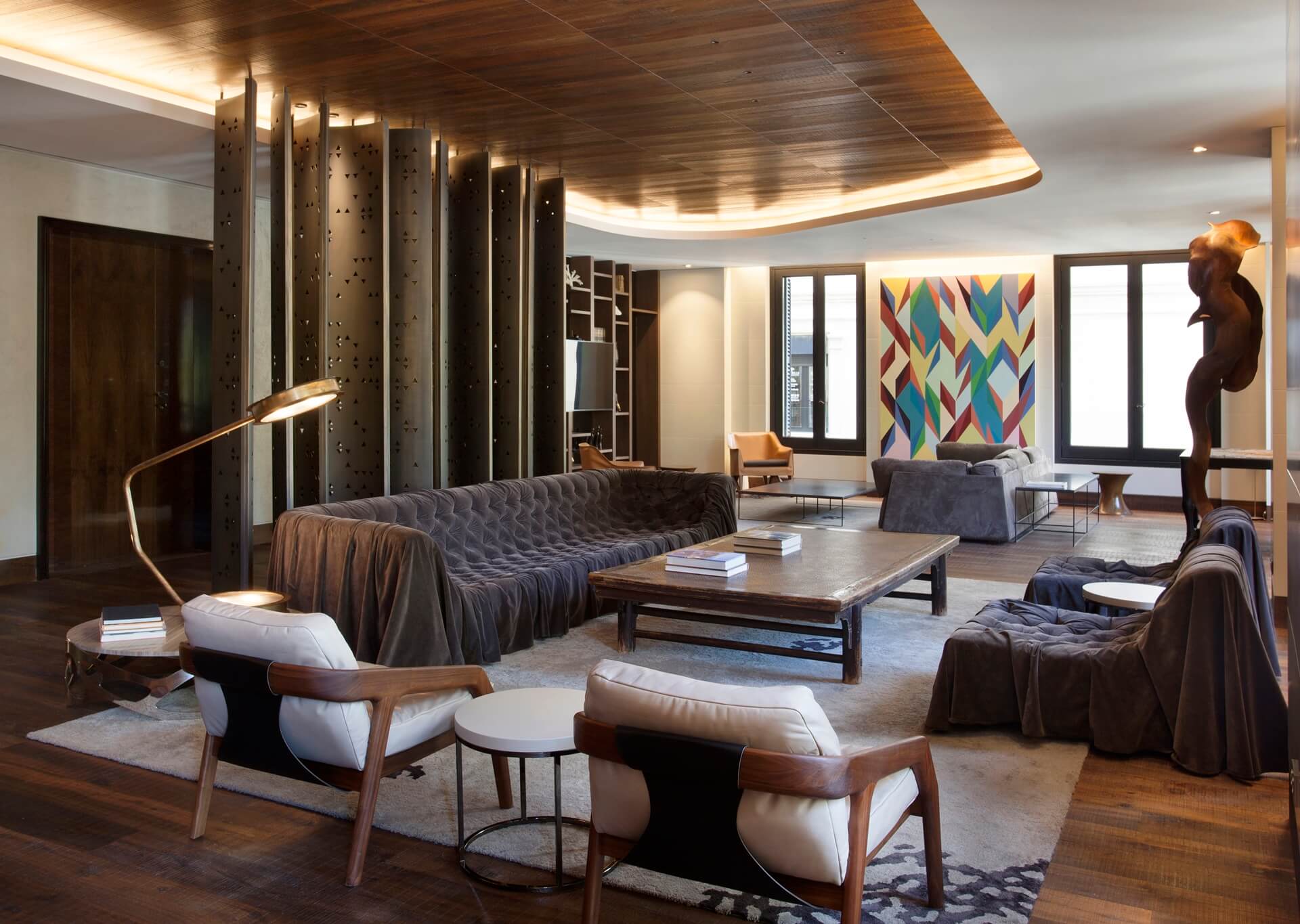
Style Vibe: Subtle sophistication, sleek, uncluttered, light, airy.
Although Contemporary and Modern styles share similarities, Contemporary design stands all on its own. Modern interior design represents forward-thinking styles, even if it began decades ago, whereas Contemporary design includes the ever-evolving styles of the present moment. It offers greater flexibility and has a larger style scope than Modern design, which has more rigid style criteria. Contemporary design includes several sub-groups like Art Deco, Modern, and Scandinavian. To further clarify, Modern design is Contemporary; however, the reverse is incorrect. Not all Contemporary design is Modern.
Want to know which design style matches the vibe you’re going for in your space? Take our quiz to find out!
What are the Hallmarks of Contemporary Design?
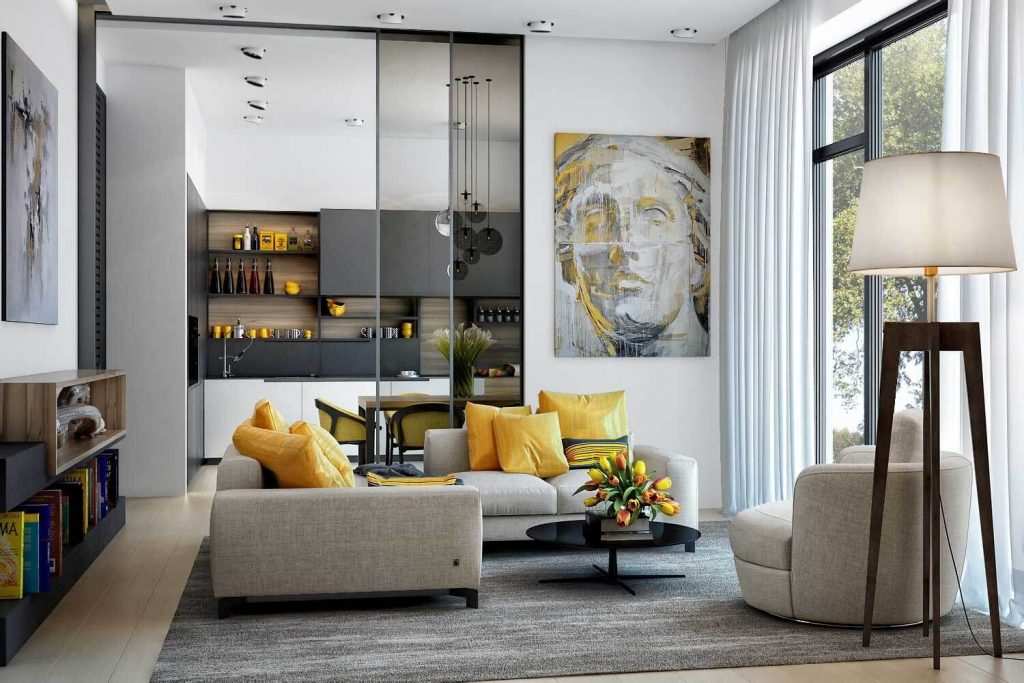
The Contemporary design style focuses on color, shape, line, and mass while also emphasizing the open space around an object rather than the thing itself.
Is Contemporary Style For You?
This style is a perfect match for minimalists, artists, and/or anyone who loves art.
What Does a Contemporary Home Look Like?
Contemporary architecture favors asymmetry, clean lines, and open floor plans. It avoids anything overly ornamental, with typical features including flat roofs, simple trims, and large windows.
How to Design Your Space in the Contemporary Style:
Color Palette
Contemporary color palettes are composed of neutrals, white, grey, black, taupe, and occasional pops of color.
Furniture
Contemporary furnishings showcase sleek lines and geometric silhouettes with upholstery in natural textiles like silk, wool, and cotton. Raised chairs and sofas accompanied by glass and metal coffee tables are also commonly seen.
Flooring
Contemporary style flooring includes anything that successfully serves as a supporting backdrop, such as simple hardwoods, low-pile carpets, large format tile, or stone. For even more details on flooring, check the handy dandy resources in The Library!
Decor
Contemporary decor includes large, chunky objects in high-shine metal, glass, and stone finishes, while pillows, throws, and rugs are used to soften the overall look. Eye-catching paintings or art pieces that act as focal points are a must.
Window Treatments
Window treatments are minimal in Contemporary design, especially if the windows are large or have a view. Long white sheers and dark-toned blinds are often used. By the way, the DezignSpace has your back when it comes to the ins and outs of window treatments; check out Drama-free Drapery: Your Detailed Guide to Understanding Window Treatment Basics
What to AVOID When Styling a Contemporary Space
The Contemporary design style avoids skirted furniture and anything that produces too much visual “noise,” like clutter, busy patterns, or intricate details.
Is the Contemporary design style totally your jam? If so, then you are going to LOVE these retailers:
-
International
Canada:
Europe:
There’s plenty more where that came from; why not take a peek at another design style spotlight? We think you’ll love the Design Style Spotlight: Traditional.
Design Style Spotlight: Transitional
Monday, May 31, 2021 at 8:27pm
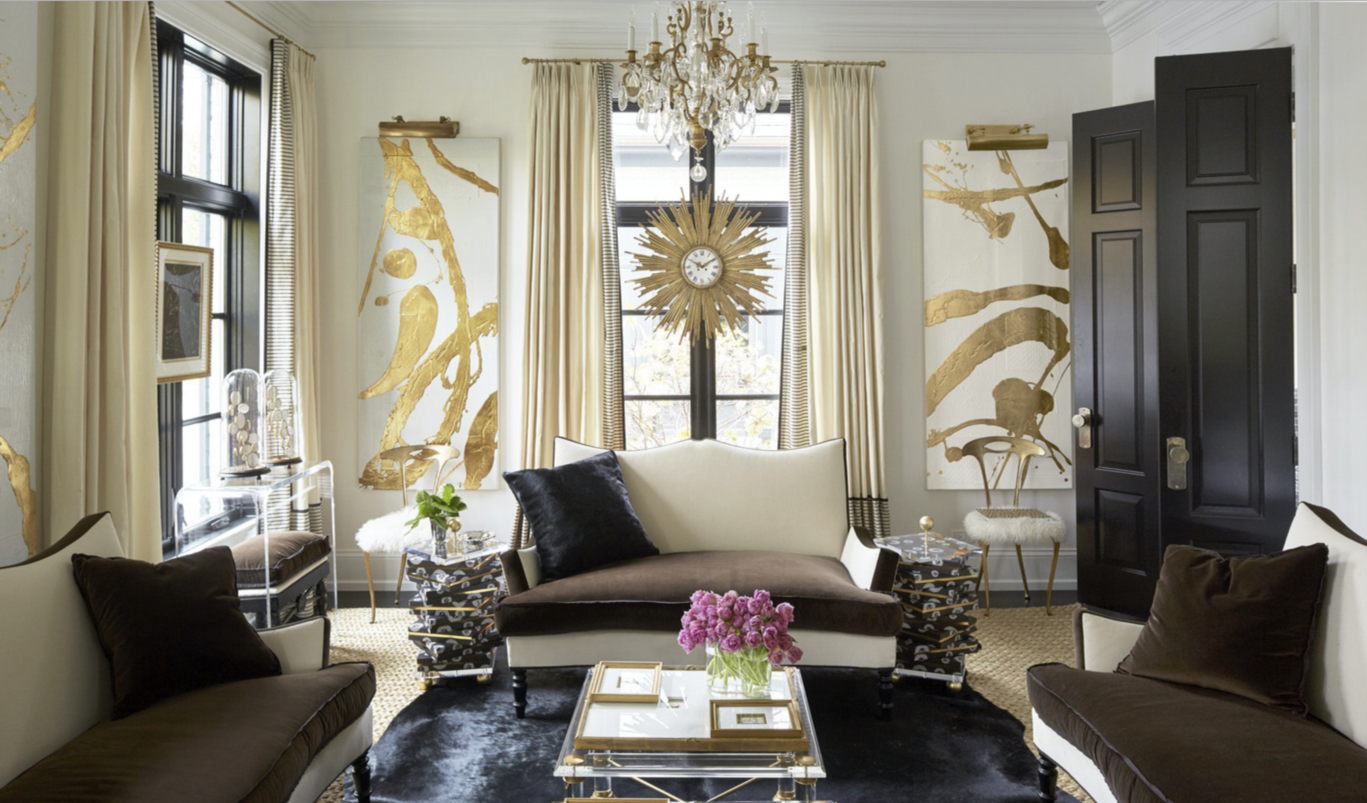
Style Vibe: Balanced, unexpected, relaxed, cohesive, informal, simple.
Transitional style refers to a blend of traditional and modern design features as it uses the best design elements from both styles and merges them together. Transitional design is sophisticated yet straightforward and stands on its own through tried and true styling combinations. The unity of traditional and modern decor prevents the space from looking too much like any specific design style. The key to transitional design is to use various furnishings with common denominators that will make everything feel coordinated.
Want to know which design style matches the vibe you’re going for in your space? Take our quiz to find out!
What are the Hallmarks of Transitional Design?
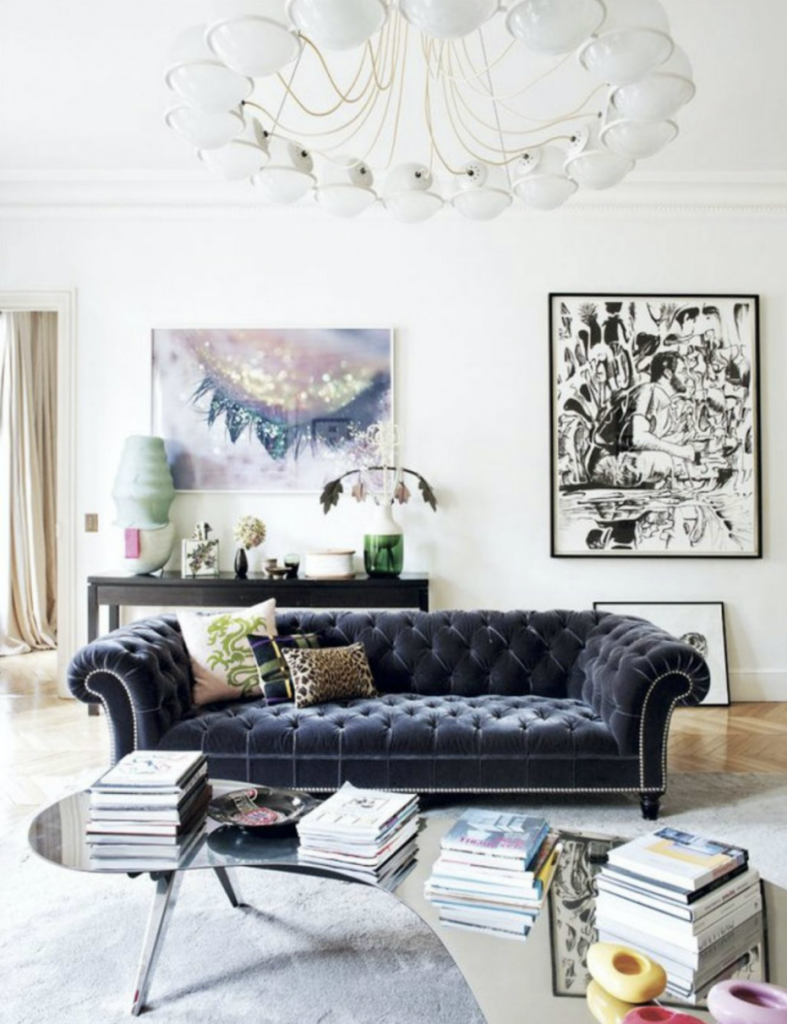
The Transitional design style embodies classic features juxtaposed with modern design elements while emphasizing a clear focal point with accent pieces playing a supporting role.
Is Transitional Style For You?
This style is a perfect match for individuals who have recently moved, got married, or inherited furniture and are trying to blend design styles. Also great for creatives who want the freedom to experiment with several styles.
What Does a Transitional Home Look Like?
Transitional design includes either traditional-style features like ornate crown molding and wainscotting or modern, clean lines with minimal ornamentation.
How to Design Your Space in the Transitional Style:
Color Palette
Transitional colors are typically light and soft, but darker, moody tones can be included. The palette consists of neutrals, a tonal range of hues, and complementary shades, with minimal pops of color dispersed throughout the space.
Furniture
Transitional furnishings feature simple silhouettes with furniture legs that are similar in form and scale and plush, comfortable, overstuffed upholstery.
Flooring
Transitional style flooring commonly includes hardwoods in various tones, tile, cement, and simple stones. For even more details on flooring, check the handy dandy resources in The Library!
Decor
Transitional decor includes a mix of vintage and contemporary pieces in multiple textiles and textures; however, minimal pattern is used. Transitional decor also features objects with a story/personality and one oversized object or a large grouping of similar items as a focal point.
Window Treatments
Transitional design uses simple, classic drapes in a solid color that pulls the other tonal elements of the room together. By the way, the DezignSpace has your back when it comes to the ins and outs of window treatments; check out Drama-free Drapery: Your Detailed Guide to Understanding Window Treatment Basics
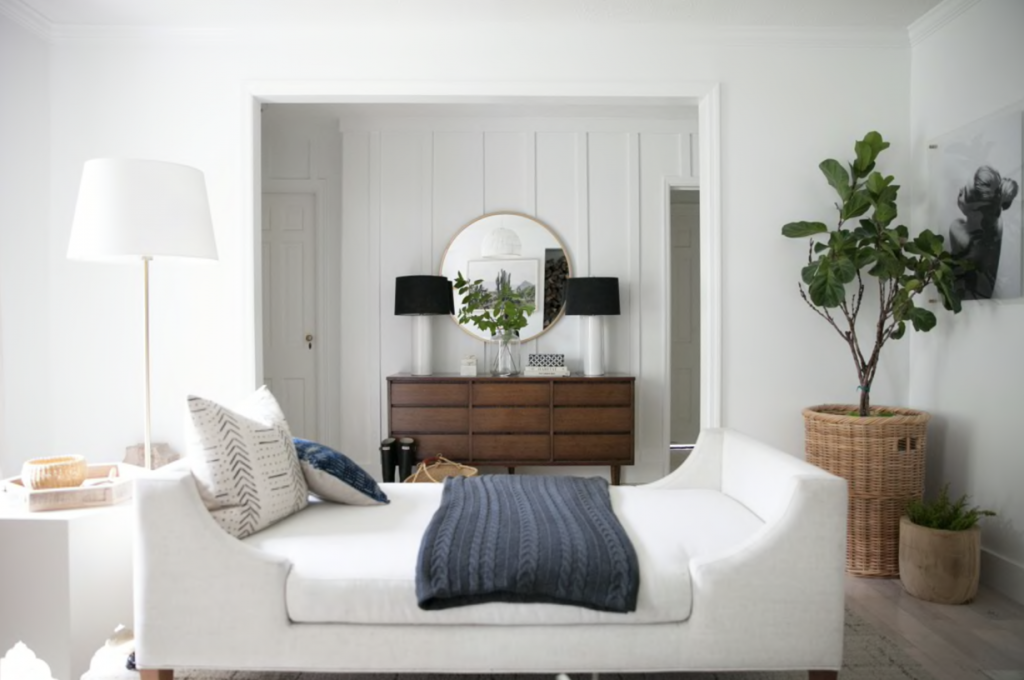 What to AVOID When Styling a Transitional Space
What to AVOID When Styling a Transitional Space
The Transitional design style avoids a lack of focal point, too many colors, heavy patterns, and an overplay of the ornate.
Is the Transitional design style totally your jam? If so, then you are going to LOVE these retailers:
-
International
Canada:
Europe:
There’s plenty more where that came from; why not take a peek at another design style spotlight? We think you’ll love the Design Style Spotlight: Traditional.
Design Style Spotlight: Traditional
Saturday, March 27, 2021 at 5:43pm
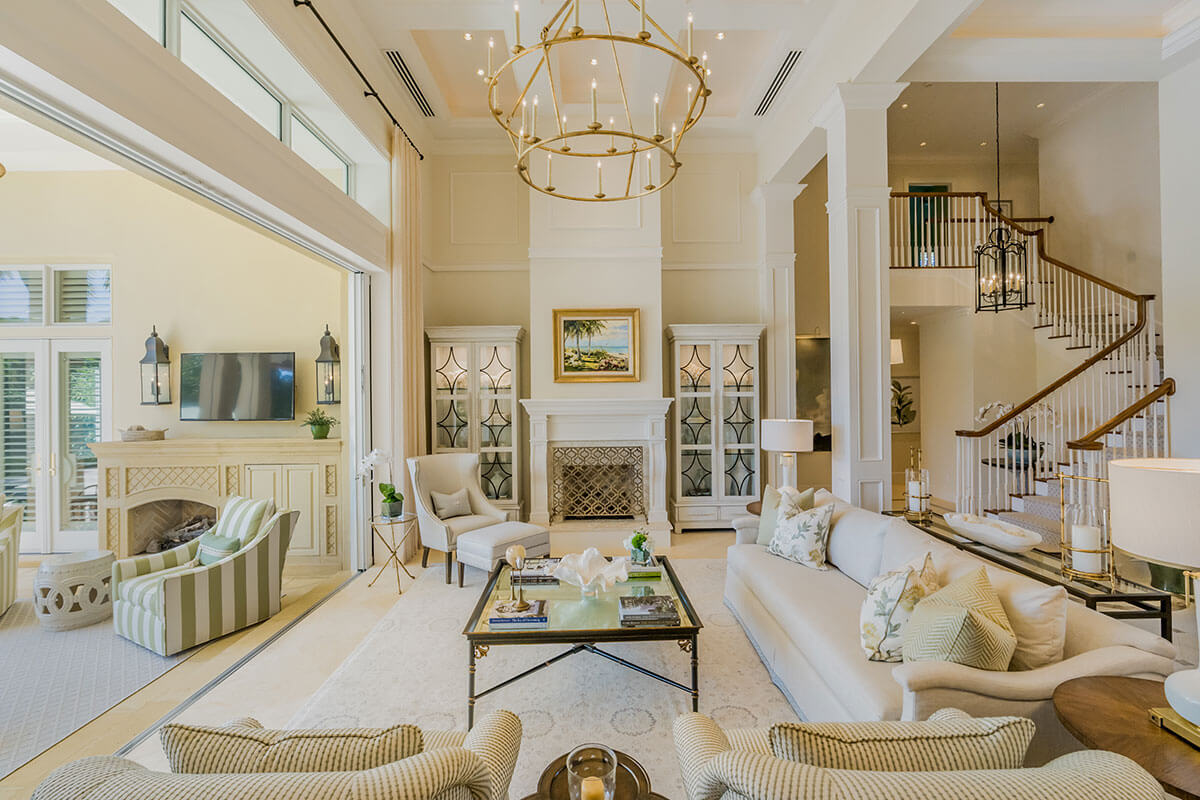
Style Vibe: Dramatic, stately, warm, elegant, formal, timeless, classic.
Traditional design is a timeless go-to style that exudes refinement and luxurious comfort. It reflects classic European architecture, and styles can hail from France, Italy, the UK, or even Spain. Almost all of the other design styles have their roots in Traditional interior design. It typically incorporates neutrals and rich tones combined with the occasional flash of vibrancy and uses ornate patterns and designs to add an upscale touch. Traditional design aims to create a symmetrical background with rich trappings to draw attention to the room’s focal points.
Want to know which design style matches the vibe you’re going for in your space? Take our quiz to find out!
What are the Hallmarks of Traditional Design?
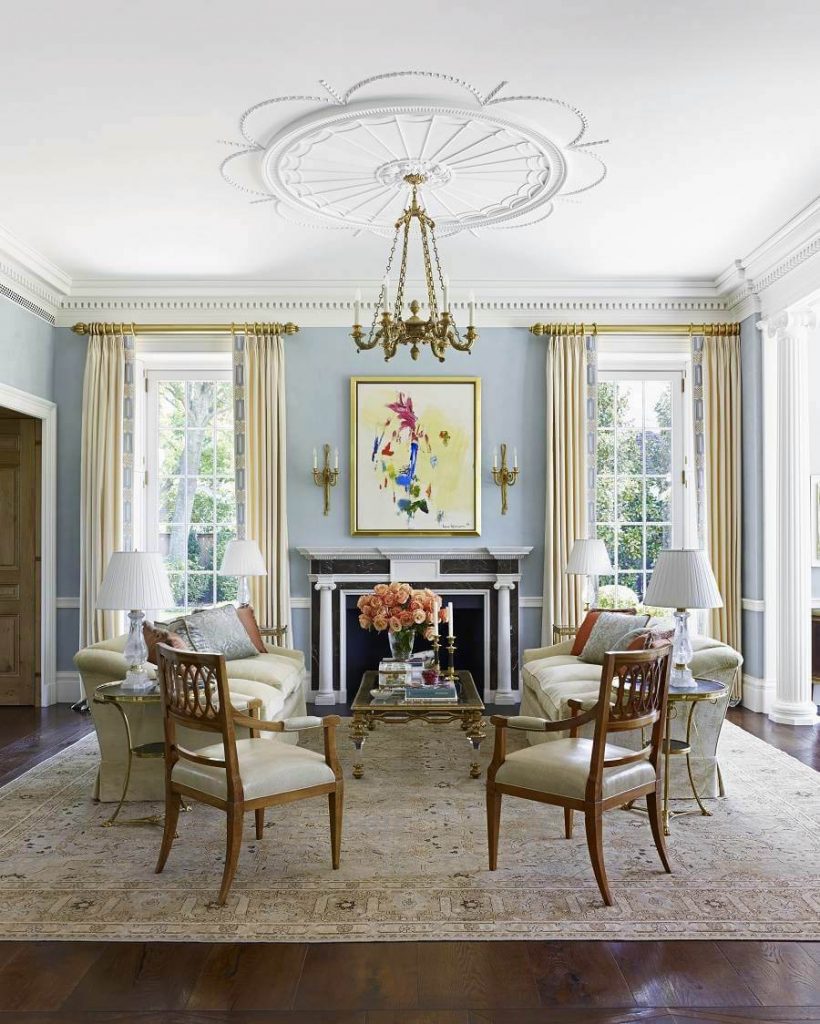
The Traditional design style strongly features furnishings with a defined period style or ornamentation, i.e., Queen Anne, the Louis’, Colonial, Victorian, and French Provincial. Other recognizable elements of this style are rich woods, solid colors, formal patterns, and a focus on symmetry, balance, and formality.
Is Traditional Style For You?
This style is a perfect match for those who love antiques, history, and classic art. Because it typically uses larger furniture pieces, Traditional design is ideal for a larger home with plenty of space.
What Does a Traditional Home Look Like?
A home built in the Traditional style will boast elaborate embellishments, such as ornamental molding and trim, cornices, and built-in cabinetry with detailed molding.
How to Design Your Space in the Traditional Style:
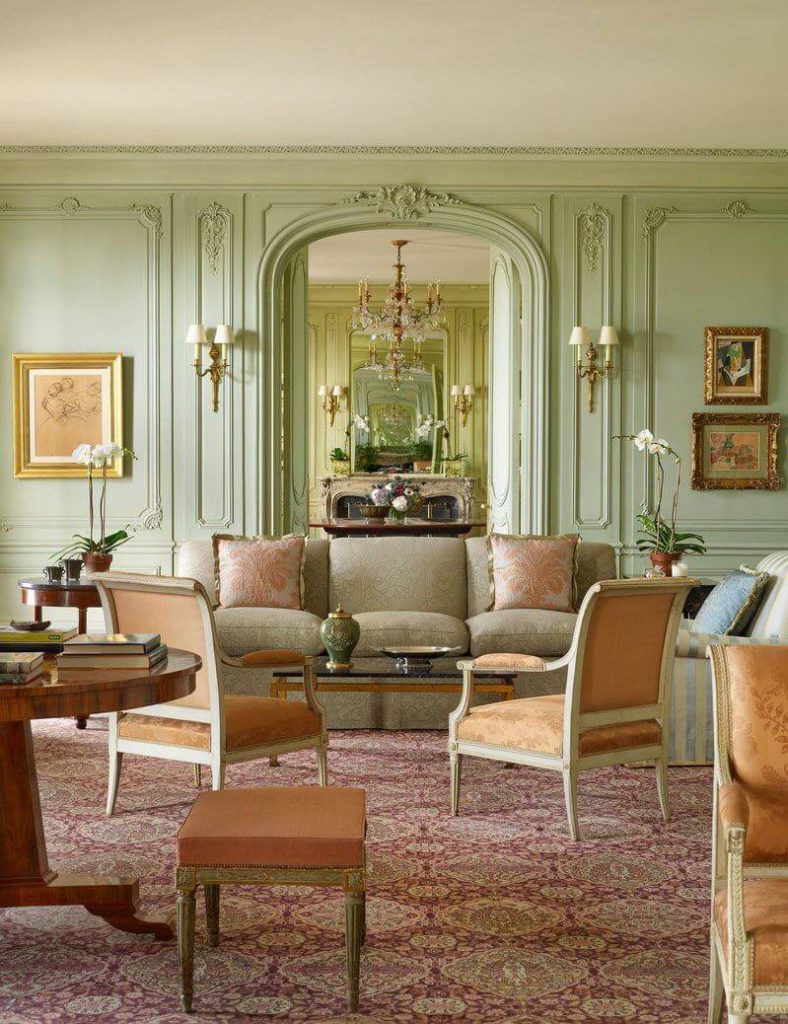 Color Palette
Color Palette
Neutral solid colors, such as gray, tan, beige, brown, white, and pastels, are staples; however, rich colors like saturated jewel tones are also commonly used.
Furniture
The Traditional style tends to have heavier, more sumptuous furniture pieces. Wing chairs, Chesterfield seating, claw-footed tables, accents like detailed carvings of leaf or scroll motifs, and furnishings in darker woods are fundamental to this style. Gilt, silver leaf, and inlaid ornamental patterns are easily recognizable Traditional design features.
Flooring
Dark hardwoods and ornamental stone are typical of the Traditional style. For even more details on flooring, check the handy dandy resources in The Library!
Decor
Classic paintings, ornate vases, and antique lamps should be used throughout your space. Look for accessories that mimic the shape and form of the Traditional architecture and furniture.
Window Treatments
Use ornately detailed hardware to hang dramatic floor-to-ceiling neutral-toned drapery, jewel-toned velvet curtains, or boxed valances with embroidered borders. Check out Drama-free Drapery: Your Detailed Guide to Understanding Window Treatment Basics
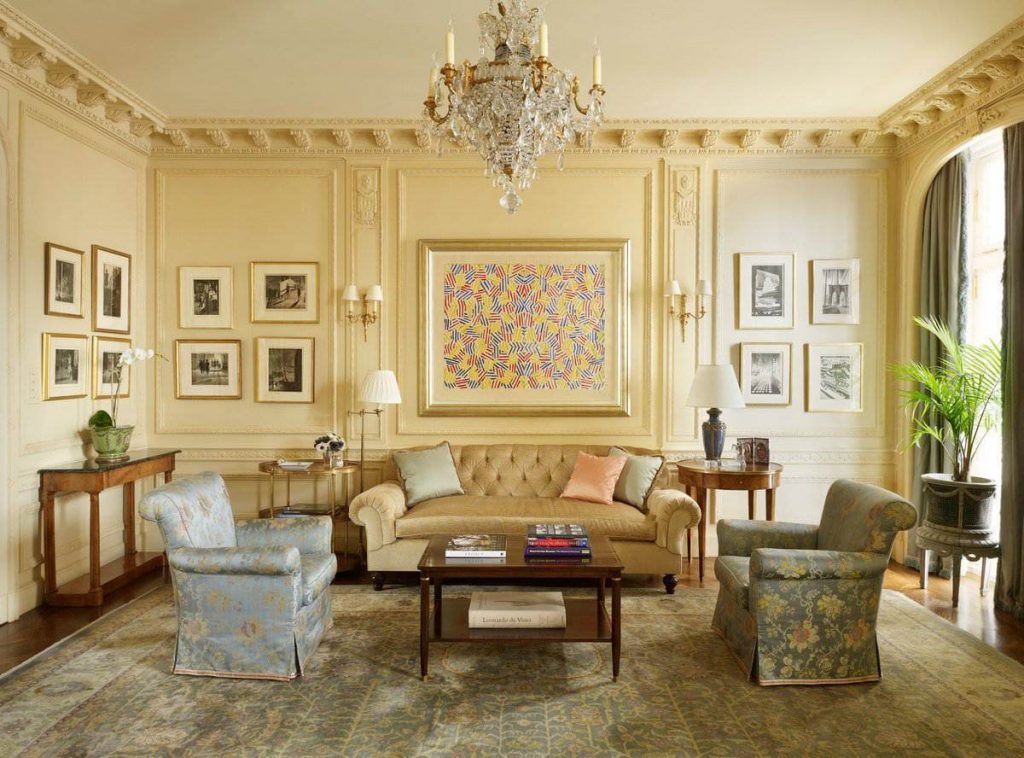 What to AVOID When Styling a Traditional Space
What to AVOID When Styling a Traditional Space
The Traditional design style does not typically feature lacquer finishes, laminate, geometric shapes, streamlined hardware, too much black and white, an abundance of bright colors, and asymmetry.
Is the Traditional design style totally your jam? If so, then you are going to LOVE these retailers:
-
International
Europe:
There’s plenty more where that came from; why not take a peek at another design style spotlight? We think you’ll love the Design Style Spotlight: Transitional.
Transitional TKO: Expert Tips on How to Master This Tricky Design Style
Monday, March 15, 2021 at 8:44pm
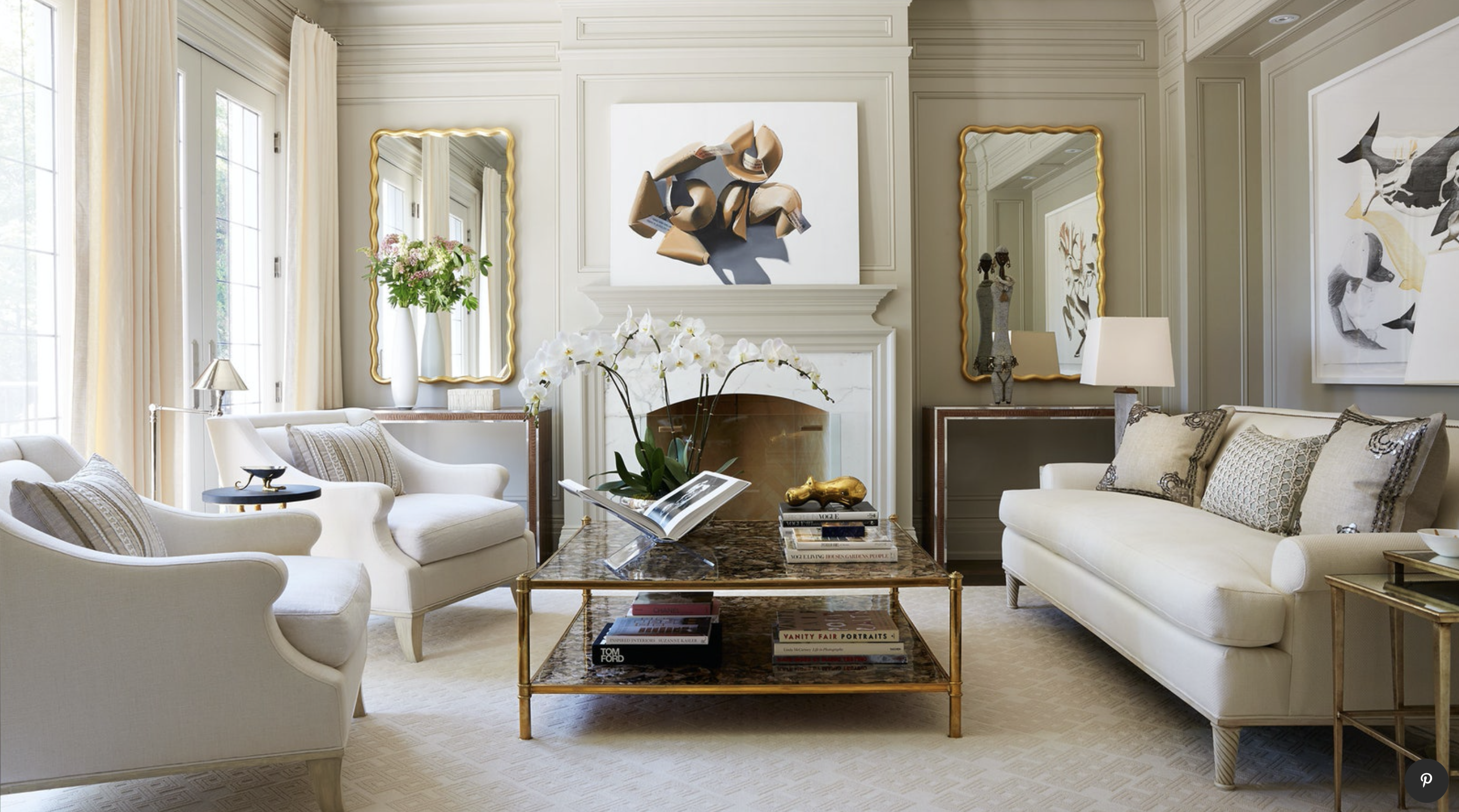
Transitional styles are BACK, baby, and we’re totally digging it! It’s the monkey in the middle of design- a happy medium between Traditional and Modern extremes. If you haven’t heard of this design style before, chances are you’ve still seen it.



